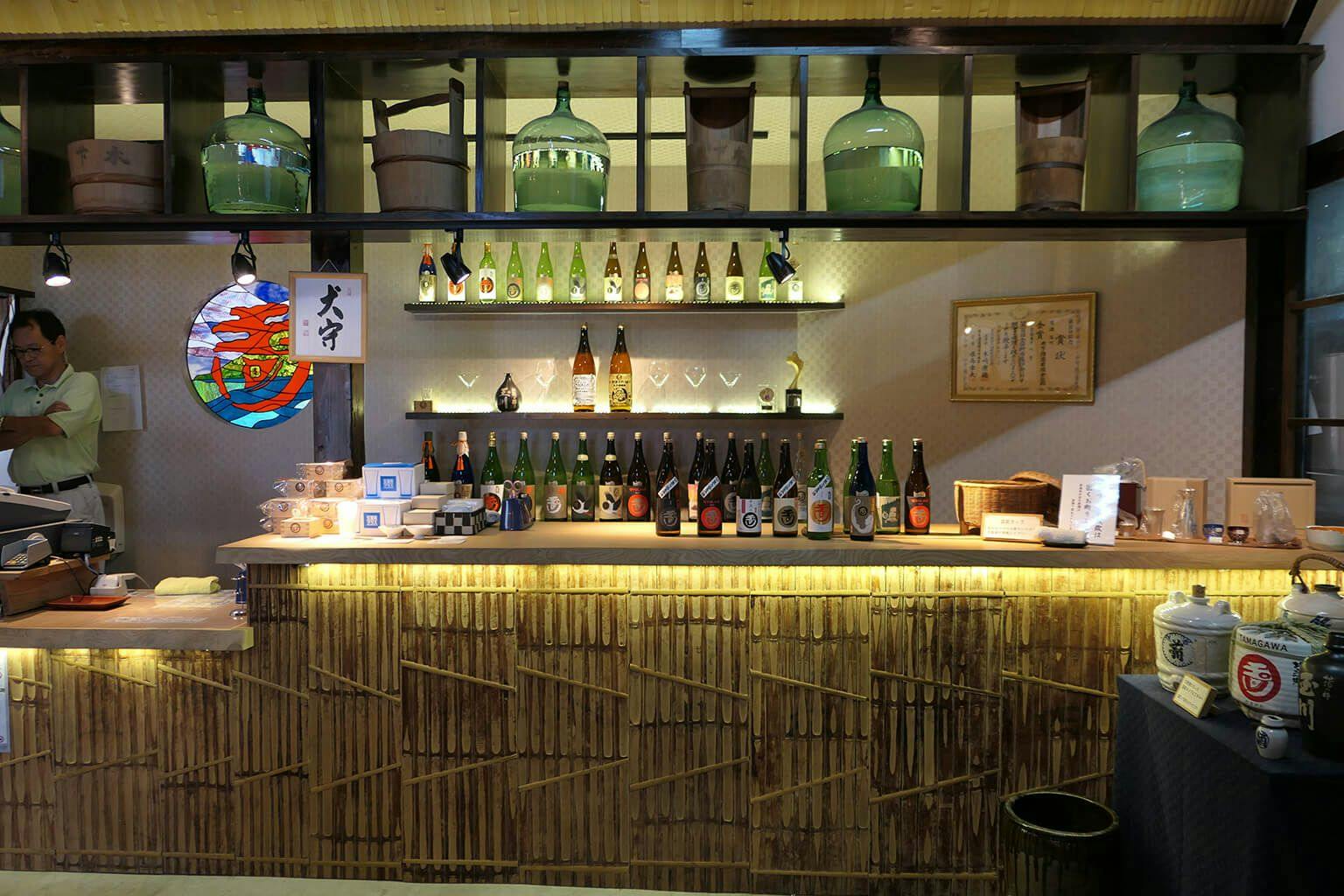

A Guide To Visiting Sake Breweries in Japan
Table of contents.
We can all raise a glass and kampai to the good news that travel restrictions have started to ease in Japan. Packaging your bags may be too soon, but it’s a great time to start planning your next trip . But remember, for a sake lover, no trip to Japan is complete without checking out a sake brewery (“sakagura”).
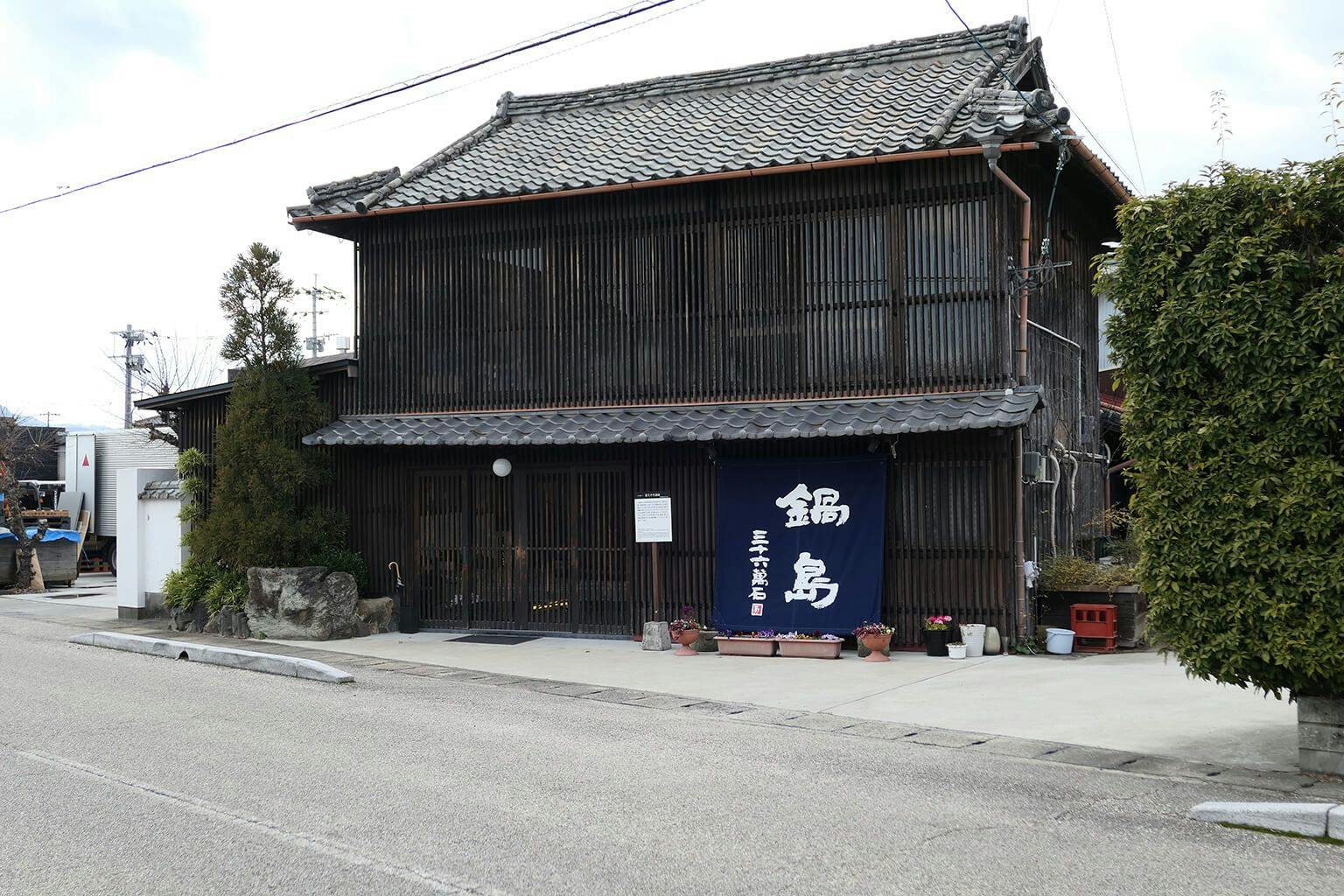
Fukuchiyo Brewing Company in Saga prefecture. | Photo by Domenic Alonge.
Reasons to visit
Here are my top reasons to visit a sake brewery, some resources to start planning and some personal recommendations on where to go for the undecided.
Reason 1: Craftsmanship
Premium sake is made with a high degree of skill and care. Knowing this is one thing, but seeing the process at work is humbling to behold, and deepens one’s appreciation for the people who turn rice, water, yeast and koji into delicious sake.
Many “toji,” or master brewers, will insist that they are still perfecting their craft even after decades of brewing. They often oversee crucial parts of the brewing process, such as “shinseki” (rice soaking) with intense focus and a stopwatch in hand.
Reason 2: Architecture and experience
Making your way through a sakagura is a sensory journey, from the warm, comforting scent of steaming rice rising to the rafters, to the inviting nutty notes creeping from the koji room, and the ever-changing subtle aromas of the fermenting sake. Whoever said “There’s nothing like the smell of baked bread,” never made it to a sake brewery!
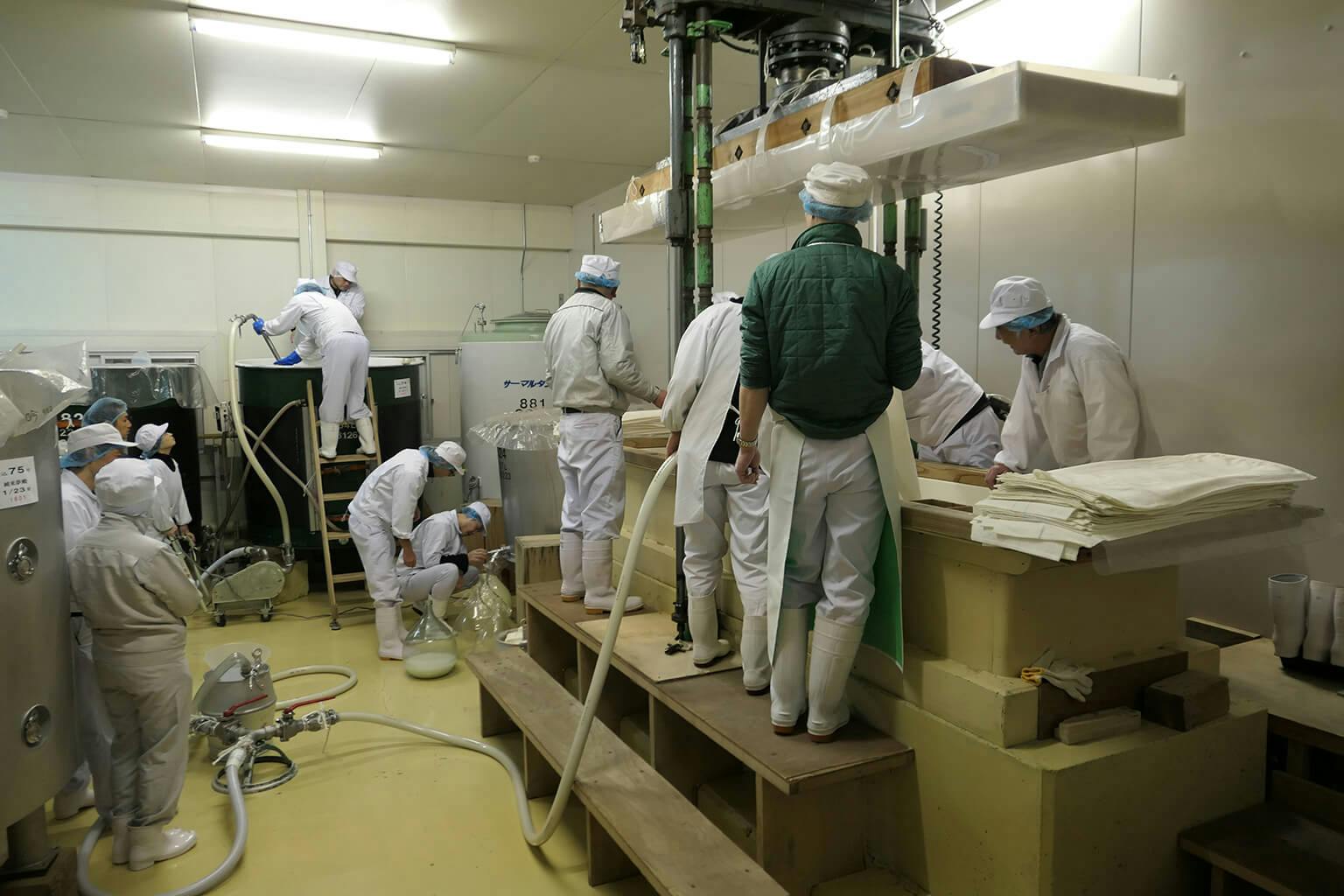
All hands are on deck when it comes to pressing super-premium daiginjo sake. | Photo by Domenic Alonge.
Visually, the traditional architecture adds another dimension to the experience. Many breweries still use centuries-old buildings featuring traditional construction techniques. In the Saijo brewing district of Hiroshima, “namako kabe,” an Edo-era textured pattern of blue and white plaster, skirts the lower sections of the exterior walls of many sakagura. Inside some older breweries, bare wooden beams are bound with intricate joinery forming an arch above the tall tanks of fermenting sake. After a few sips in the tasting room, you may feel as if you have traveled back in time!
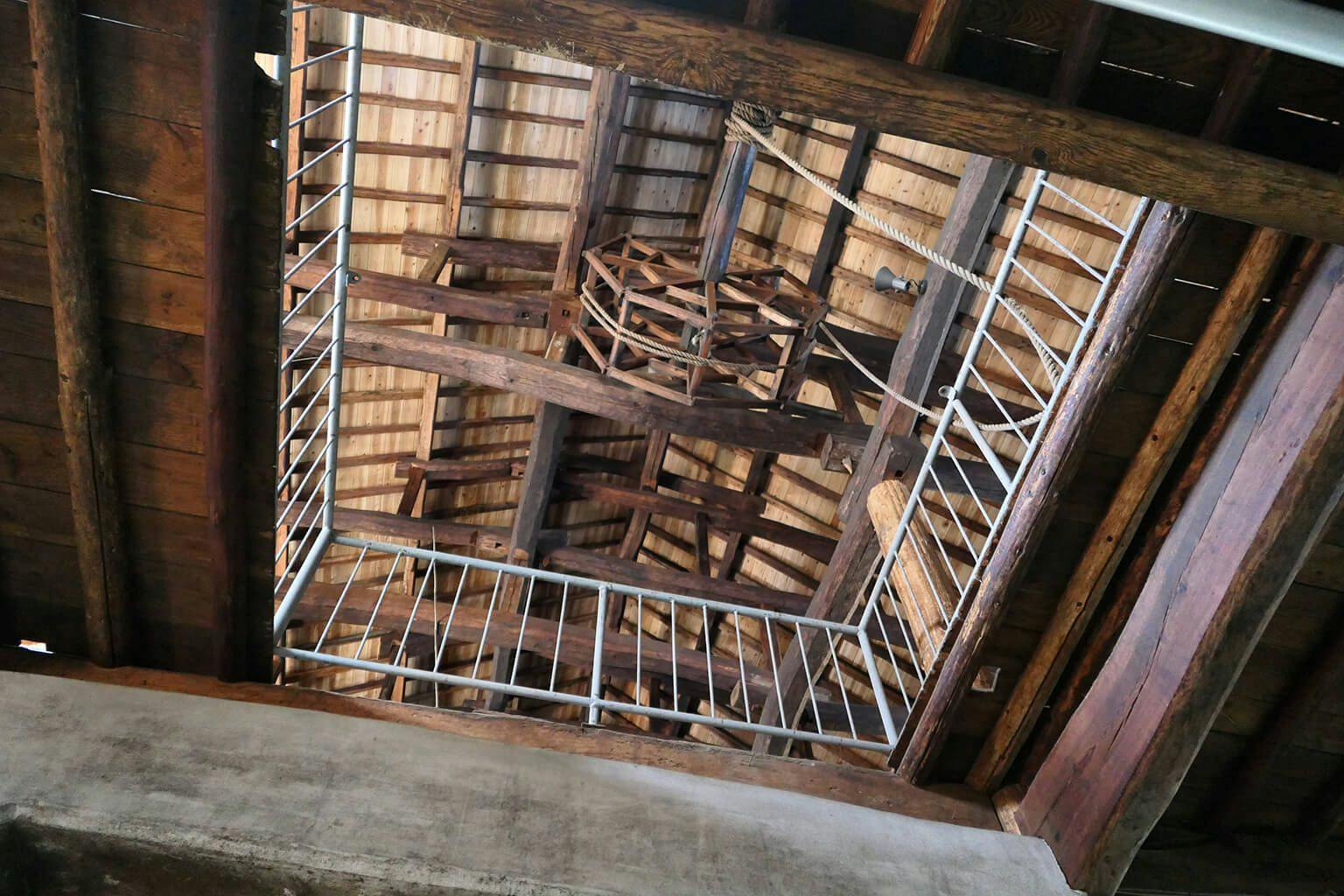
Exposed beams and antiquated equipment are still on display in some breweries. | Photo by Domenic Alonge.
Reason 3: Japan-only sake
Craft beer fans know that a brewery visit gives you access to brews that might not travel outside the local neighborhood. The brews at the two extremes of the sake spectrum — bold and rich “koshu” (aged sake) with its amber hues; and fresh, bright and effervescent “nama” (unpasteurized) sake — tend to be more readily available at the brewery, often served by the very people who make it. Fill up that suitcase for the return trip!
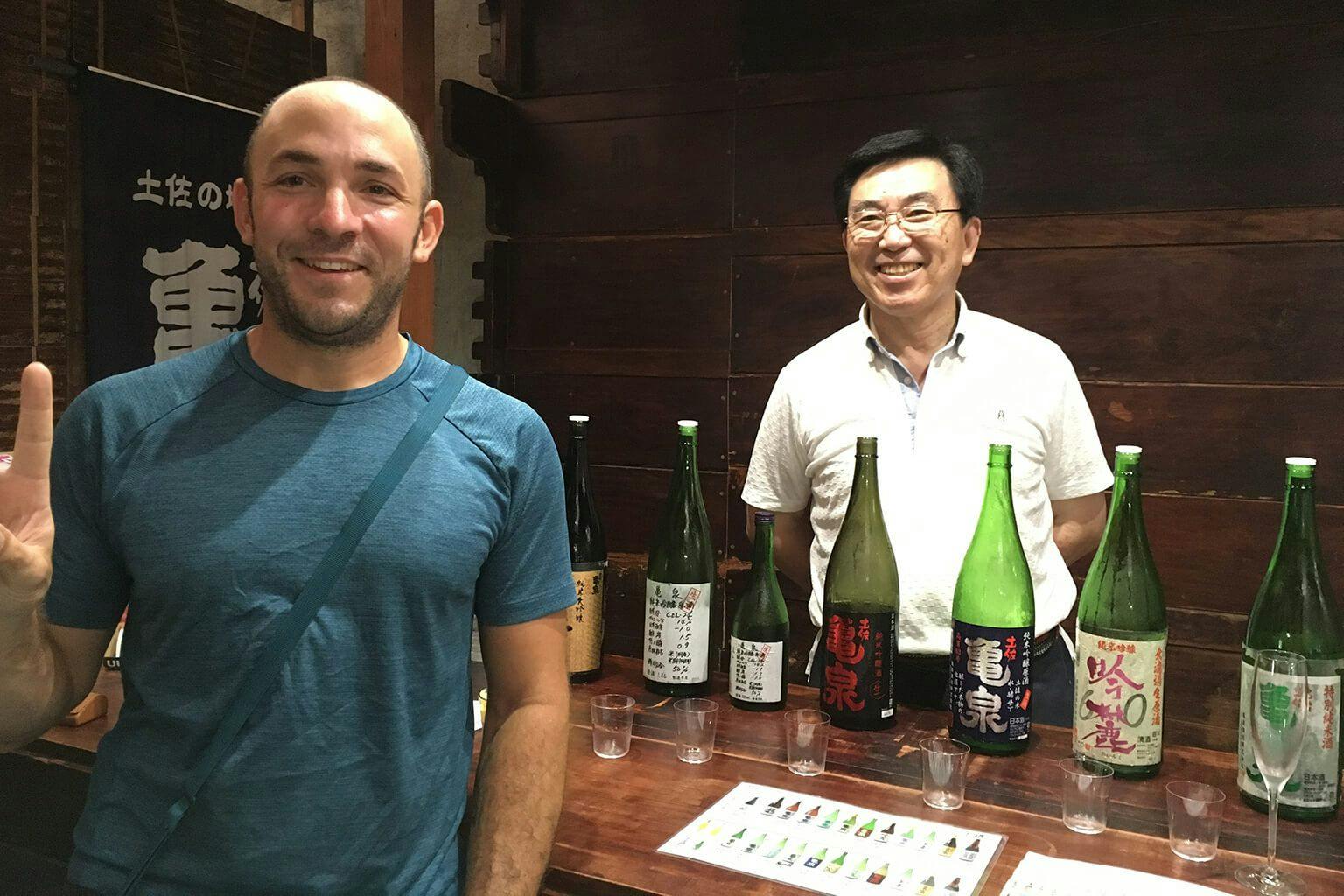
If you’re lucky, you might be served by a master brewer. | Photo by Domenic Alonge.
Finding a brewery to visit and making an appointment
Sake breweries are production centers first. Understandably, some don’t accept visitors. Some have a tasting room and shop, but some might not. Some offer complete tours and tastings for free. Others charge a small fee for the experience. With this in mind, it is highly recommended that you plan ahead using the resources below and make reservations where required.
Independent travelers can begin planning a trip through the Sakagura Tourism website, maintained by the Japan Sake and Shochu Makers Association. Breweries all around Japan are listed in English and are searchable by region and by name. Particularly helpful is the “Tour Available” icon that tells you whether or not you can expect a tour of the facilities and if there is a charge for the tour. Also helpful, the site indicates if there is English spoken at the brewery.
Guided sake tours
For travelers with no Japanese language skills or who desire a more curated experience, there are tour companies that arrange and guide you on tours of breweries as well.
Kyoto Insider Sake Experience offers a variety of tours and tastings in and around Kyoto.
Saketours.com offers multi-day, all-inclusive and immersive package tours incorporating brewery visits with gourmet meals and special access to regional food producers and artisans. It is run by well-respected and knowledgeable sake industry professionals who focus on memorable and under-the-radar sake and cultural experiences.
And finally, for travelers who wish for some guidance but may want to explore at their own pace, I recommend Jim Stewart ’ s Japan: Sake Breweries of Tokyo, Kyoto and Kobe. This book has general travel advice, history and background on breweries, and hand-drawn maps to get to you from train station to brewery. The author also has recommendations for restaurants and sake shops nearby.
What to expect
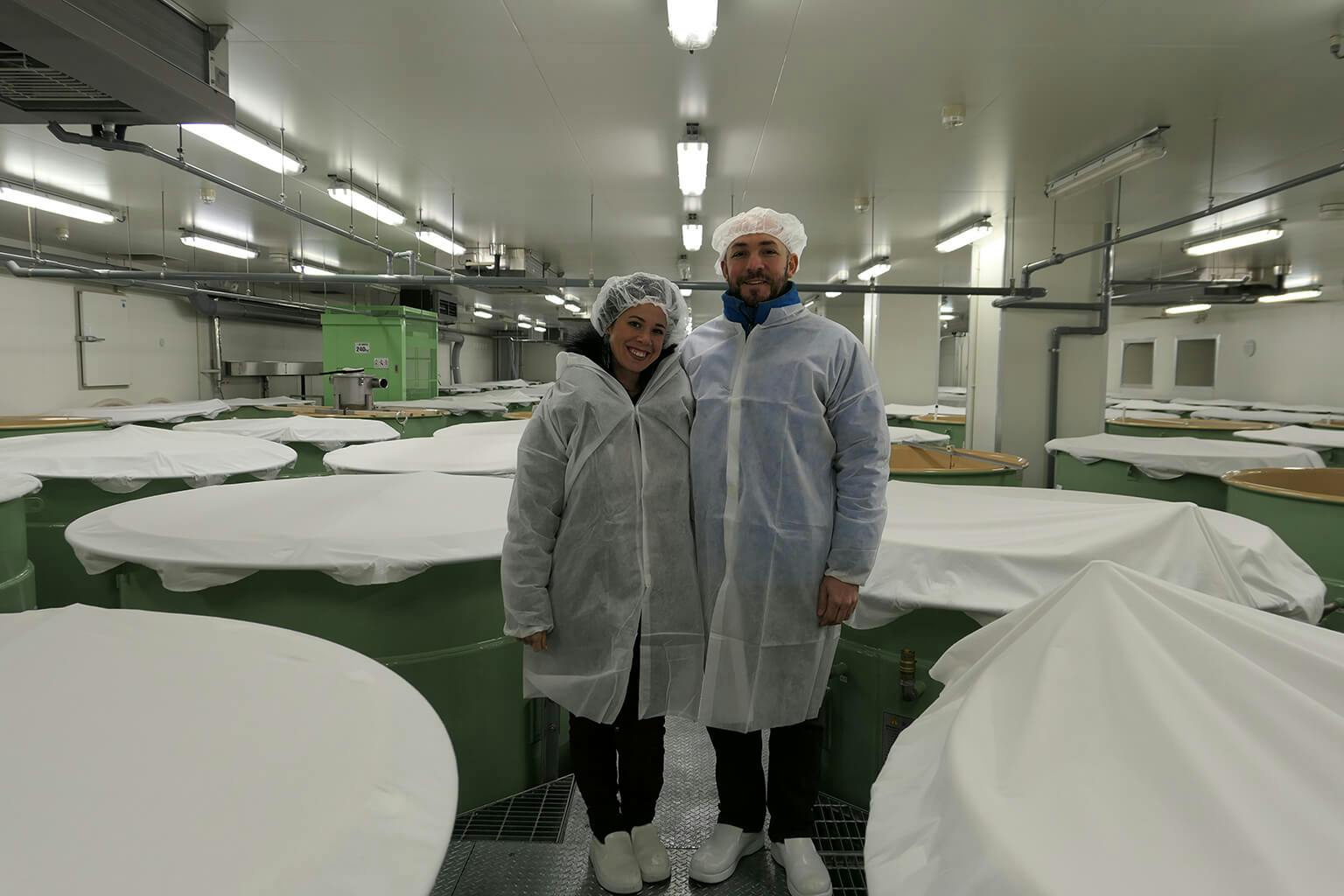
Sake breweries prioritize a sanitary environment. You may be asked to suit up! | Photo by Domenic Alonge.
When the day of your visit finally arrives, there are a few things to keep in mind:
- Dress warmly in winter. Bring an extra layer in summer. Sake ferments at low temperatures and breweries are not heated.
- To avoid microbial contamination, brewers often ask that visitors do not eat natto (fermented soybeans) or yogurt prior to their visit, or wear perfume or cologne.
- Always ask before taking photos of any brewery operations or staff.
10 recommended brewery visits
Here are 10 recommended breweries to visit that offer fun, educational and unique experiences.
Ishikawa Brewery (Tokyo)
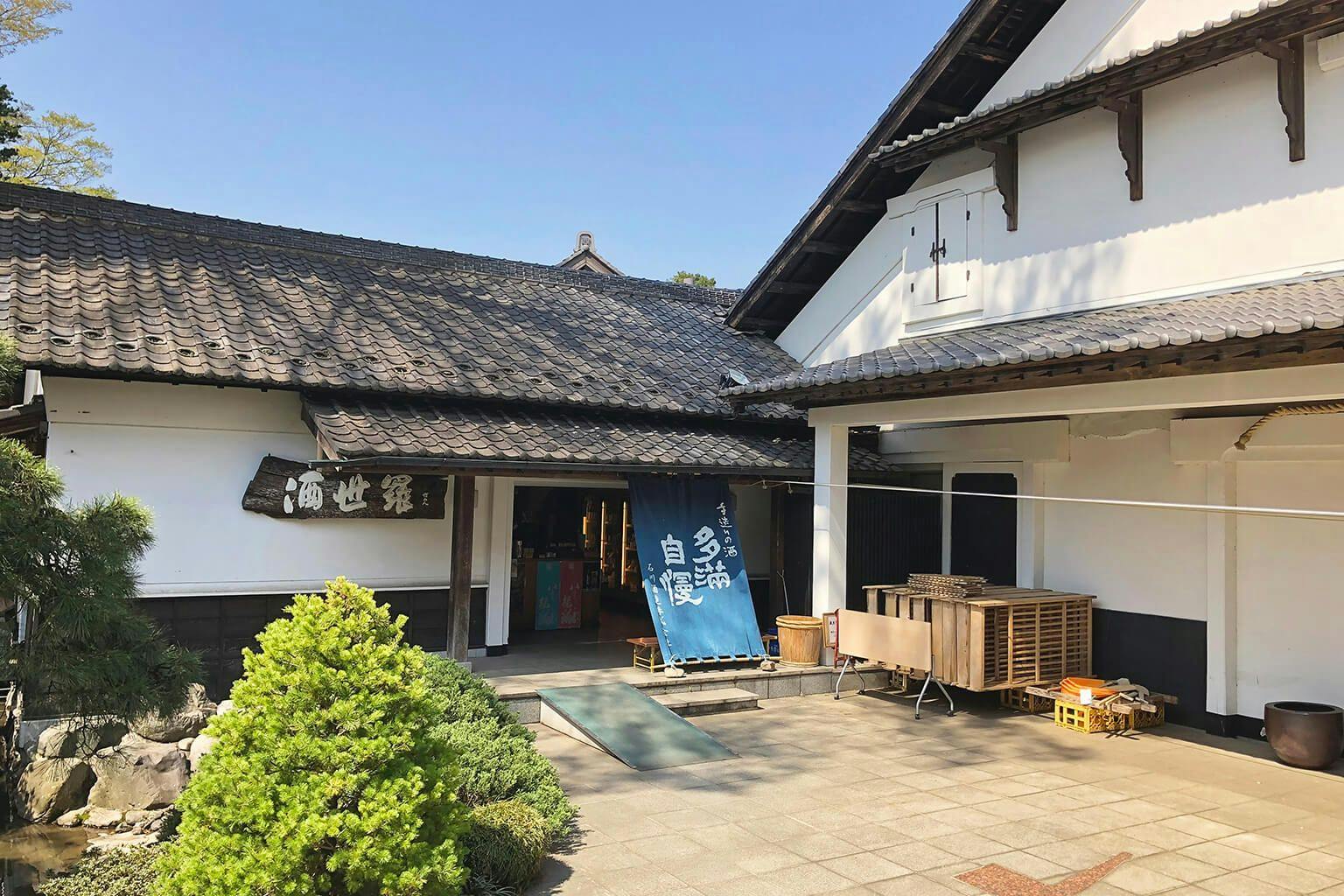
Photo by Hayataro Sakitsu .
Off the beaten path and about 40 minutes from Shinjuku by train, this brewery has traditional architecture and an adjoining restaurant as well as a garden in which to enjoy some sake. Brewing sake since 1863, they welcome guests to tour year round and the website makes it easy to arrange a visit.
Related post: Sake-Tasting Tour at Ishikawa Brewing Company, Tokyo by Hayataro Sakitsu
Gekkeikan Okura Sake Museum (Kyoto)
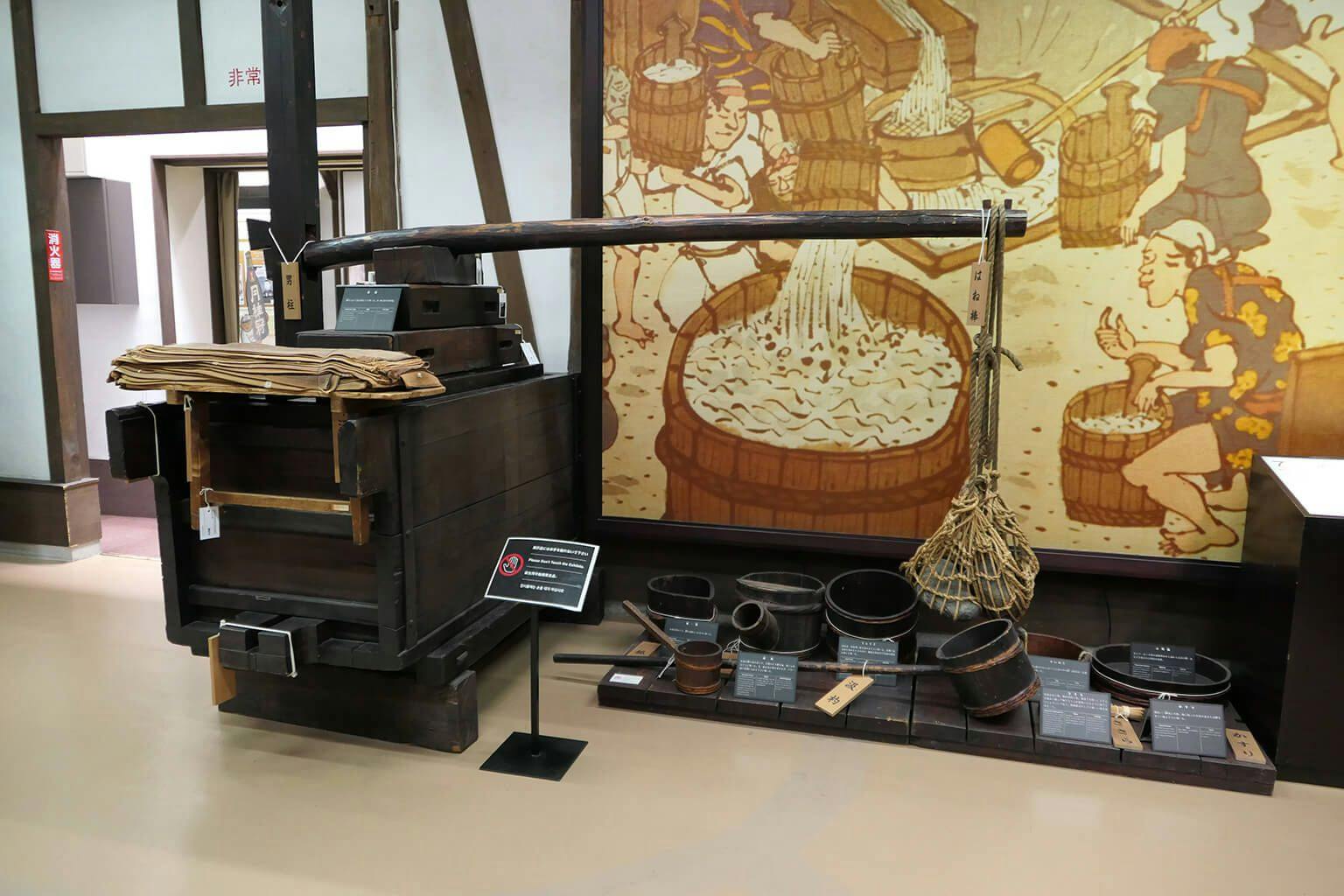
Gekkeikan Okura Sake Museum in Kyoto. | Photo by Domenic Alonge.
This is a must-see destination for any sake lover visiting Kyoto. Gekkeikan is home to a museum showcasing the history of sake brewing and culture in Fushimi, with an impressive collection of older sake brewing equipment. The best part is that no reservations are required for small parties to visit.
Fujioka Brewing Company (Kyoto)
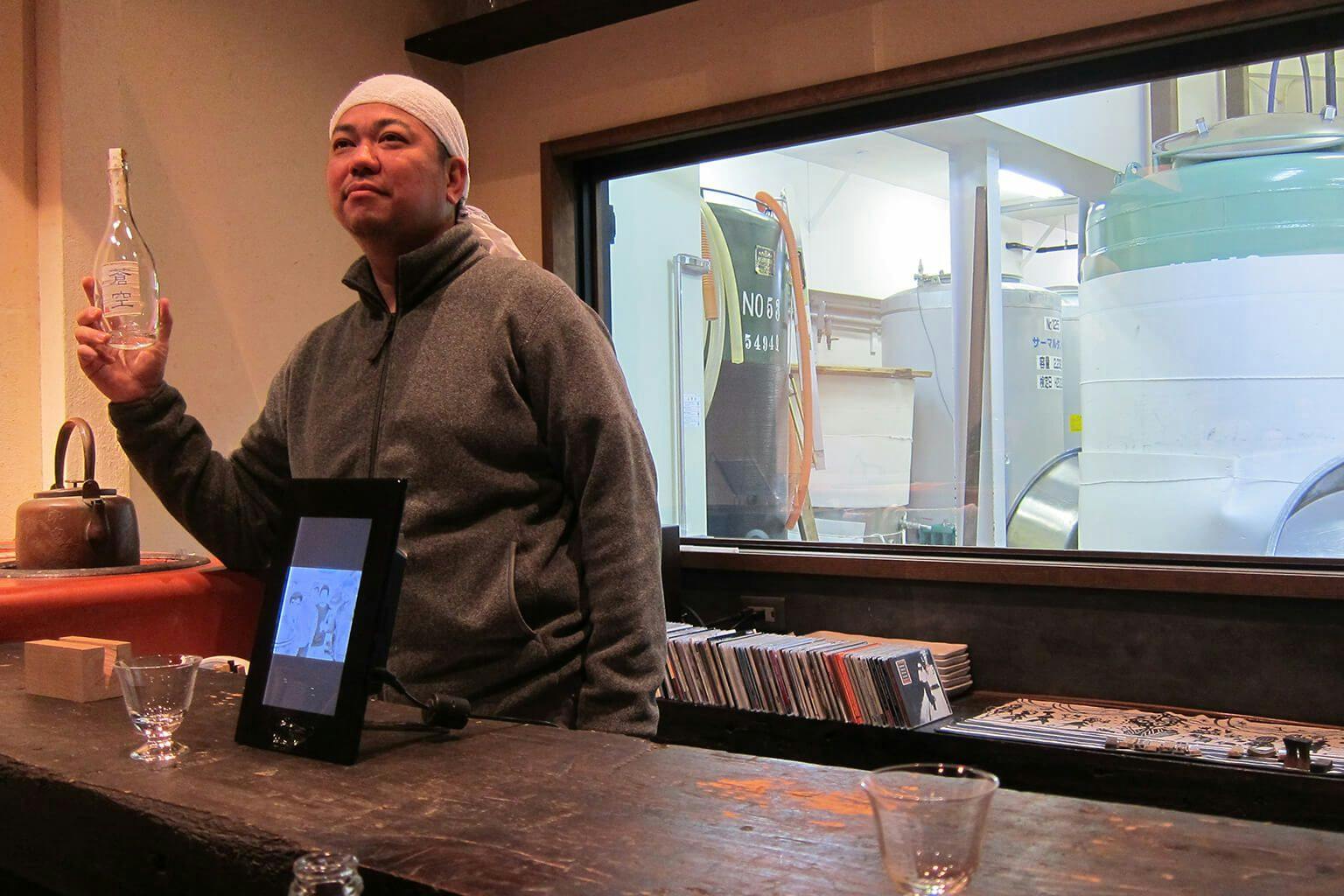
Masaaki Fujioka proudly pours his Sookuu sake at Fujioka Brewing Company in Kyoto. | Photo by Domenic Alonge.
Fifth-generation owner and head brewer Masaaki Fujioka is on a relentless pursuit to source the best ingredients to brew his sake under the Sookuu label. He reopened his family brewery after a seven-year closure and brews exquisite sake from rice he himself grows. This small brewery has its own sake bar called Sake Bar EN where you can have the memorable experience of sipping the sake as you watch it being made!
Daimon Brewing Company (Osaka)
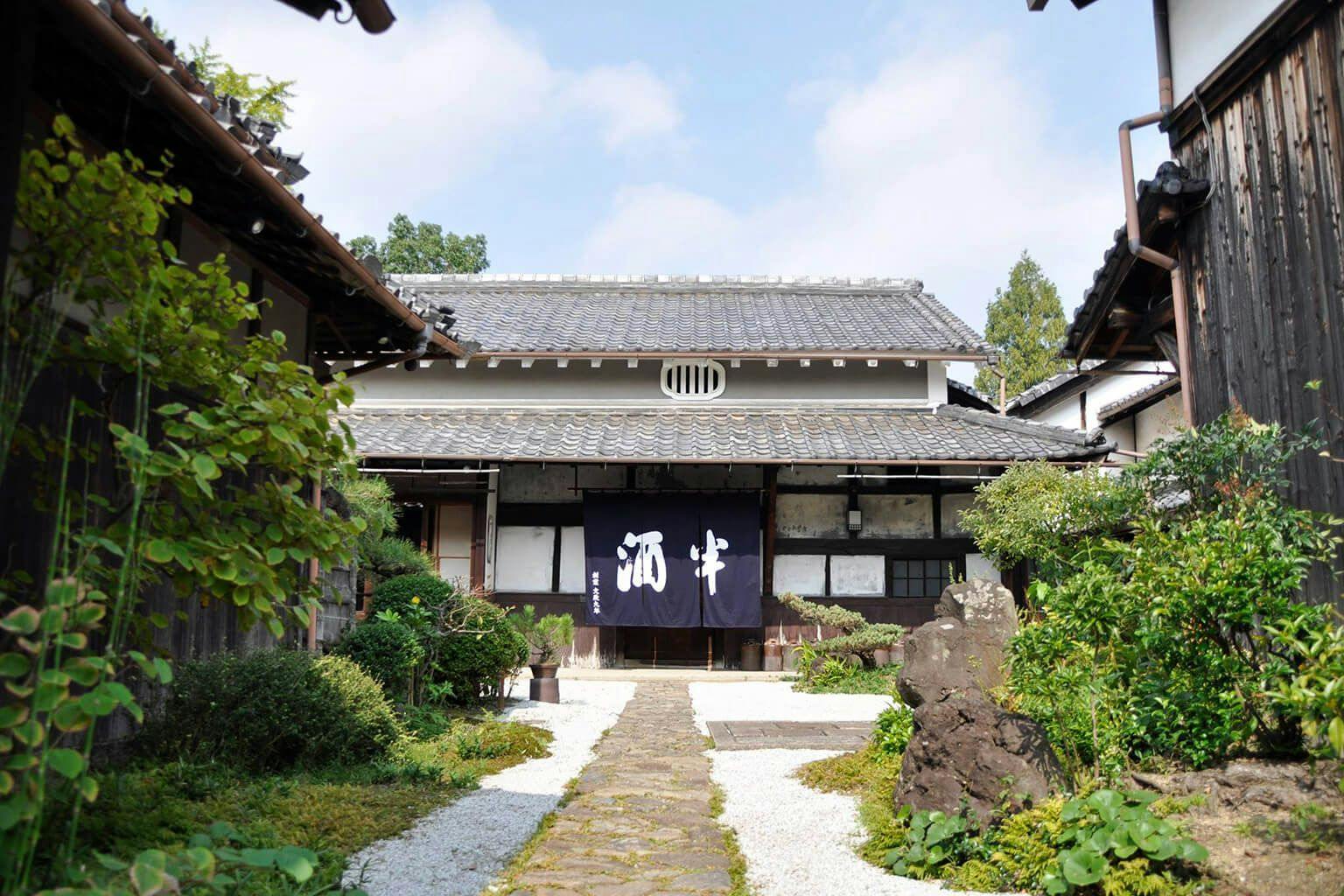
Courtesy of Daimon Brewing Company.
If you find yourself in Osaka, you must visit Daimon, makers of one of my favorite nigori sake. The centuries-old house and garden that adjoin the brewery set the mood as you enter Daimon Brewing Company. Tour the brewery, taste their versatile and impeccable sake, then enjoy a farm-to-table meal featuring local cuisine under the exposed wooden beam roof at the upstairs restaurant, Mukune Tei. Special English language tours are available.
Izumibashi Brewing Company (Kanagawa)
While I have never visited this brewery personally, it is at the top of my list to visit because they grow their own rice. Izumibashi is a must for anyone who wants to see sake making from field to bottle. A visit to this brewery includes a walk through their own rice fields, sake tasting and local snacks. I can't imagine a better way to spend an afternoon!
Kumazawa Brewing Company (Kanagawa)
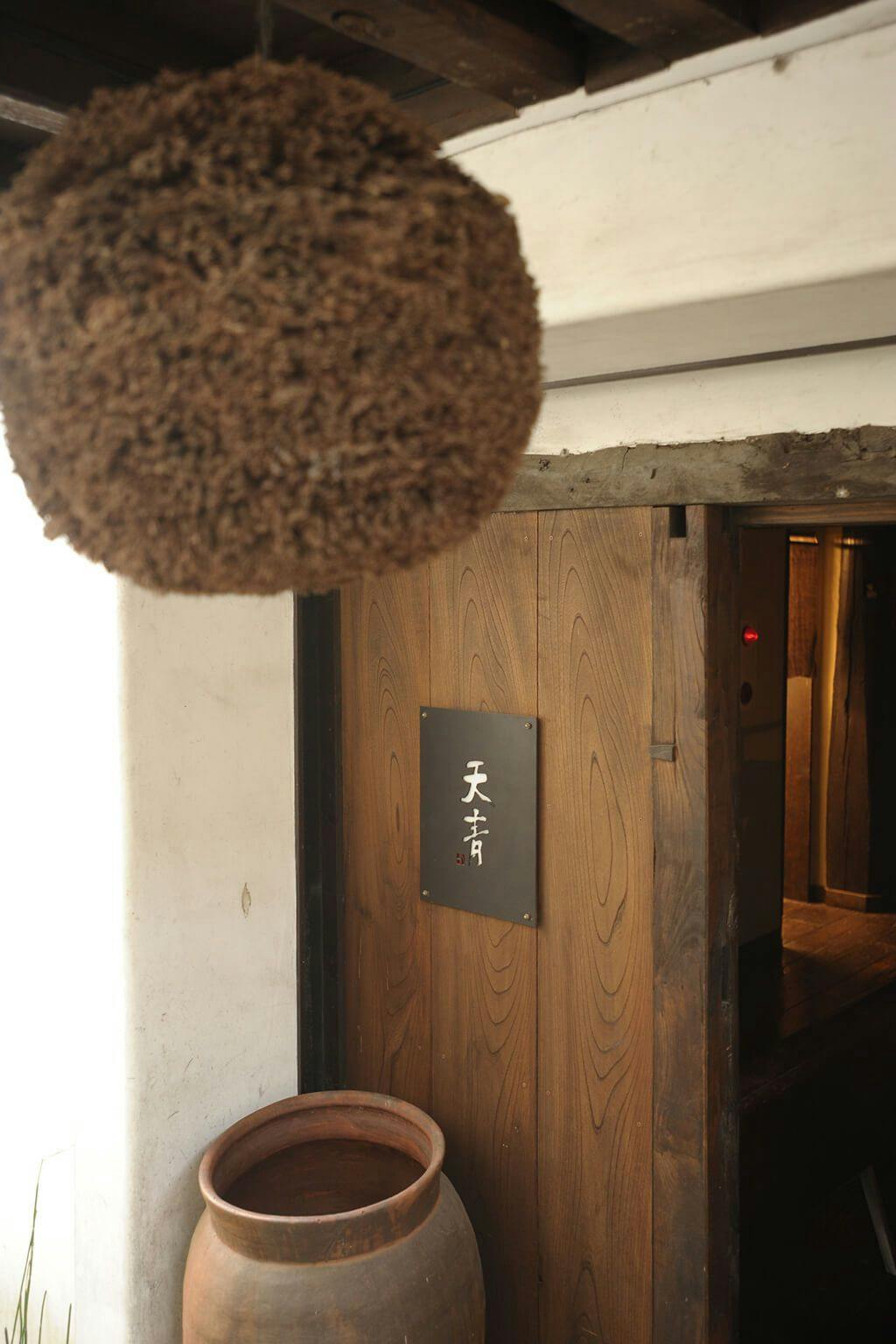
Courtesy of Kumazawa Brewing Company.
While no tour is available, Kumazawa Brewing Company is still a destination for sake lovers and foodies alike. The brewery houses two restaurants and a cafe where you can try all kinds of food paired with their sake. Make sure to try Mokichi Trattoria, where you can follow the toji’s recommendation and pair their sake with pizza! Not only do they make delicious sake with a gentle minerality, they also brew craft beer. Visitors can also try their sake brewed with local rice from Chigasaki and proprietary yeast. Shop Kumazawa sake at Tippsy and read our exclusive interview with their toji about the brewery’s Tensei series.
Choryo Brewing Company (Nara)
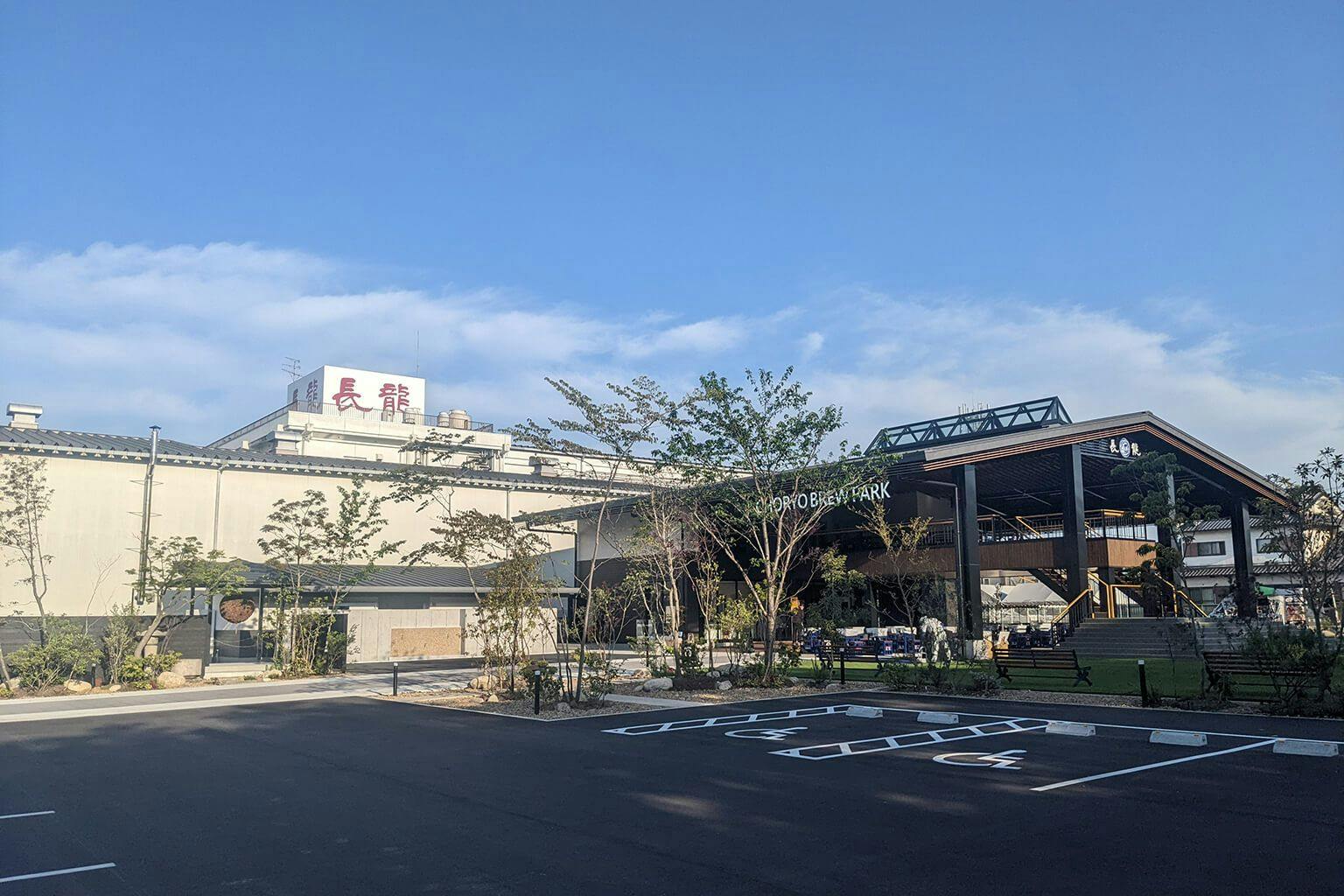
Photo by Rina Liggett.
Nara prefecture is perhaps more intricately linked to the history of sake brewing than any other place in Japan, so if you’re in Nara, why not visit a sake brewery? Choryo Brewing Company is passionate about their process, but still offers visitors a casual experience. Their recently opened Brew Park combines two of my favorite things: sake and nature. Enjoy their sake and beer in the open air while munching on food from a visiting food truck. If you visit during the spring, you’ll be able to bask in the cherry blossoms in the park as well. Shop Choryo sake at Tippsy and read our exclusive interview with their sales manager about “taru sake” (sake stored in wooden vats).
Suehiro Brewing Company (Fukushima)
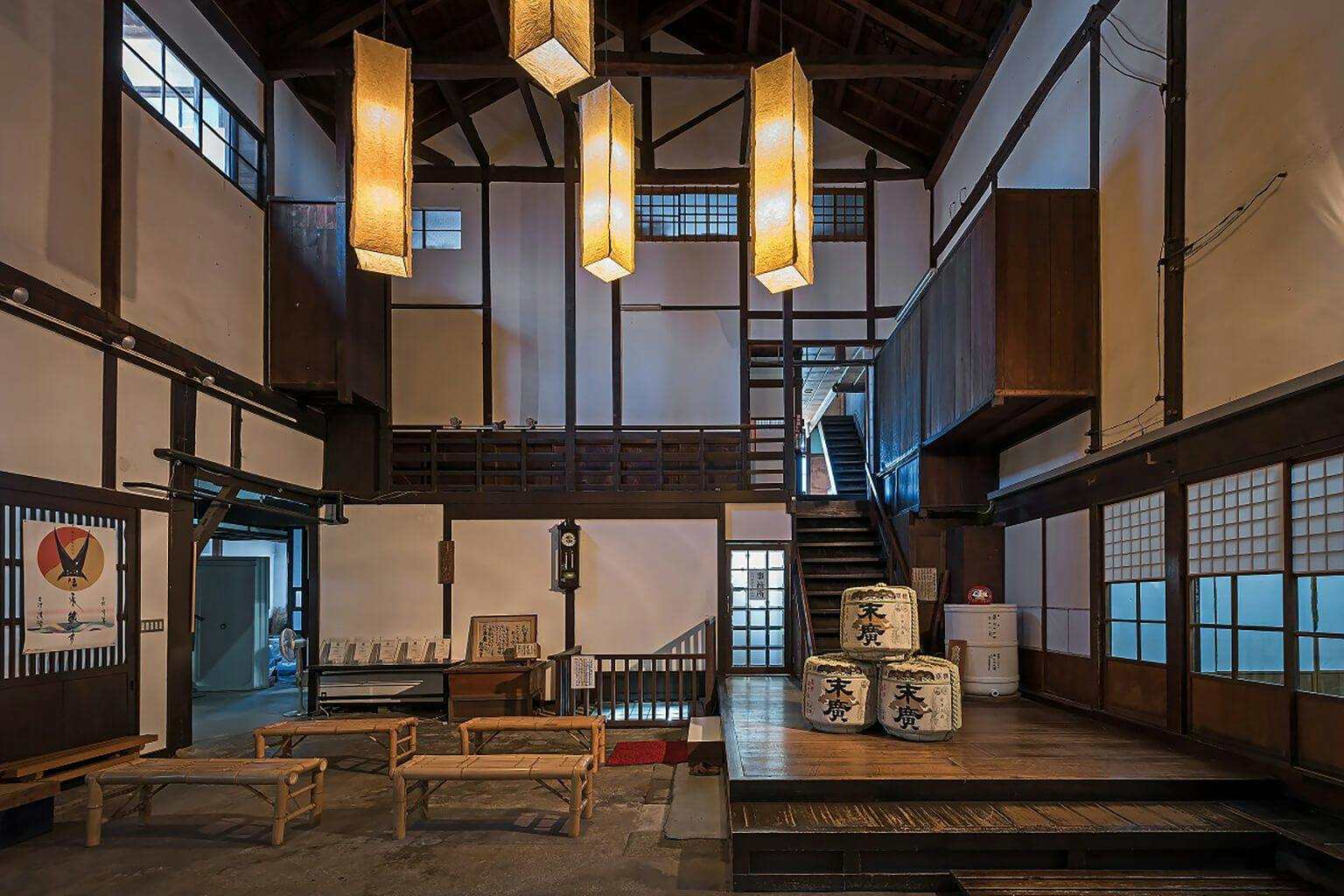
Courtesy of Suehiro Brewing Company.
Visitors to Fukushima prefecture in search of sake should consider a stop at Suehiro Brewing Company, which was voted “the most fun sake brewery to visit” by one of Japan’s well-known newspapers. The grounds feature the original structure built in 1873 — constructed without a single nail — which remains unaltered to this day. Subject to pandemic restrictions, visitors may be able to take part in a free tasting upon their visit. Please contact the brewery before visiting to confirm. Shop Suehiro sake at Tippsy and read about the brewery’s philosophy in our exclusive interview with their brewery president.
Suigei Brewing Company (Kochi)
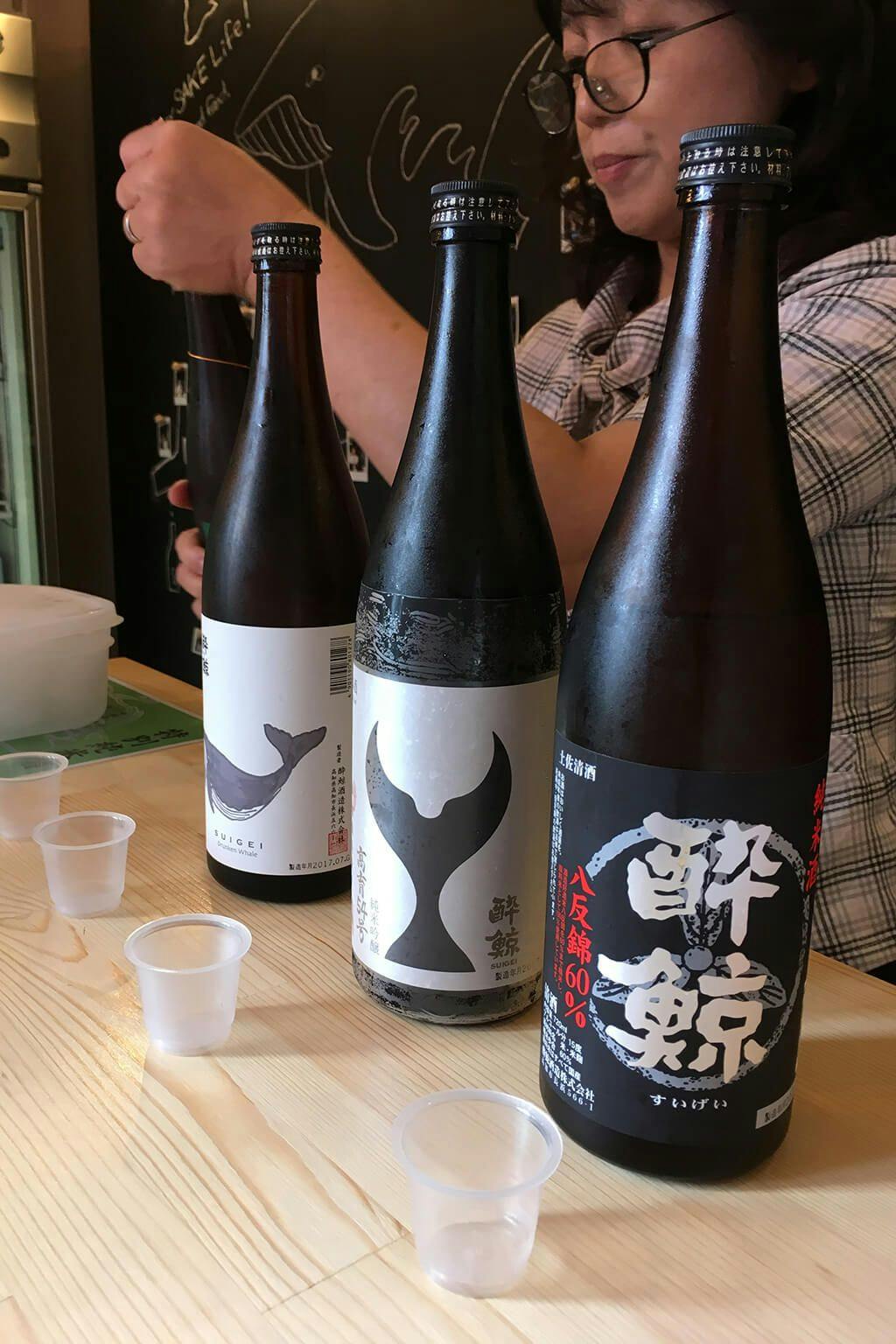
Photo by Domenic Alonge.
In 2018, Suigei Brewing Company opened their new, high-end brewing facility to welcome sake lovers from around the world. Although currently on pause, the brewery hopes to resume tours and tasting sessions at their sleek new production facility under their motto, “Enjoy sake life.” Start your day by sampling their elegant daiginjo collection before heading out for a night on the town to enjoy more Suigei sake with the local delicacy of katsuo tataki (seared and seasoned skipjack tuna). Shop Suigei sake at Tippsy and watch our tasting video for Suigei “Tokubetsu Junmai.”
Kobe Shushinkan (Hyogo)
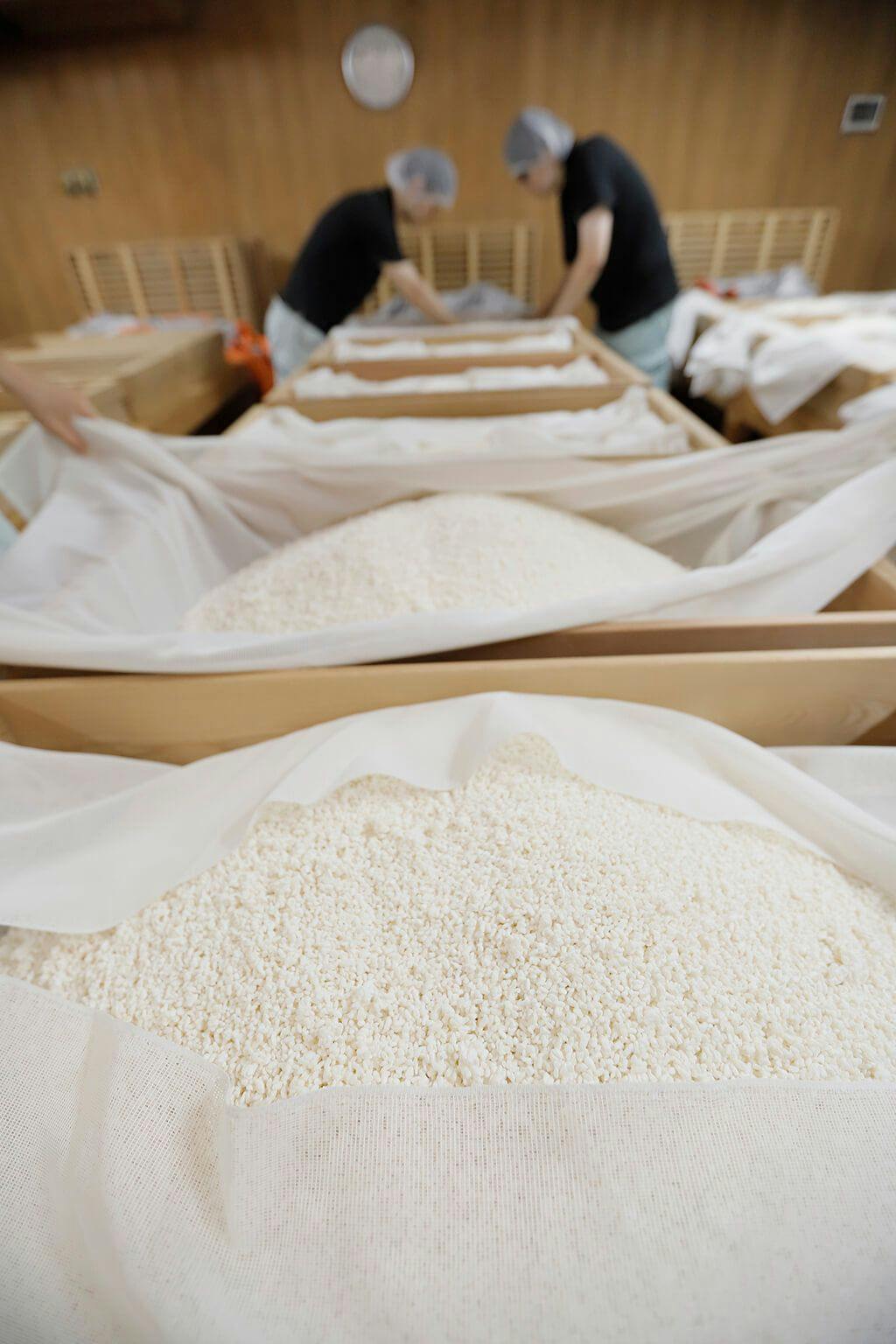
Courtesy of Kobe Shushinkan.
Kobe Shushinkan offers multilingual resources to visitors who take a brewery tour, including videos and leaflets in English. Reservations are required, but the experience is worth it. You will be able to tour the production facility and finish with a sake tasting free of charge. More sake is brewed in this historic part of Kobe than anywhere else in Japan. If you’re passing through, this place is a must-see. Shop Kobe Shushinkan sake at Tippsy and watch our tasting video for Fukuju “Blue.”
Deepen your understanding of sake
Regardless of which brewery you choose to visit, you are sure to have an experience that stays with you whenever and wherever you raise a glass of sake. It will surely deepen your appreciation for the best beverage in the world.

Domenic Alonge
Domenic Alonge is an Advanced Sake Professional, International Kikizake-shi. His work in sake breweries in Japan, Europe and the U.S., as well as his experience as the owner of North Carolina’s first sake-only bottle shop inform his writing and his videos which he now creates as the Sake Geek. Follow him on YouTube and on sake-geek.com .
Learn about Tippsy’s Editorial process
Recent posts
All about sake.
Welcome to your sake journey

What is Sake?

What Is Sake Made of and How Is It Made?

What Is Rice Polishing Ratio?

Types of Sake

How To Store Sake

How To Drink and Serve Sake

Food Pairing Guide

Best Sake Bottles and Brands for Beginners
Sign up to receive special offers and sake inspiration!
- Skip to content
- Skip to primary sidebar

Food Tours Japan
Eat, Drink & Cook in Japan
Sake Tasting Tokyo: 8 Best Experiences & Brewery Tours
Tokyo is a perfect place to experience sake and the culture of Japan’s iconic drink. From sake testing, food pairing dinners and brewery tours, there’s something ‘sake’ to suit all tastes.
I’ve selected the best tours with English-speaking guides. I’d like you to have memorable sake experiences, as I’ve had while living in Japan for eight years.
After reading this, you’ll find the best Tokyo sake tasting or brewery tour for you. Let’s get to it!
Not sure what experience to take? Compare features and prices with my at a glance guide .
Price per person based on two people attending a tour : $ = up to $99; $$ = between $101 & $149; $$$ = $150+. Some tours offer discounted rates for groups of more people.
1. Unlimited Sake Tasting Experience and Tsukiji Market

Enjoy a fun Tokyo sake-tasting experience on an unforgettable day out.
- Discover over 50 kinds of sake on an unlimited sake-tasting session with snacks
- Try a range of sake at different temperatures with expert commentary
- Explore Tsukiji Market and buy seafood and other treats to pair with your sake
- Family-friendly with desserts, snacks and soft drinks available for kids
- Includes: Unlimited sake tasting with a professional sake sommelier, snacks and soft drinks and a walking tour of Tsukiji Market
- Location: Tsukiji
- Duration and start time: 3 hours, 12pm
2. Tokyo Sake Tasting Experience

Drink like a local with a sake-loving guide!
- Taste six different types of sake with accompanying dishes from around Japan
- Visit three diverse places, like an izakaya (Japanese-style pub) and tachinomiya (standing bar)
- Sample all kinds of sake, including cold and warm
- Learn about the differences in sake styles like honjozo-shu and daiginjo-shu
- Let your host educate you about sake culture while you drink and eat tasty food
- Includes: 6 different sake, Japanese dishes, visiting three places, personalised experience and walking tour and hotel meet-up
- Location: Central Tokyo, like Shinjuku (flexible)
- Duration and start time: 3 hours, flexible start time
Tokyo Sake Tasting Experience >>
3. Wagyu Beef and Sake Pairing Dining Experience

An exceptional and unforgettable Tokyo gourmet adventure.
- Dine omakase -style (leave it to the chef) while the chef cooks in front of you
- Taste seven distinct Wagyu dishes and generously-poured types of sake
- Learn about different kinds of sake and why they’re paired with each Wagyu dish
- Interact with the fun and friendly chef and sake sommelier in an intimate setting
- Highly rated and five-star reviewed dining and sake tasting experience in Tokyo
- Includes: 7 courses of Wagyu beef paired with 7 different sake in a stylish restaurant
- Location: Sumida City (near Tokyo Skytree)
- Duration and time: 6.00pm, 2 hours
Wagyu Beef & Sake Pairing Dinner >>
Compare Tokyo Sake Tasting and Brewery Tours: At a Glance Guide
Compare whether each experience includes sake tasting, visiting sake breweries, food and the price with my at a glance comparison table.
Click into a tour for more information or jump straight ahead and book!
* Sake tasting and lunch are an additional cost (the tour includes visiting two sake breweries)
4. Taste Seven Types of Sake with Food Pairings

Immerse yourself in sake culture with a Japanese sake professional.
- Enjoy seven different kinds of sake, from dry to sparkling to savoury to sweet
- Find out what sake goes with different types of food
- Discover the history of sake and its deep roots in Japanese culture and religion
- Learn how sake is produced and the diverse styles brewed
- Includes: 7 types of sake paired with food and a lesson from a Japanese sake sommelier
- Location: Minato City (near the Tokyo Tower)
- Duration and start time: 1 hour & 15 minutes, 11.30am or 5.30pm
5. Sake Tasting Session in Tokyo with a Sake Sommelier

A highly-rated, great-value sake session with a knowledgeable, friendly, and fun guide
- Enjoy tasting classic types of sake at a Tokyo sake bar
- Learn which style is best for cold, room and warm temperatures
- Find out the best food to pair with different sake
- Discover how its brewed and sake grades like junmai and junmai ginjo
- Understand how to read a sake label
- Includes: 6-7 different sake, a lesson from a sake sommelier and some information to take home
- Location: Shinjuku
- Duration and start time: 1.5 hours, 4pm
Tokyo Sake Tasting Session >>
6. Sake and Food Pairing with a Sake Sommelier

A unique experience to enjoy sake in the same way, it’s savoured in Japan.
- Taste six different types of sake paired with specially chosen snacks
- Discover your go-to sake and create your own tasting chart
- Learn about sake in a small group with a sake sommelier
- Open your mind and change your image of sake
- Booking requires a minimum of two people
- Includes: 6 sake tastings, snacks and a session with a sake sommelier
- Duration and start time: 2.5 hours, 1.30pm
7. Tokyo’s Oldest Sake Brewery, Sake Tasting and Riverside Walk Tour

Experience sake culture in its natural setting and escape the hustle and bustle of the city.
- Discover a 300-year-old sake brewery with a guided tour
- Sample a variety of sake with a tasting session
- Learn about sake production techniques and its way of life in Japan
- Savour a delicious lunch overlooking a rushing river
- Embark on a memorable and relaxing journey through sake and nature
- Includes: A private guided tour of a Tokyo sake brewery and riverside walk, sake tasting, lunch and alcoholic and soft drinks
- Location: Tama River Valley (meet at Shinjuku)
- Duration and time: 8.55am, 7 hours
Tokyo Sake Brewery & Tasting Tour >>
8. Tokyo Sake Brewery Tour

Get a deep dive into sake and Tokyo’s breweries on this fascinating tour.
- Enjoy a guided tour of two of Tokyo’s sake breweries, Ishikawa and Ozawa
- Discover the history of sake and how it’s made
- Customise the Tokyo sake brewery tour to suit your taste
- Great-value fixed price for up to six people
- Additional costs include transportation, lunch, entrance fee and sake tasting
- Includes: A guided tour of two sake breweries and the option to customise the experience
- Location: Two sake breweries around Tokyo (meet at your hotel)
- Duration and start time: 9 hours, 8.30am
Tokyo Sake Brewery Tour >>
Sake Tasting and Brewery Tours in Tokyo
Tokyo is the world’s restaurant capital and has a thriving bar culture. Japan’s capital consumes the highest quality and volume of sake.
The sake experience is more than tasting and brewery tours. Through sake, you’ll go deeper into Japanese history and culture. In the Shinto religion, drinking sake brings people closer to the Gods.
Japan’s capital is often visitors’ first stop in the country. A sake-tasting or brewery tour is a great way to discover Japanese culture.
Sake tasting is one of the most popular food and drinks tours in Tokyo.
A sake tour of Japan: Get a taste of the nation’s best nihonshu

Feb 1, 2022 • 10 min read
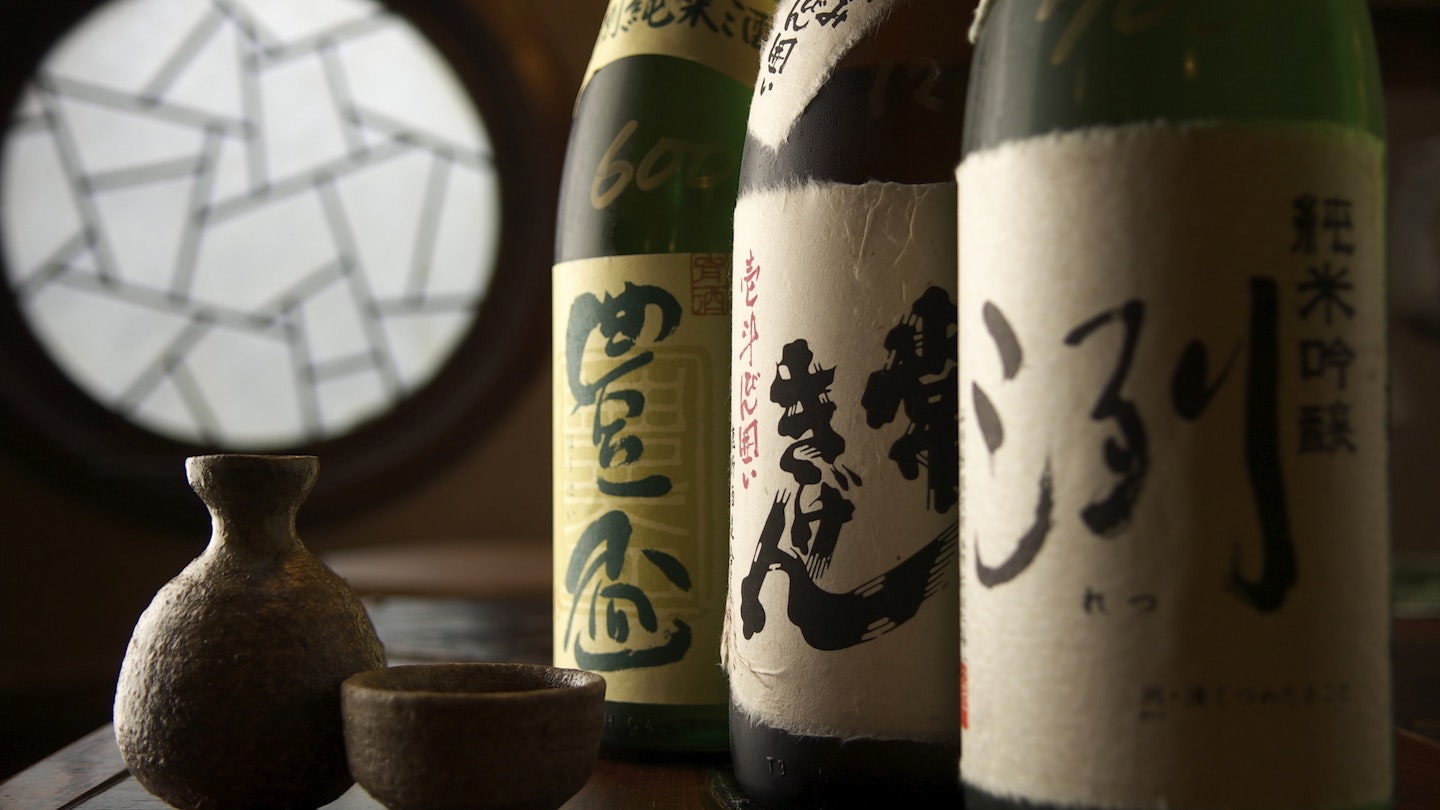
With approximately 1,500 breweries in Japan, there’s a local sake around almost every corner © Getty Images
Sponsored by
Japanese sake, or nihonshu as it is known in Japan , is the country’s representative drink. With approximately 1,500 kura (breweries) spanning the archipelago, there’s a ji-zake (local sake) around almost every corner.
Containing only four ingredients – rice, kōji (rice mold), water and yeast – even the smallest variations in raw materials, climate and technique make for an extremely different version of this rice wine. This has led to strong regional flavor profiles that make exploring Japan through its regional sakes an adventure all its own.
Thanks to new technologies, time-honored techniques can be perfected in ways that were not possible in the past, and in an effort to differentiate themselves in a time of unprecedented consumer choice, breweries are innovating with a renewed creative thirst that is elevating this traditional drink into new territory. If there was ever a time to get into the exciting world of sake, it is now.
Here we’ll explore eight of the most renowned destinations for sake in Japan, three on a “Northern Route” and five on a “Southern Route,” easily linked by the capital Tokyo in between.
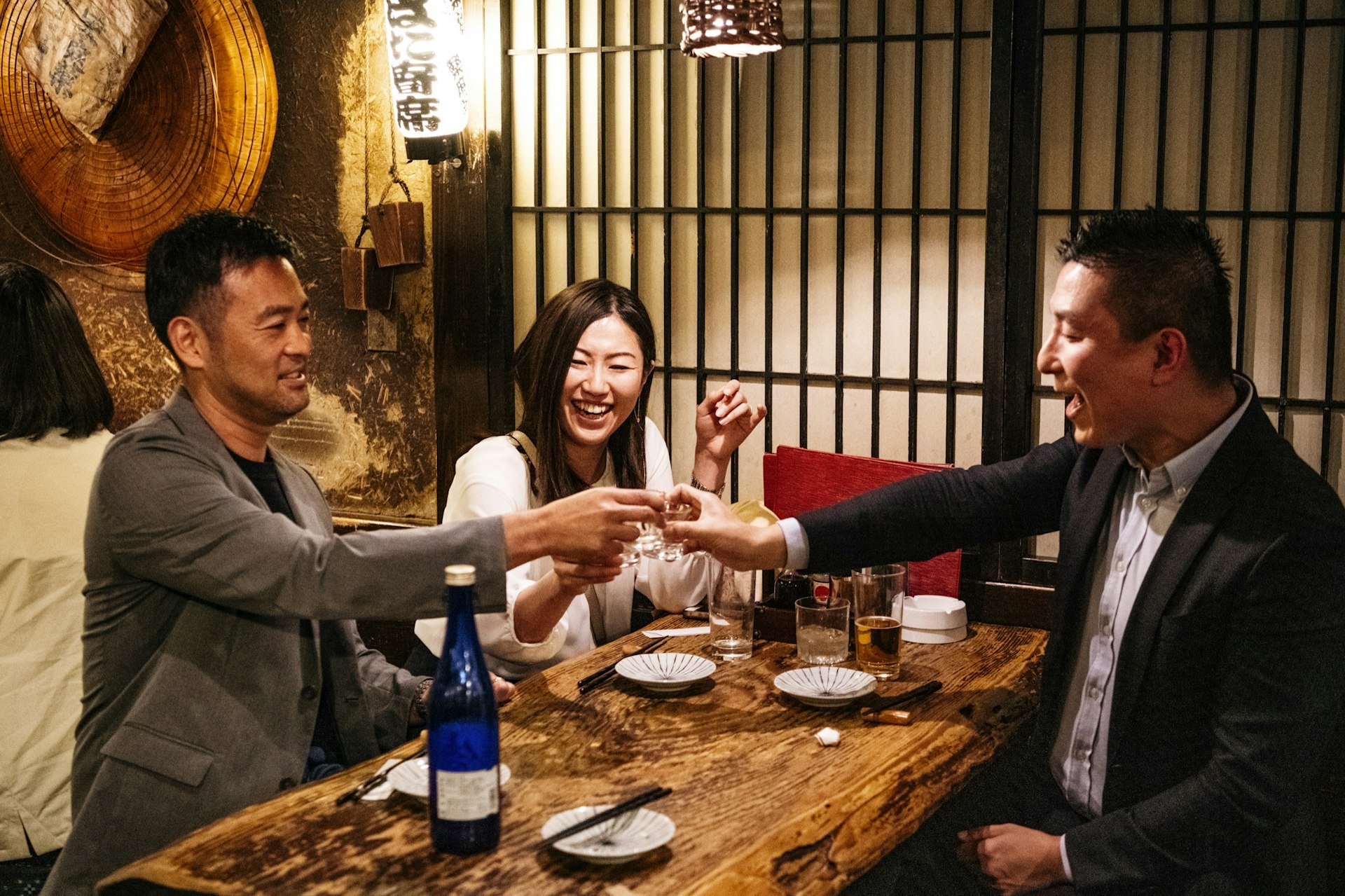
Southern Route
The Southern Route focuses on the “Big Three” or the Three Major Sake Breweries in Japan, centering around Kyoto , Osaka and Hiroshima , making them easy to incorporate into any sightseeing itinerary.
Getting started: Start in Osaka and take the Hanshin Railway from either Namba or Umeda Stations. Stops of interest in the Nada-Gogō sake brewery district include Uozaki, Sumiyoshi, Ishiyagawa and Oishi.

Nada-Gogō, Hyōgo Prefecture
Nada-Gogō or “The Five Villages of Nada” refers to five groupings of sake breweries in the cities of Kobe and Nishinomiya, within easy reach of Osaka. This coastal cluster of breweries accounts for an incredible 25 percent of domestic sake production, making it the leading sake region by volume in the country.
The port-side location has given Nada-Gogō some historical advantages with an easy shipping route to Edo (the ancient name for Tokyo), but its enduring legacy has to be credited to two of the most important factors that go into a successful kura : quality ingredients and talented brewers, or tōji .
A pivotal ingredient in rice wine is of course quality rice. Eighty percent of Yamadanishiki , considered the “king of sake rice,” is cultivated in Hyōgo Prefecture, giving Nada-Gogō bountiful local access to this top resource.
Not only that, the region’s “Tamba tōji,” named after the Tamba district (the eastern part of present-day Hyōgo Prefecture), are considered to be in the three top groups of sake brewers. The Tamba tōji use a slow and labor-intensive traditional method called kimoto not commonly used in present-day sake making.
Onward journey : Less than 15 minutes by shinkansen to Kyoto from Shin-Osaka Station, or 30 minutes by regular train services. From Kyoto Station, take a local train to Fushimi on the Kintetsu Kyoto Line, 10 minutes.

Fushimi, Kyoto Prefecture
Fushimi has made an international name for itself over recent years thanks to the surge in popularity of Fushimi-Inari Shrine with its hundreds of vermillion hill-side torii gates. But what you might not know is that the shrine is dedicated to the Shinto god of rice (Inari) and Fushimi is one of the most important rice wine locations in the country.
The main reason sake production flourished in Fushimi is due to the abundance and quality of its groundwater. When you consider that 80 percent of sake is water, the quality and composition of this key ingredient is paramount to the taste of the final product.
The famous “Seven Wells of Fushimi” produce spring water of medium hardness with moderate amounts of calcium and potassium. This is what gives Fushimi sake its signature delicate flavor and mellow mouthfeel. Compared with the hard miyamizu water high in potassium and phosphoric acid used in neighboring Nada-Gogō that results in a very bold flavor profile, these two regions couldn’t produce sake that is any more different.
Fushimi exudes the traditional feel visitors have come to expect from Kyoto and its sake district along the willow-lined Horikawa River doesn’t disappoint. From spring to autumn, a 50-minute Jikkokubune boat ride is a pleasant way to explore the charms of the historic buildings alongside the changing seasonal landscape.
Right by the launch for the Jikkokubune is Gekkeikan, the second largest sake brewery on Earth and one of the world’s oldest companies, founded here in 1637. The adjacent Gekkeikan Okura Sake Museum provides excellent insight into the sake brewing process with English explanations, and includes free tasting and a small take-home bottle of sake inclusive in the 600-yen entry free.
Onward journey : An hour and 40 minutes on the shinkansen from Kyoto to Hiroshima. Then an easy under 40-minute train jaunt (no transfers) from Hiroshima Station on the JR Sanyo line to Saijo.

Saijo, Hiroshima
Just a stone’s throw from Saijo Station, you’ll find yourself on Sakagura-dori or ‘Sake Brewery Street’. Here you can find seven of the eight breweries of Saijo, making it an ideal spot for brewery-hopping and becoming acquainted with the many different types of sake.
Sake is divided into two major categories, futsū-shu or regular sake, and tokutei meishō-shu , meaning “Special Designation Sake,” which constitutes about 25 percent of the domestic market. One of the major factors that distinguish these premium sakes is the degree to which the rice is polished.
Sake rice, which is different to regular table rice, has starches concentrated in the center of the grain that are fundamental to the fermentation process. Milling away at the outer layer removes fats and proteins that affect this process and create less desirable flavor components.
Generally speaking, the more the rice is polished, the more premium the sake. This is measured by a term called seimaibuai , which is denoted in percentage points and refers to the amount of rice that remains after milling. For example, a seimaibuai of 70 percent means that 30 percent of the rice kernel has been removed.
Saijo is considered the “home of ginjō-shu ,” a collective term which refers to the top four premium sake grades, making it the perfect location to try some special designation sakes.
Onward journey : Return to Shin-Osaka Station by shinkansen in 90 minutes (or 1 hour 45 mins to Kyoto), or travel all the way from Hiroshima to Tokyo in just under 4 hours.

The Northern Route
These stops will take you to some of the best spots for sake enthusiasts in northern Japan and allow exploration of prefectures not on the usual tourist trail. Start in Tokyo and take the shinkansen two hours north-west to Niigata City.
Niigata Prefecture
At almost 100 kura , Niigata has the most sake breweries of any prefecture in Japan. This comes as no coincidence; if ever there was a land created for making top-quality sake, Niigata would be it. Not only is it renowned for its rice production, it also has one of the highest annual snowfalls, which melt into the most pristine waters come spring.
This pure spring water gives Niigata sake its signature crisp and refreshing taste with a touch of dryness. The snow too is used as a natural accompaniment to the brewing process, such as in the “Yukimuro” or snow cellars used by some breweries in the making of snow-aged sake.
At the beginning of spring each year, up to a thousand tons of fresh snow is put into the cellar, gently keeping the sake at a constant 3 degrees Celsius year-round without the need for electricity. After several years in the snow-laden cellar, the sake becomes incredibly mellow and smooth.
You can start your sake exploration as soon as you reach JR Niigata Station, where there are more than 100 vending machines with sake from all over the prefecture. Five hundred yen will get you five tokens to try five different sakes of your choosing.
Onward journey : 3 hours 20 minutes to Yamagata (fastest route using a combination of limited express, local trains and shinkansen) or take the shinkansen all the way via Omiya (Saitama), 4.5 hours.
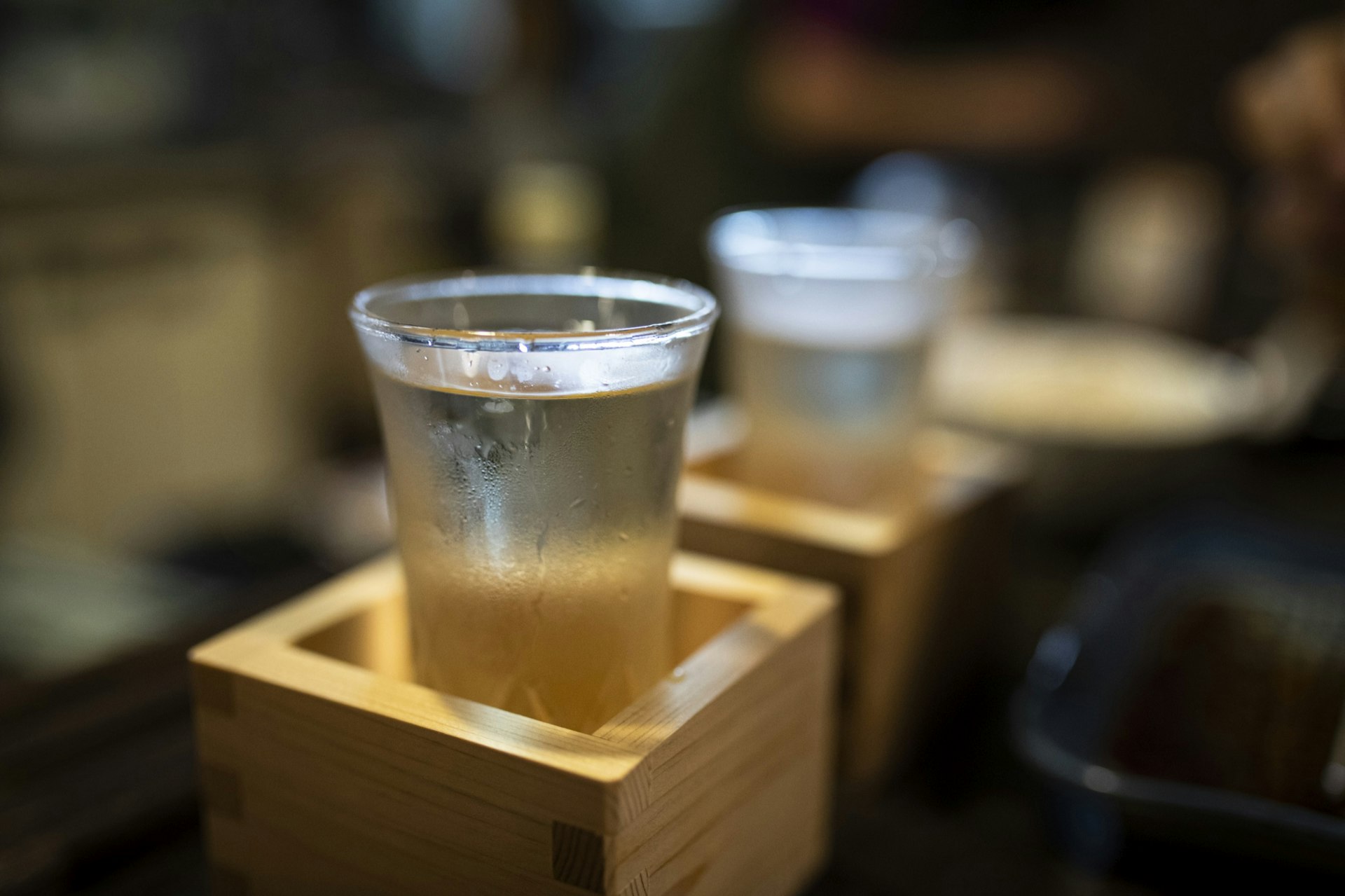
Yamagata Prefecture
Yamagata is the first prefecture in Japan to receive Geographical Indication (GI) for its sake. This designation, recognized by the World Trade Organization, certifies a product’s origin and quality.
Other well-known international examples of GI include Champagne and Darjeeling tea, and acknowledges the important role of physical location, such as soil, water and climate, in the resulting product.
Yamagata’s development of its own proprietary strains of sake rice, yeast and kōji all contribute to its unique taste, which can typically be described as soft and light yet full of flavor, with a pleasantly sweet aroma.
Yamagata has undergone a sake renaissance over the past few decades, thanks in large part to a concerted and unique open collaboration between the public and private sectors, and among brewers themselves, in what has been a historically guarded profession. This has allowed Yamagata to not only keep up with a changing industry, but rise to the top as one of Japan’s most important sake regions.
Onward journey : 1 hour 10 mins on the shinkansen to Fukushima.

Fukushima Prefecture
A sake tour of Japan wouldn’t be complete without the darling of Japan’s sake industry, Fukushima Prefecture . Fukushima’s sake has dominated the prestigious “Annual Japan Sake Awards” in recent years, awarded the most Gold Prizes of any prefecture since 2013.
While a general assessment of Fukushima’s overall sake profile would be soft and big on subtlety, it’s three very different climates means you can expect to find a wide range of flavors.
The prefecture is home to more than 60 breweries, many of which are open to the public for tasting and tours, allowing you to sample the many faces of Fukushima sake for yourself.
Onward journey : Less than 2 hours on the shinkansen to Akita, via Sendai (Miyagi).

Akita Prefecture
Nicknamed the “Land of Sake,” Akita Prefecture follows the simple formula of good rice + good water = good sake. Blessed with an incredible natural environment along with the “cold brewing” techniques of the region’s Sannai Tōji master brewers, and you have a product with built-in excellence.
Akita Prefecture has developed its own local variety of sake rice called Akita Sake Komachi, which not only works in perfect harmony with local conditions and Akita kōji, but the higher levels of glucose result in an elegantly sweet and fragrant brew with a wide-variety of fruity notes.
While it is a relatively new rice on the sake scene, it’s rapidly become the prefecture’s most popular rice for premium sake.
Onward journey : 3.5 to 4 hours on the shinkansen to Utsunomiya (Tochigi), via Sendai (Miyagi). Nikko can be reached in about 45 mins from Utsunomiya on the JR Nikko Line.
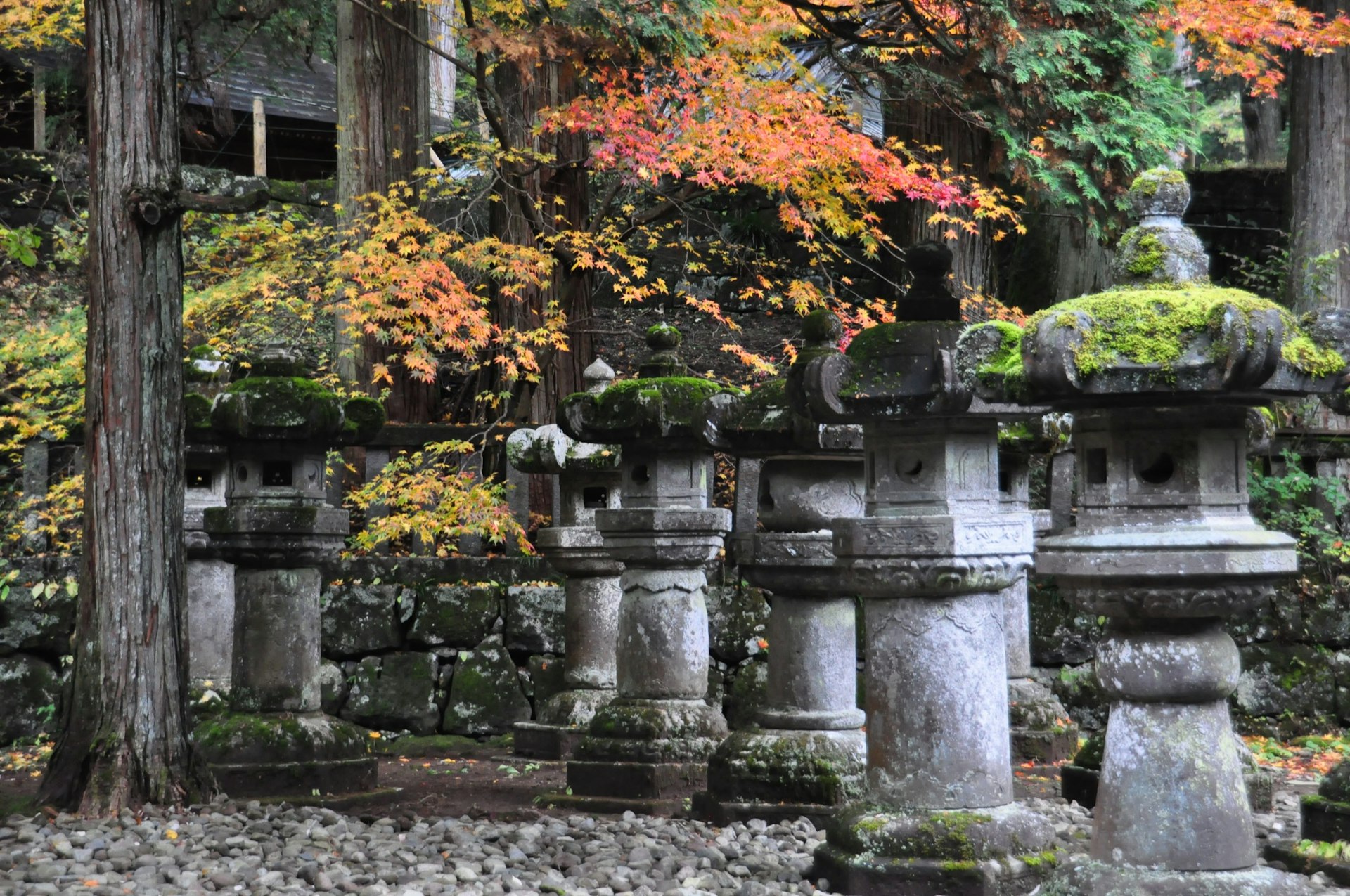
Tochigi Prefecture
Tochigi Prefecture is probably most well-known to international visitors for its incredible UNESCO World Heritage-listed Tōshō-gū Shrine in Nikko. Sake lovers can combine a visit to this historic site with sampling of local sakes at the prefecture’s 37 breweries and numerous local watering holes.
Adjacent to the Tōshō-gū Shrine complex is the even older Futarasan Shrine, which is well-worth a visit and has a delightful link to sake. Behind the main building (Honden), be sure to take a look at the small pond of natural spring water. Known as Futara Spiritual Spring, it is believed the water not only possesses healing properties for eye diseases, but is also very good for making rice wine, earning it the nickname the “Fountain of Sake.”
In the tearoom, you can try drinks made using the spiritual spring water, including amazake, a sweet and thick, low- or non-alcohol sake made from either sake lees or rice kōji, typically served heated in the cooler months. It’s a great way to dip your toes into the many ways to drink sake – at room temperature, chilled, warm or hot.
Historically, Tochigi’s sake has been quite sweet, but in recent years the flavor profile has diversified to include lighter and drier brews that accommodate a wide variety of flavor preferences.
For those who’d like to continue their enjoyment of sake on their return home, consider purchasing a beautiful Mashiko-yaki sake cup set. This local-style pottery hailing from Mashiko, one of Japan’s most well-known pottery towns, makes for the perfect take-home souvenir.
Return journey : Less than one hour from Utsunomiya on the shinkansen back to Tokyo.
You might also like
Secrets of sake: The history and traditions of Japan’s national drink
Sponsored by Japan Travel & Tourism
As a travel entertainment and inspirational media outlet, we sometimes incorporate brand sponsors into our efforts. This activity is clearly labeled across our platforms.
This story was crafted collaboratively between Japan Travel & Tourism and Lonely Planet. Both parties provided research and curated content to produce this story. We disclose when information isn’t ours.
With sponsored content, both Lonely Planet and our brand partners have specific responsibilities:
Brand partner
Determines the concept, provides briefing, research material, and may provide feedback.
Lonely Planet
We provide expertise, firsthand insights, and verify with third-party sources when needed.
Explore related stories
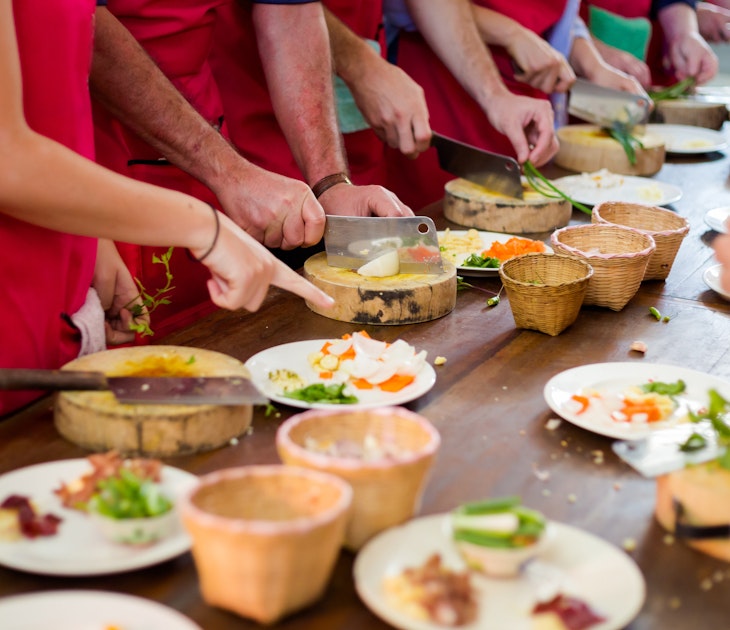
Food and Drink
Apr 20, 2024 • 9 min read
A cooking class is a great way to get acquainted with a new destination. Food writer, Malia Yoshioka, shares her guide to the world's best.

Apr 14, 2024 • 6 min read

Apr 2, 2024 • 10 min read
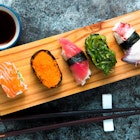
Apr 1, 2024 • 10 min read

Mar 26, 2024 • 8 min read

Mar 25, 2024 • 6 min read

Mar 25, 2024 • 10 min read

Mar 23, 2024 • 17 min read

Mar 22, 2024 • 5 min read

- TRAVEL Where to Go When to Go What to Do Tips and Advice Where to Stay
- CULTURE Sports Arts & Entertainment Traditions Cultural Tips History
- FOOD & DRINKS Where to Eat Bars and Brewery Regional Specialty
- SPECIAL EVENTS Festivals Shows & Concerts Tournaments & Competitions Exhibits
- ANIME Anime Spots Anime Events Recommendations Anime Tours
- LUXURY Experiences Luxury Accommodations Dining Luxury Tours

VISIT ONE OF THE BEST SAKE BREWERIES IN JAPAN AND TRY TASTY LOCAL BREWS!
If the thousands of craft sake brands popping up worldwide haven't convinced you yet, you've got to try this time-honored brew! But, requesting a bottle of "sah-kee" in Japan might get you a few confused looks. In English, we use the word "sake" to mean a specific Japanese liquor, but sake or osake (pronounced sah-kay) actually refers to any alcoholic drink. If you want to order like an expert, ask for the Nihonshu . As versatile as soy sauce, sommeliers and Michelin-starred chefs pair premium sake with delectable dishes, while some salarymen will slug swill and gnash on fried chicken. If you're looking for a top-shelf experience, take the time to get to know a little bit about nihonshu . Read on to find out how it's made, the varieties it comes in, and our top picks for places in Japan to experience sake!
HOW SAKE IS MADE

Nihonshu is rice wine with an alcohol content generally between nine and sixteen percent. Your basic sake recipe calls for rice, water, and a yeast starter. It seems easy, but it takes a great deal of technical mastery and intuition to concoct the perfect batch. The delicate procedure begins with the toji (brewmasters) carefully selecting the choicest sake rice. Depending on the variety, the kernels get milled until only 35-70% of each grain remains. The polished rice then goes through a steaming process. Half of the cooked rice goes into a fermentation tank, and the other half gets a sprinkling of mold. When you walk through a brewery, the distinct smell of chestnuts tells you that you're in the heart of the sake brewing operation. The mixture of rice and mold creates an essential ingredient called koji . After an incubation period, the koji gets slowly added to the fermenting rice along with yeast starter because rice starches can’t produce sugars. As the mash ferments over the next 18 to 32 days, the brewers adjust the temperature and other conditions. They might also add ingredients like brewers alcohol or sugar to achieve the correct flavor profile. At the end of the month, the unfermented sake ingredients get filtered out. Then the nihonshu goes through filtration, pasteurization, and maturation depending on the type.
TYPES OF SAKE

There are so many designations and medleys of nihonshu you're sure to find a variety you like. Here's a quick guide to the main types and tastes for beginners. Junmai: A junmai spirit doesn't use any additives. There can be variations of junmai using specific techniques, but any bottle containing only rice, water, and koji, is considered a junmai . People drink junmai either warm or at room temperature. Honjozo: The rice to make honjozo gets polishes to 70% of the original grain. During fermentation, a small amount of brewers alcohol is added to smooth out the flavor. It has a light taste, and you can drink warm or cold. Ginjo and Junmai Ginjo: If you’re looking for chilled sake, many people prefer the ginjo type for its fruity and complex flavors. Ginjos use rice refined to 60% and specific yeast starters and fermentation techniques. Some batches don’t receive any additives, so they get the name junmai ginjo . Daiginjo and Junmai Daiginjo: Considered the pinnacle of premium sake, these brews require rice grains milled to 50% and precision. The mastery required to create these makes daiginjo and junmai daiginjo types among the most expensive sake. Serving it cold brings out light yet complex flavors. Futsushu: In Japanese, futusu means "normal," so we might think of this as a table nihonshu . Compared to premium bottles, the rice is barely polished. Most futusushu sake brands use rice that is 70-93% of the original grain. Bars often serve this because it's rather cheap, but many Japanese people stay away from it unless they’re drinking sake cocktails. Amazake: If you don't imbibe or are too young to drink, amazake ("sweet sake") is non-alcoholic sake. In addition to drinking, Japanese cuisine uses amazake as a dessert, natural sweetener, baby food, salad dressing, and more. It’s said to be very nutritious and a great hangover cure. With all of these varieties, you might wonder how could you possibly choose just one sake to take home? Nihonshu makers and experts agree—you should go to a tasting to find one you like! Just be careful to drink your samplings correctly.
HOW TO DRINK SAKE

Rule number one of drinking nihonshu : sip, don’t shoot. Traditional sake cups are small and resemble shot glasses. Some drinkers might feel incensed to knock it all back in one gulp, but in doing so, you miss all of the flavors and aromas. You might also get served an overflowing glass of nihonshu placed inside a square sake cup called a masu with even more nihonshu in it. To drink, sip from the glass until it’s empty, then pour the remaining nihonshu from the masu into the glass. Once you find your favorite type, don't forget to buy some as a souvenir. At home, store the sake in a dark place that doesn't get warmer than 68°F (20°C). Bottled nihonshu can last as long as two years in these conditions. After opening, keep it in the refrigerator and consume within two to three weeks. If you want to drink hot sake, heat it slowly with hot water and never use the microwave. The ideal way to warm sake is by placing a decanter of nihonshu in a pot of boiling water. Heating sake can bring out a new flavor profile when done correctly.
OUR FAVORITE JAPANESE SAKE BREWERIES

Otokoyama Sake Brewery

Suehiro Sake Brewery

Sawanoi Sake Brewery

Fushimi Sake District

Nada Sake District

Saijo Sake District

Aizu Sake Museum

Ponshukan Sake Museum and Rice Brewery
More than just a museum, you can sample cups of nihonshu made by the leading 95 brands from Niigata Prefecture. Also, you can take a hot spring bath infused with sake or try locally-sourced Koshihikari rice and the area’s specialties.
CLICK HERE TO SEE OUR TOURS THAT INCLUDE THIS EXPERIENCE

NORTHERN OR SOUTHERN JAPAN? WHICH TO VISIT NEXT
TRAVEL | Where to Go
Article | April 22nd, 2024 | May Hamamoto
Can’t get enough of Japan after visiting Tokyo, Kyoto, and Osaka, but are torn between the charms ......

12 OF OUR FAVORITE JAPANESE FESTIVALS
SPECIAL EVENTS | Festivals
Article | April 11th, 2024 | Dayna Hannah
Attending a Japanese festival is an experience unlike any other! Here are our favorite annual events......

WHEN TO SEE CHERRY BLOSSOMS BLOOM IN JAPAN | 2024
TRAVEL | When to Go
Article | March 29th, 2024 | Dayna Hannah
From Okinawa to Hokkaido, here's where and when to see cherry blossoms in Japan.......
Search Group Tour
2024, 2025 & 2026 group tour calendar, subscribe to blog via email.
Your Email Address
POPULAR ARTICLES

TOP PLACES TO SEE IN JAPAN IN 2024: 20 CITIES WE LOVE

50 THINGS TO DO IN JAPAN

WHEN IS THE BEST TIME TO VISIT JAPAN?

WHAT IS KOBE BEEF?

WHAT IS GEISHA

10 THINGS TO DO IN SHIBUYA

JAPANESE FOOD
- Member registration/ログイン Mr./Ms. pt
- Search from experiences
- Search from area
- Search from features
- Online Experiences
- Setting・Help

- 遊び体験格安予約 アクティビティジャパン
- Top Sake Brewery and Wine Tasting Tours in Japan
Top Sake Brewery and Wine Tasting Tours in Japan | Activity Japan

Last Updated: 22/12/2022
Japan is a brewer lover’s paradise! Most famous for its iconic sake brewery tour adventures, the country has honed its alcohol crafting skills over hundreds of years of practice dating back from feudal times. Many distilleries and brands have perfected the art using ancient forms of distillation, fermentation, and mineral-rich hot spring water. This combination has ensured a distinctive taste and smoothness, unlike anything else. Take up sake tasting tours and explore the flavors and history in ancient vineyards.
It can be difficult to decide where you should go in order to try some of the country's finest beverages, but you've come to the right blog! From the plums grown in Tokushima and the rice harvested near Kobe and Niigata to Kamiyama's beer. Visit Japan's famous sake production areas, and go around the factories and distilleries to uncover how the magic happens. Wine tasting might be Japan’s most popular activity in terms of alcoholic treats, but the country has also made a sterling reputation with its abundance of top-notch scotch.
Discover the “boozy” side of Japan with these tours!
1. Nada-Gogō: Japan's largest sake producing area
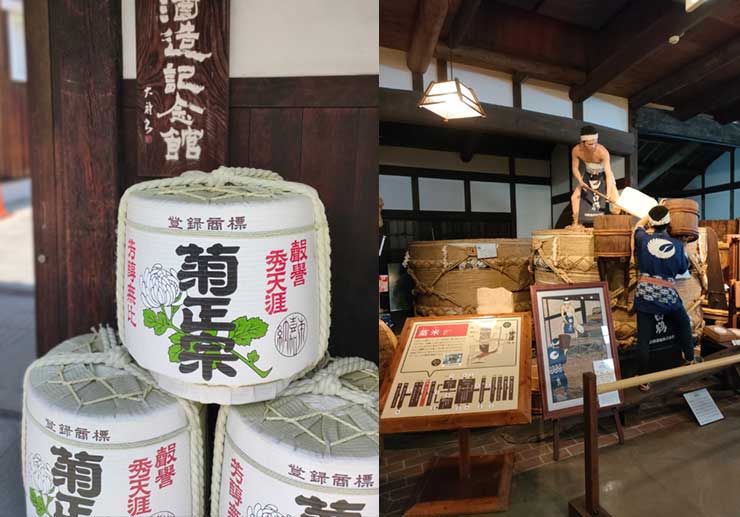
Nada-Gogō, or the five villages of Nada, is a cluster of coastal towns just 12 kilometers from central Kobe. With its rich history in sake brewing and proximity to the ocean, it's no wonder it's considered one of Japan's best sake-brewing areas.
If you're looking to sample the best of what Japan offers, add Nada Gogo tour to your itinerary. This excursion will take you to more than 10 sake breweries and offer the chance to taste this traditional Japanese beverage that has been made in this region for centuries.
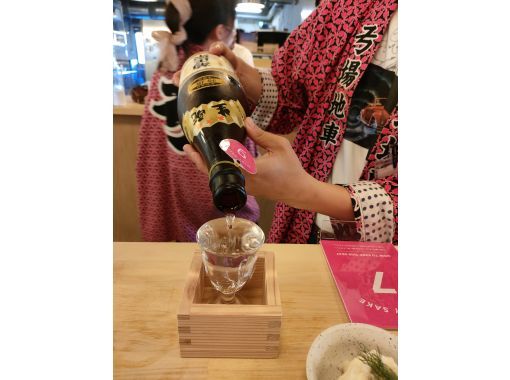
2. Brew up a trip to Japan: Kamiyama town and beer
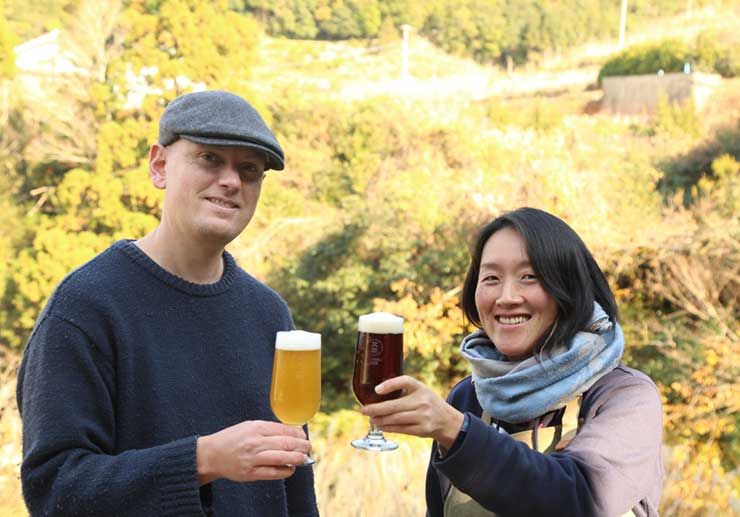
In this brewery tour in Kamiyama Town, you’ll savor local beer paired with a special traditional lunch in nature. Make your own beer glasses and coasters while enjoying the fine art of brewing. The tour also includes a special beer set for you to take home.
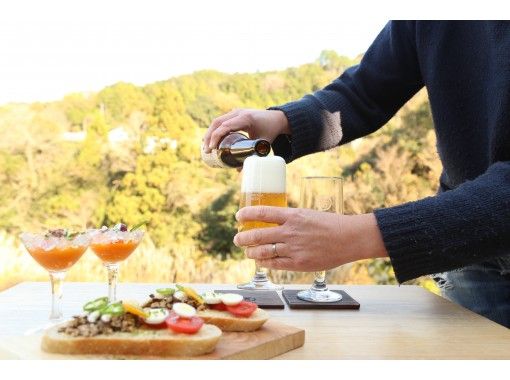
3. Learn the history of sake at Niigata prefecture
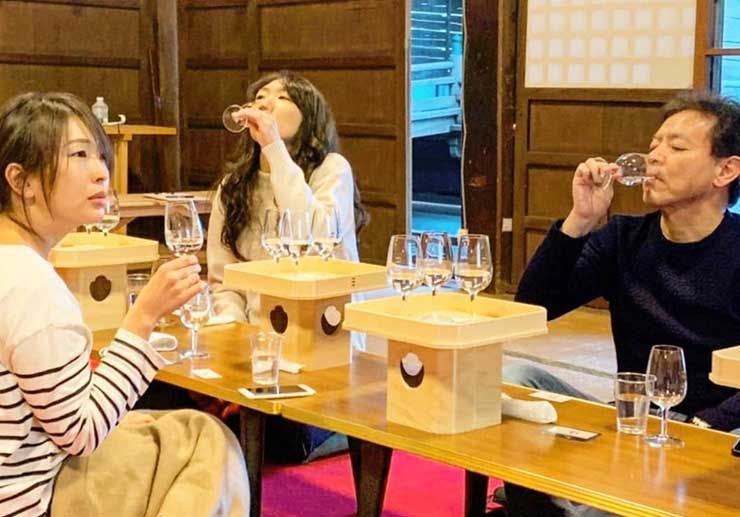
Sake is a fermented alcoholic beverage brewed from rice. The history of this drink is long and rich, dating back to 700 AD. For almost 1000 years, sake was mainly produced in Shrines and temples. Even now, Sake is one of the main offerings left for Shinto Gods.
Learn all about the history of this ancient beverage, while tasting the delicious Niigata Sake in the heart of a Shinto Shrine or a traditional Japanese home that is now a restaurant-café.
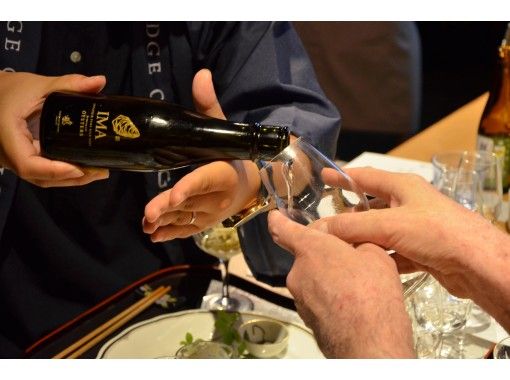
4. Tokushima: The perfect wonderland for sake and plum wine lovers!

The Shikoku and Sanuki mountains provide the perfect environment for brewing sake. Tokushima prefecture has some of the most famous breweries in Japan, including the Saito Sake Brewery, which won awards for its excellent brews. Not only is Tokushima known for its rice, but it also has a reputation for its plum blossoms that are used to make plum wine. You can sample the taste of these traditional beverages by touring the area's breweries.
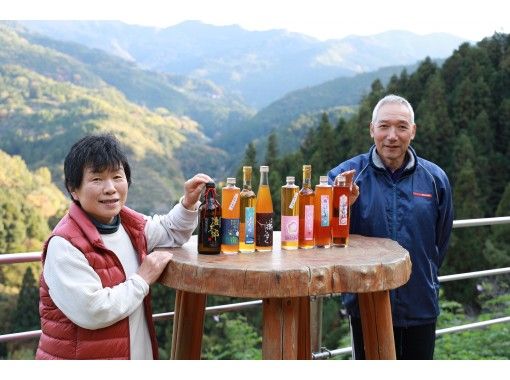
Recommended For You

We would like to express our sincere gratitude for your continued patronage.
At our company, in order for many customers to enjoy various activities all over Japan safely and with peace of mind, the Ministry of Health, Labor and Welfare's " Basic Policy for Countermeasures against Coronavirus Infectious Diseases " and " Let's Avoid the Three Cs "・ Based on the " new lifestyle ", we recommend the following infectious disease countermeasures to the operator.
- Instructors and participants keep a sufficient distance
- Use masks as much as possible while participating
- Ventilate frequently, avoiding closed spaces
- Thorough hand washing and disinfection
- Thorough disinfection of equipment
- Health management of customers and employees, etc.
For infection prevention measures of the operating company, please refer to [Appeal points for safety] or [Notes on participating in the course ] of each operating company information at the bottom of the plan reservation page, and for details, please contact each operating company directly. Please contact us.
You can also check the following page for information on the efforts of activity companies in each region!
How to enjoy new activities in the after / with corona era
Even if you are a customer, when you continue to go out, in addition to avoiding so-called [three secrets], cough etiquette, thorough hand washing and alcohol disinfection, etc., on June 19, 2020 (Friday), Ministry of Land, Infrastructure, Transport and Tourism, sightseeing Please be aware of the [new travel etiquette ] announced by the Japan Tourism Agency, take actions to avoid the risk of infectious diseases, and enjoy activities and leisure activities safely.
Even now, there are tourist facilities and activity operators whose business hours and dates have changed. Please check the calendar status at the time of application and check the latest information with each operator even after the reservation is completed. Please check with each operator regarding whether or not there is a cancellation fee due to sudden closure of the facility, cancellation of the activity experience, etc.
In addition, Activity Japan also offers an "online experience" service where you can enjoy various activities!
[Online experience] New experience online anywhere
The "online experience" service is digital content that can be expected to create a new community by connecting customers with local and tourism businesses on a daily basis. Those who have difficulty going out due to circumstances, those who want to try but are uneasy about having a real experience suddenly, those who want to collect local information to plan future trips and stay plans, etc. Feel free to meet local instructors and guides online and enjoy a conversation while experiencing a simulated experience!
Please use it together.
Find experiences nationwide
Ultimate Guide to Sake Brewery
By The Japan Switch Team
Besides premium ingredients and the right climate, you need toji (sake maker) at a sake brewery to create high-quality Japanese sake.
In Japan, there’s a distinction between ‘sake’, which means alcoholic beverage, and ‘nihonshu’ that translates to ‘the drink of Japan’. In many ways, the sake that many outsiders come to recognize is precisely it: a fermented, rice-based alcoholic drink that has seeped into the country’s identity.
To live in Japan is to have sake present at every point of your life. Synonymous with Japanese culture , sake is served at weddings, poured from children to their parents when they come of age and enjoyed at sushi restaurants .
In recent years, the national drink has expanded beyond national obsession — and finally received the global attention it deserved.
In this article, we’ll be discussing the rich history behind sake and the need-to-know things about sake brewery. Most breweries also offer tours and tastings, so, if you are planning to dive deep into sake, make sure to visit these places when you go to Japan.
This article is a part of our extensive series on our Japan Switch Blog about the Japanese language and culture.
2 Ebooks to Jump Start your Japanese
Subscribe to our newsletter to get bi-weekly study tips, advice and stories on how YOU can improve your Japanese.
What You Need to Know About Sake
Rice in Japan goes beyond being a staple for Japanese meals, meant for lunch bento and donburi. The ‘sake’ that we know (also referred as nihonshu) is made from the rice grain
Nowadays, sake breweries in Japan are experimenting with new styles and production techniques. Things like the cultivar of rice and extend of polishing and fermentation are taken into heavy consideration. Because of the filtration process at sake breweries in Japan, sake has a slight yellowish color with an alcohol content of 15%.
The taste of sake is complex, delicious and, to some, surprising. It has less acidity than wine (only a fifth of the acidity). However, it makes up for its lack of acid bite with its smooth, subtle flavor. Flavor profiles range from crisp to rich — some with fruity notes, even.
This is why you can find a lot of fine-dining and omakase restaurants stocking their shelves with sake — not just in Japan, but around the world. It goes well with almost any kind of food, but its delicate flavor especially pairs well with hearty traditional Japanese meals.
Types of Japanese Sake
The world of sake is also increasingly diverse. There are about 70 rice varieties used to make the alcoholic drink. There are three types of rice commonly used: yamadanishiki, gyohakumangoku and miyamanishiki.
Even then, you will notice a hint of uniqueness from one sake brewery to another. Sake’s history dates back to over 1,000 years ago, yet it is still a craft in the making until today. After all, sake making process has been refined over the centuries by sake masters (toji) in their regional sake brewery.
There are five main types of sake, each brewed in different ways and made through different percentages of milling. The degree of milling, in particular (also known as seimai buai ) is what sets sake apart from each other.
This type of sake contains pure unadulterated sake with no brewer’s alcohol, starch and sugar are added to it. It has the least polishing ratio.
40% of the rice is milled for ginjo-shu, giving it a wonderful aroma and light flavor. This particular type of sake is considered as a premium form and was only developed around 50 years ago.
- Daiginjo-shu
In Japanese, ‘dai’ (大) means ‘big’. You can think of daiginjo as the more premium version of ginjo-shu. The small amount of distilled alcohol added allows the flavor and aroma to enhance.
- Honjozo-shu
The degree of milling for honjozo-shu is 70%, and the sake is added with brewer’s alcohol. It is known for its distinct aroma and smooth body. Unlike ginjo-shu, which is usually served chill, honjozu-shu is ideally enjoyed warm.
The word ‘nama’ in Japanese means raw. In essence, namazake is unpasteurized alcohol; all types of sake listed above can be considered namazake as long as they don’t go through the pasteurization process. However, the drink must be refrigerated and consumed quickly.
Affordable Online and Offline Morning Lessons in Tokyo
Learn Japanese with us online or offline and make your Japan Switch.
- Affordable Japanese Lessons
- Monthly Contracts
- No Entrance Fees
- No Hidden Fees
- 200+ Students
- Online or Offline Lessons
How Sake is Made in Japan
Like wine and beer, sake is made through the fermentation of yeast. The foundation of sake is high-quality rice, koji (mold strain) and water. The special sake rice is stripped of the bran to remove the protein and oil.
In the brewing process, the polishing ratio (seimai buai) determines the quality of sake. The number indicates how much of the rice remains after the rice grain is milled; the lower the percentage, the more expensive the sake is.
The starchy core is then ready to be converted by the koji mold. First, rice is washed, steamed and chilled before being spread out on wooden tables. Steaming makes the rice starch easier for the koji to break down. The next process relies on the koji, where the starch is finally broken into fermentable sugar.
Besides being used as a fermentation mash, water is used to wash and soak the rice. Because of this, toji masters pay attention to the quality of water. These master sake brewers have their specific techniques that overall affect the final sake flavor and style.
What You Need to Know About Sake Brewery in Japan
Most sake is produced in small to medium-sized sake breweries in Japan, where regionality and climate contribute to the quality.
Typically, sake brewing is most effective in the winter because this is when the yeast is most active. Sake brewers will often benefit from the cold period, which usually falls around November to February. However, bigger sake breweries with air-conditioned facilities and advanced storage systems can make sake throughout the year.
The practice of making sake in the winter is called ‘Kanzukuri’, while sake brewing year-long is called ‘shikizukuri’,
Becoming a Sake Sommelier
Some people drink sake for special occasions, while some people consider sake their passion. If you fall on the latter (or at least, plan to), there's a few resources and community that can help you get closer to the art of sake.
Sake on Air is a podcast, where the hosts invite sake and shochu industry professionals in Japan to join an open-aired question.
If you're looking to take things more seriously, there's an English certification exam launched in 2018 called the J.S.A Sake Diploma International . There's also the Sake Sommelier Course for those living in the US. Students can expect educational training that includes analyzing over 12 premium Japanese sake. At the end of the course, you'll participate in an exam to test your knowledge before you become an official sake sommelier (also known as Kikisake-shi).
The Best Time to Visit a Sake Brewery in Japan
Typically, sake production relies on seasons in Japan , with the most active time being in the winter. Sake brewers will often benefit from the cold period, which usually falls around November to February. However, bigger sake breweries with air-conditioned facilities and advanced storage systems can make sake throughout the year.
Because winter is when the busy sake-making time falls, access to breweries may be restricted. When planning your itinerary to any sake brewery in Japan, think about the off-season. Although some breweries do have museums and shops, there won’t be a lot to see.
The end of the cold season marks the final sake brewing process. Around the end of January to early May, each brewer — especially in Kyushu — celebrates the completion of sake production through holding an event called ‘kurabiraki’. There, visitors can sample freshly made sake from each brewery and get a tour of the place. Stalls with local food are erected, and you might even get the chance to talk to the toji.
Besides that, you can also enjoy traditional art performances and fun stage events. It’s not rare for renowned sake breweries to include Japanese drum performance and lion dance in their yearly festival.
Many sake breweries in Japan have also hosted special events like the ‘Summer Sake Festival’ and ‘Autumn Sake Festival’ before the start of sake brewing.
Where to Visit Sake Brewery in Japan
Most sake breweries in Japan are located in the countryside. As mentioned above, the quality of water is important for the taste of sake. Specifically, the amount of iron contained in the water will greatly impact the taste and aroma of sake. If the sourced water contains too much iron mineral, the sake will have a reddish-brown color. It comes as no surprise that where there are excellent water sources, you’ll mostly find sake breweries around.
Currently, there are about 1800 sake breweries in Japan. A lot of them are centered in Niigata, Kobe and Kyoto. They are considered among the 100 best water resources by the Ministry of the Environment.
Sake Brewery in Fushimi, Kyoto
Prized for the clean, pristine water that flows from Horikawa River, Fushimi has been a leading sake brewing district in Japan. The traditional sake brewing area is home to roughly 40 sake breweries.
Many of the buildings there maintain a traditional appearance, decked with wood and traditional Japanese lime plaster. You can find a handful of sake breweries that is open to the public. You can purchase their exclusive products, take a stroll around their museums and have a tasting. Among them is the famous Gekkeikan, one of the oldest sake and plum wine company in the world.
Sake Brewery in Nada, Hyogo
Alongside Kyoto’s Fushimi district, the Nada area is revered as another superior sake production region in Japan. Not just its soft water, the region is able to produce high-quality rice grains and boasts the perfect weather condition for fermentation.
The area is also close to Kobe Port and Osaka, making it a strategic point for sake distribution. Many sake breweries in Nada, like the Sawanotsuru Sake Museum, have open stores and exhibition rooms. A lot of the sake breweries also offer free guided tours of the warehouse that includes sake tasting.
Sake Brewery in Kyushu
Also another famous sake place in Japan following Nada and Fushimi, Kyushu is particularly famous for its kurabiraki festival. Its largest one is the Jojima Sakagura Biraki, which welcomed 100,000 visitors every year (before the COVID-19 pandemic). The festival is held for two days around early to mid-November.
Sake Brewery in Saitama
Saitama Prefecture also has a long history of sake brewing. There are two major rivers in Saitama: the Arakawa and Tone River. Sake breweries would use underground water from both rivers to prepare sake. The overall water quality can be described as ‘soft’, which allows sake masters to make sake with a mellow, pleasant taste.
In 2004, the prefecture successfully developed a new type of sake rice called ‘Sake Musashi’, which combines two types of sake rice. Characterized by its circular white part in the center of the rice grain, Sake Musashi is the key ingredient to making the area’s specialty sake.
Learn Japanese for Free
Our newsletter for beginner to low intermediate Japanese students will get you on the right track to learning Japanese and saving money.
Things You Need to Know Before Visiting a Sake Brewery in Japan
1. book a reservation before.
Surprisingly, private tours on many sake breweries in Japan aren’t expensive — some of them being free, even. However, most of them require reservation before your visitation. Another thing to keep in mind is that tours, particularly in the countryside and outside prefectures, will be done in Japanese — so make sure you’re bringing a friend who’s ready to translate on the go.
2. Wear comfortable clothing
This applies when you’re doing a tour inside the brewery and not, say, a museum. Chances are, you’ll find wet floors, slippers, and humongous brewing tanks. If you’re inside the facility, you might also need to wear a hairnet, coat and special shoes. That’s right — you better abandon that cute dress or iron-pressed shirt for a loose t-shirt.
3. Do not wear perfume or eat anything fermented
Sake brewers are very meticulous about the production process. Every detail counts and could effectively alter the end taste of sake. Although it sounds odd, a lot of toji believe that having odors from natto bacteria, cheese, pickles or yogurt can suppress bacteria activity for the sake of fermentation. The same thing goes for perfume.
Must-visit Sake Brewery in Japan
Of course, if you can’t catch a flight to visit the Fushimi or Nada sake district, a number of great sake breweries and museums still remain if you're planning for day trips from Tokyo .
Gekkeikan Okura Sake Museum
This sake museum is the top recommendation for anyone looking to dive deep into the culture of Japanese sake. Located in a renovated brewery in Fushimi, the place is built in 1909 and intended to showcase the history of Geikkeikan, one of the biggest (and oldest) sake makers. You can expect displays of sake production tools and full explanations of sake procedures.
The museum is also designed to recreate a traditional sake brewery. Stepping into the place will feel like a portal back in time to 400 years ago. After you finish the tour, stop by the tasting corner to enjoy three types of sake and plum wine. There’s also a museum gift shop and mini brewery, where anyone can live brewing processes.
Location: 247 Minamihama-cho, Fushimi-ku, Kyoto Administration fee: Adults ¥400 | Students ¥100 Opening hours: 9:30-16:30 www.gekkeikan.co.jp
Kizakura Kappa Country
Inside the theme park owned by the famous Kizakura sake maker, you can find a refined sake brewery called Kappa Sake Brewery. The place comprises of sake and beer brewery, a restaurant that stocks up local beer and a sake museum.
The sake makers make new sake in the cold months, and you will smell the aroma of fermenting sakes as you stroll around the facility. In the Kizakura museum, you can take a look at the rich history of Kizakura and the origin of its mythical mascot, kappa.
Location: 228 Shioya-machi, Fushimi-ku, Kyoto Opening hours: Mon-Fri: 11: 30-14: 30, 17: 00-21: 30 | Weekends and public holiday: 11: 00-14: 30 (LO14: 00), 17: 00 ~ 21: 30 Administration fee: Free kizakura.co.jp/restaurant
Bukou Brewery
Bukou Brewery sits in Chichibu, Saitama in a 200-year old cultural building. It is known for its clean water that is sourced from the well. The underground water is so clean that you can actually fill your own bottle with it in the brewery’s courtyard.
Tours are available by reservation — but better book fast, because the area attracts many celebrities and media attention. Inside, you can find historical objects, like time-honored old wooden signs, iron pots and old wooden pillars. If you think that traditional sake is too strong, try their amazake, a sweet, low-alcohol version.
Location: 21-27Miyakawacho, Chichibu-shi, Saitama Opening hours: 8:00-17:30 www.bukou.co.jp/
Otokoyama Sake Brewery
If you’re planning on a trip to Hokkaido, make sure to put this one into your itinerary. As one of the most famous sake brands in Japan — and possibly the world, Otokayama Sake Brewery has been in the game for more than 300 years. Inside the sake museum, you’ll find works of artists who’ve made ukiyo-e prints that feature Otokayama sake. Besides that, you’ll get the chance to learn the history of the brand.
Location: 7-1-33, Nagayama 2-jo, Asahikawa-shi, Hokkaido Opening hours: 9:00-17:00 Admission fee: Free www.otokoyama.com/museum/en/
Matsuoka Brewery
The leading sake maker first started in 1850 and has since honed its sake technique. With natural spring water and rice grains, the brewery integrates the latest technology into the production process. What came after are lines of prestigious national sake awards. You can rest assured that the chief brewers take it seriously when it comes to quality. You can drink the water immediately during the tour. In addition to that, they have a shop that sells unique sake-flavored ice cream and amazake.
Location: 7-2 Shimofurutera, Ogawa-machi, Hiki-gun, Saitama Opening hours: 9:00-17:00 Admission fee: Free mikadomatsu.com/en/
Know anyone who has passed N1? Want to escape the teaching trap?
Tyson Batino
Tyson is the director and a co-founder of Japan Switch and One Coin English . He has spent 15 years in Japan and achieved N1 in just 3.5 years. Listen in as he shares his tips to becoming successful.
Colten Nahrebesk
Colten is the owner of Risu Press . He spent 6 years working in various industries in Japan and achieved N2. Tune in to hear more about his experiences and advice for living in Japan.
Koedo Kagamiyama Sake Brewery
This is the heart of Japan’s little edo: the Kagamiyama Sake Brewery of Kawagoe. In 2007, the Koedo Kagamiyama Sake Brewery was established as an effort to revive the area’s sake culture. As a local sake of Kawagoe, it’s a small sake maker nevertheless, with visitors coming mainly from Saitama. In recent years, however, it has garnered media attention from TVs and newspapers due to its relatively recent birth. You can find the depths of the gastronomic heritage as much of the building’s interior and architecture is still reserved for its traditional form.
Location: 10-13 Nakacho, Kawagoe-shi, Saitama www.kagamiyama.jp
Yokota Brewery (Gyoda, Saitama)
Yokota Sake Brewery was founded in 1805 by Shoemon Yokota, who found clean water in Gyoda city. The water is collected from a private well, where the underground water flows from the Arakawa River. The sake brewery uses Asano-hikari and Wakamizu brown rice. The fermentation process is gentle, creating mellow-flavored sake.
Visitors can take a tour of the brewery with prior reservations.
Location: 2-29-3 Sakuracho, Gyoda-shi, Saitama Opening hours: 8:30-17:00 yokota-shuzou.co.jp
Ozawa Sake Brewery
The brewery is located in Ome, the western part of Tokyo. Despite being part of the city, the site commands spectacular views of the mountains. You can enjoy a full day in the facility. There are sake breweries, restaurants, shops and art museums. Besides that, the brewery also makes tofu and offers a 10-kind sake tasting.
Another thing: the place has special tours held a few times a month which is conducted in English. Even if you attend the regular Japanese tours, English brochures are available so you’ll never be lost.
Location: 2-770 Sawai, Ome, Tokyo Opening hours: 10:00-17:00 Fee: Free www.sawanoi-sake.com/en
Toshimaya Shuzo
Another sake brewery near Tokyo, Toshimaya Shuzo source their spring water from Mount Fuji. Tours are held on weekdays and come with an exclusive tasting service. About sake brewery tour (reservation required)
Location: 3-14-10 Kumegawacho, Higashimurayama, Toky Opening hours: Tours on 10:00, 13:00 and 15:00 Fee: ¥550 per person | Up to 8 visitors | Reservation required toshimayasyuzou.co.jp
Related Posts
Guide to japanese customs, guide to japanese culture, guide to japanese omiyage.

Popular tours
from $99.00
from $150.00
from $200.00
from $699.00
- Search Search Search …
- Search Search …


Saijo Sake Tasting – Tour Japan’s Sake Brewery Town
If there is one drink that represents Japan, it is sake. And as sake originated from here, there is no better place to taste Sake than Japan. So while you’re in Japan, why not pick an entire town that brews sake? This is Saijo Sake, the Japanese sake brewery town. You’ll find Saijo close to Hiroshima, easily reachable by JR Train, and wonderfully easy to visit. Here’s everything you need to know about tasting sake in Saijo and Japan! We’ve also included how you can buy sake at home and how best to taste sake, so you can enjoy sake tasting from your home.
THIS POST MAY CONTAIN COMPENSATED AND AFFILIATE LINKS MORE INFORMATION IN OUR DISCLAIMER
#1 WAY TO TASTE SAKE

Best Way to Taste Sake in Saijo
This fabulous sake tasting tour in Saijo visits all 7 of the Sake breweries with an English-speaking guide and gives you the full sake-tasting experience in Saijo the Sake tasting town. It’s a fabulous trip!
What is Sake?
Sake also spelt saké is an alcoholic drink made by fermenting rice which has been polished to remove the bran. Sake is neither wine nor a spirit, although it is also known in some places as Japanese rice wine. The sake brewing process is more like that of brewing beer than making wine, although the process for making sake is two-fold. First, the starch in the rice is converted to sugar, then in a separate process, this sugar is converted to alcohol.
In the Japanese language, the word “sake” is often used to refer to any alcoholic drink.
How to Go Sake Tasting in Japan
There are several ways that you can go Sake tasting in Japan. We cover each of them here and go into detail on how you can go sake tasting in Japan’s sake capital, Saijo.
Take an organized tour to taste sake in Japan
If you just want to taste sake with an explanation of how sake is made, then it’s easy to arrange a sake-tasting tour. Japan has great sake brewery tours – and we’ve outlined the sake trips and tours here.
This Sake tasting tour in Saijo visits all 7 of the breweries here in town. You’ll be able to taste the recommende sake from each of the breweries and taste the different types of sake available too. You can book up to 2 hours prior to the departure of the tour! Check availability here.
If you won’t make it to Saijo, then these are the best options for tasting sake in Japan.
Taste Sake in Tokyo with a sake sommelier – on this tour, lasting 2.5 hours, you’ll get to taste 5 different types of sake from across Japan. You’ll also get Japanese snacks paired with the sake that you’re drinking. Meet at the Sake Doron Bar, just 5 minutes from the JR Higashi-Nakano station. Book now and get instant confirmation!
If your time is short, you can take a Japan sake tour by visiting a Sake Brewery in Kyoto – this 3-hour tour will visit a large and a small sake brewery including a 400-year-old sake brewery and you’ll also visit Gekkeikan Okura sake museum to gain an understanding the history of sake. Various sake tastings are included and you’ll also get lunch at a local restaurant! Check availability and get an instant confirmation here
Combine visiting the snow monkeys, temples and sake tasting in Nagano! – meet at the JR Station in Nagano and take a 1-day guided tour to visit Jigokudani or “Hell’s Valley”, home of the Snow Monkeys. You’ll also visit Zenkoji Temple and end your day by visiting a local Japanese sake brewery! Book your visit now!
Visit a Bar to taste sake in Japan
If you’re not going to have the time to specifically visit sake breweries when you’re in Japan, then you’re going to want to check out a specialist Sake bar. This selection from Culture Trip showcases the best sake bars in Tokyo!
Visit the Hakutsuru Sake Brewery Museum in Kobe
The Hakutsuru Sake Brewery Museum in Kobe is open from 09:30-16:30 (last entrance 16:00). Admission is free and the museum is located a 15-minute walk from the JR Sumiyoshi station.
The original sake brewhouse is open to the public to showcase the traditional methods of sake brewing that were employed here. Hakutsuru has brewed sake in Kobe since 1743 and continues to do so. Visit here to see the old and new techniques and explore the world of sake in Kobe! More details on the Hakutsuru Sake Brewery here
Buy sake from a store in Japan
To buy sake from a store in Japan in order to taste it, you’ll want to take note of a few details on the label. You should be able to get a rough indication of its taste from the following terms.
Nihosu-do: (日本酒度) this indicates the sugar and alcohol content of the sake. You’ll typically find values between -3 (sweet) and +10 (dry).
Aminosan-do (アミノ酸度) details the savouriness or taste of umami.
Taste Sake in Saijo – Japan’s Sake Capital
There’s no better place to taste sake than in Saijo, just 35 minutes on the train from Hiroshima. You’ll find 8 sake breweries here, where you can walk easily from the JR Sanyo line station and taste at each of them. And by walk easily we mean, literally 1-2 minutes between the breweries. Keep reading for details on each of the sake breweries in Saijo!
Visit the Saijo Sake Festival
The dates for the 2023 Saijo festival are not published yet but are usually held on the 2nd Saturday and Sunday of October.
As the Japanese capital of sake, Saijo holds the famous Sake Masuri festival every October. More than 900 different sakes are available in Saijo and the festival takes over the town. It’s estimated that over the 2 day weekend more than 250,000 people visit.
The festival is usually held on the 2 nd Saturday and Sunday of October.
The Saijo Matsuri Sake Festival has an entrance fee of 2,100 YEN, but once you have your ticket you’ll receive a small sake cup and be able to taste the 900 sakes on display and on offer here. You’ll also find snacks to complement your sake, from senbei rice crackers to chicken skewers. Learn how to cook Japanese dishes while you’re in Japan- read all about what you can do here.
How to Sake Taste in Saijo
It’s very easy, even if you don’t speak any Japanese t take a self-guided sake tasting tour in Saijo. Make your way to the JR Saijo Station (if you haven’t picked up a JR Pass yet , then grab one now.
You can pick up a map from your hostel or hotel, grab a photo of the map at the train station, or head into the Saijo sake tourism information office close to the station. The tourist information office in Saijo is closed from 12:00-13:00 for lunch. It’s hard to get lost in Saijo though. And it’s easy to spot the sake breweries by their tall brick chimneys.

Sake Breweries to visit in Saijo Japan
There are 8 sake breweries in Saijo that you can visit very easily and within easy walking distance from the JR Sanyo line train station.
Make your first stop the tourist information office at the train station and pick up the map in English to find your way around.
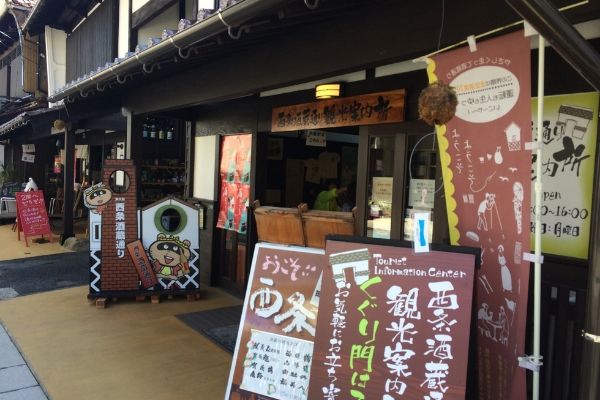
The tourist office is closed for lunch between 12:00 and 13:00, but there is another just a few minutes walk away (out of the station, left at the traffic lights, about 4 minutes on foot). This map has a suggested walking route and with all the landmarks pointed out.

Then, find one of the wells that supply the water to make the sake. You can drink from some of these wells. It’s worth tasting apparently. It just tasted like water to me, but, then I’m not a sake connoisseur.

While it is certainly possible to visit all 8 of the breweries within walking distance of the station, if they’re open, you might want to pace yourself. Most sake breweries in Saijo will give you 3 or 4 samples for free.
Like free? check out our guide to 13 totally free things to do in Tokyo.
You can also find the Saijo sake brewery hours on the individual websites below.
Kamotsuru Sake Brewery
Kamotsuru Sake Brewing Company 4-31 Saijo Honmachi, Higashi Hiroshima-shi, 739-0011 Phone 082-422-2121, Fax 082-422-2300 www.kamotsuru.jp
This sake brewery has an informative video showing the sake brewing process, which includes details on how rice is milled. You can also taste a range of sakes here. It’s a good introduction to sake. There are a wide variety of sakes on offer here and the Kamotsuru brewery has won gold medal awards since 1970.
Kamotsuru was the sake of choice for feudal lords in the Edo period. The name Kamotsuru was adopted in 1873.
Fukubijin Sake Brewery Saijo
Fukubijin Shuzou Inc. 6-21 Saijo Honmachi, Higashi Hiroshima-shi, 739-0011 Phone 082-423-3148, Fax 082-422-7497 www.fukubijin.co.jp
Famous for becoming the first sake brewery in Japan to be a legal corporation, Fukubijin has won awards in national sake competitions. They ran the Saijo Brewing School until 1970 and the brewery is known for “feminine sake: – deep, rich flavors, and a clean finish. You’ll also find sake ice cream here.
Kamoizumi Sake Brewery Saijo
Kamoizumi Shuzou Co., Ltd. 2-4 Saijo Kamiichi-machi, Higashi Hiroshima-shi, 739-0006 Phone 082-423-2118, Fax 082-423-9217 www.kamoizumi.co.jp
Kamiozumi was founded in 1912 and focuses on original, traditional flavours in sake. They have been famous since 1971 for producing a junmai ginjo grade sake 60% milled rice. Their tori (sake brewer) is very well respected and is the oldest active master brewer in Hiroshima. Their sake is a light golden colour, as they do not filter through carbon. This also helps to give the sake from here a rich, mellow flavour.
At the Kamoizumi sake brewery, we were greeted by a flock of local women preparing for the festival. There was to be a display of traditional Japanese arts and this lady had been teaching them origata. It’s a form of origami the women were getting together to display their work in time for the weekend.
Our guide in perfect English – helped us through the tasting of fresh sake. Cold, refreshing, clean tasting. Then a second taste and then joined by a Japanese gentleman we tasted the special stuff. I clearly will never be a sake connoisseur, as the fresh, almost made this morning, was my favourite.

Sake generally brews for a month and the season has just started. Some sake is aged and generally, the more polishing (the removal of the husk of the rice) the rice gets, the better the sake. The last sake we tried had only 50% of the rice used. I suspect I am somewhat uncouth in my “gimme the cheap stuff because that’s the taste I prefer” thoughts, but that’s the taste that I preferred.

Kirei Sake Brewery Saijo
Kirei Shuzou Co., Ltd. 8-18 Saijo Honmachi, Higashi Hiroshima-shi, 739-0011 Phone 082-422-2171, Fax 082-423-8219
The name Kirei means “the age of a turtle” and indicates long life. It was chosen specifically for this purpose to indicate that if you drink Kirei you will have a long life! Kirei is known for a dry taste, unlike other Saijo sakes which tend to be sweeter. You can also buy noodles here which are called “Jokamachi Udon,” made using sake.
Saijotsuru Sake Brewery Saijo
Saijotsuru Sake Brewery Co., Ltd. 9-17 Saijo Honmachi, Higashi Hiroshima-shi, 739-0011 Phone 082-423-2345, Fax 082-422-8272
A very traditional sake brewery, this is the only sake brewery in Saijo still using the tall brick chimney. They only produce sake during the coldest days in winter. This leads to their junmai and ginjo sakes having a very clean aftertaste.
In our sake tour our guide explained to us the three different sakes that we tasted. Most sakes are pasteurized, twice. So we tried first of all a fresh, light-tasting sake. Easy drinking, no strong taste.

Then we moved onto the somewhat stronger tasting and not my cup of tea next sample. This sake had its rice polished a lot more and also contained some distilled alcohol, the previous taste was just rice, water and koji (a Japanese yeast).
Finally, we got to try the unpasteurized version, that almost had an aniseed taste to it. “this is quite irregular, this sake”, it was explained to us. “we produce 200,000 litres a year, but none is exported”.
Hakubotan Sake Brewery Saijo
Hakubotan Shuzou Co., Ltd. 15-5 Saijo Honmachi, Higashi Hiroshima-shi, 739-0011 Phone 082-422-2142, Fax 082-424-4250 www.hakubotan.co.jp
Tracing its roots back to 1675, Hakubotan was founded by a descendant of general Sakon Shima, who served the famous Mitsunari Ishida. The sake is characterized as clean and elegant.
Sanyotsuru Sake Brewery Saijo
Sanyotsuru Brewery Inc. 6-9 Saijo Okamachi, Higashi Hiroshima-shi, 739-0016 Phone 082-423-2055, Fax 082-422-7933 www.sanyotsuru.jp/
Founded late in the Edo period Sanyotsuru use rice from the northern region of Hiroshima. They also run pubs in central Hiroshima and Tokyo, where you can buy sake delivered fresh from this brewery. You can buy their Five Sake Sampler, which comprises five 180ml bottles of some of the types of sake that they produce.
Kamoki Sake Brewery Saijo
Kamoki Sake Brewery 11-3 Saijo Nishi Honmachi, Higashi Hiroshima-shi, 739-0043 Phone 082-422-2537, Fax 082-422-4895
This brewery is small and focuses on producing a wide variety of sake in small quantities. They’re famous for Malt Kamoki – sake that should be drunk on ice and a red coloured sake that is made from brown unmilled rice. Check out their Japanese sweet shop and coffee lounge.
Sakurafubuki Sake Brewery
Kanemitsu Shuzou & Co., Ltd. 1364-2 Nomino-o, Kurosecho, Higashi Hiroshima-shi, 739-2622 Phone 0823-82-2006, Fax 0823-82-7948 www.kamokin.com
Producing hand made small quantity sake with a young team, goes against the norm in Japanese sake brewing where an aged tori master is revered. However, the mild-tasting and aromas of these sakes are well appreciated, especially by younger sake drinkers. This sake brewery is around 13 kilometres from the JR Saijo Station.

A Brief History of Sake
The earliest recorded reference to alcohol in Japan comes from a 3rd-century Chinese book, the Book of Wei. The most likely first mention of sake was though during the Nara period (710-794). The brewing of sake was strictly controlled by the government of the day until the 10th century when temples and shrines began their own product. Distillation techniques were introduced in the 16th century and it was in the Meiji Restoration period that specific laws were written enabling anyone with the know-how and the money to construct and run their own sake breweries. This led to more than 30,000 sake breweries appearing within a 12-month period. The government realized that taxes could be levied and this number dropped to around 8,000.
A government-sponsored sake-brewing institute was opened in 1904, followed by a government-organized sake-tasting competition. This government also controlled the taxing of sake. In 1904-5, when the government banned homemade sake (which was tax-free), sake made up 30% of Japan’s tax revenue. Homemade sake is still forbidden, but sake now only makes up 2% of the government tax revenues.
Sake popularity declined in the 1960s when beer drinking became vogue. It has declined yet more since the 1970s. In 1975 there were 3,229 sake breweries in Japan, this dropped to 1,845 by 2007.
How do you drink Sake?
Sake can be drunk hot, at room temperature, or cold. In Japan, it is often served with ceremony, where it’s warmed in a small jar or bottle, and then it is sipped from a small cup called a sakazuki. For hot sake, a small cup called a Choko is used, and the sake is poured from a tokkuri into the Choko cup, to ensure that it does not get cold.
Traditionally you do not pour your own sake, instead, you pour for other members of your group. While in recent years this tradition has relaxed, you’ll certainly find it is what happens at your first business meeting for instance.
Experience another Japanese tradition during your visit – stay in a Ryokan – find out all the details about Ryokan Etiquette here!
Sake is usually served in 180ml (6.1 fluid ounces) servings.
A bottle of sake is at its best when it is consumed within a few hours. You can store sake in the refrigerator, however, sake begins to oxidize once opened and so the taste will change. If you need to store it for more than 1 or 2 days, then buy a vacuum seal and try and remove air from the bottle.
Why Drink Sake in Japan
While you may find sake now brewed in other countries, there is no drink, perhaps other than Japanese tea, which better sums up Japan. It is famous around the world and in Japan, the combination of available rice and water makes this a unique place to drink sake.
There are many excellent breweries around Japan, but it is those in Saijo that are best known for the superb combination of quality rice, spring water, and natural weather conditions. Saijo has the largest number of sake breweries Japan has to offer in a single town.

Why Drink Sake in Saijo
Several regions in Japan are famous for their sake, but Saijo claims ideal natural conditions and resources. These include the low temperatures of between 4 and 5 degrees centigrade during the brewing process, excellent natural water ideal for sake brewing and the rice grown on Hiroshima’s plains and mountains.
Saijo has an excellent combination of factors to make it the ideal place to taste sake.
- The water. The town is famous for its excellent clear, clean spring water. You’ll see evidence of all the wells throughout the town.
- The rice. Many breweries here have existed since the Edo times (1603-1868), and traditional methods of milling the rice have been passed on through generations and continue to be used today.
- The breweries. If you’re going to taste sake in Japan why not pick an entire town that brews it. This is Saijo Sake.
Saijo is located just 35 minutes from Hiroshima on your JR Pass. There are 10 sake breweries, with 8 of them within easy walking distance of the JR station. Many of these offer free tasting for visitors. It’s the perfect place to taste sake in Japan and learn about this important element of the culture.
It’s incredibly easy to get to the Saijo sake town, especially if you’re staying in Hiroshima and taking a Saijo sake tour. Saijo also hosts an annual sake festival which is well worth a stop if you’re traveling at this time.
Where is Saijo Japan?
Saijo is located just 40 kilometers northeast of Hiroshima. The JR Sanyo line train takes just 35 minutes.
Map of Saijo Japan Location

Map of Saijo Town
This sake map of Saijo shows the location of all the sake breweries in Saijo.

Drinking Japanese Sake FAQs
How do you make sake.
Sake is brewed from rice. It is neither a spirit nor a wine. During the brewing process, the starches in the rice first change to sugars and it is this that is fermented.
Is there a particular time of year that Sake is brewed?
Sake is now brewed year-round, although in the past it was only brewed in the winter. A traditional sign that new sake has been brewed is a globe of cedar leaves, the sugitama (杉玉), which is traditionally hung outside a brewery. The leaves will start green but turn to brown as the sake matures.

New-season sake is called shinshu 新酒 (new sake). This new sake was traditionally transported in the spring. A second transport occurred in the autumn when the weather cooled again, this was known as hiyaoroshi 冷卸し (cold distribution)
Are there any special times of the year for sake?
October 1 is the official Sake Day (日本酒の日, “Nihonshu no Hi”) in Japan. The Sake Matsuri festival is held in Japan, in the town of Saijo on the 2 nd Saturday and Sunday of October each year.
What alcoholic strength is sake?
The strength of sake is usually between 13 and 16 per cent alcohol
How long can I keep sake?
Sake, with very few exceptions, should be drunk young – within a few months of purchase!
Do I need to keep sake in the fridge?
No. Unless you want it chilled, you don’t need to keep it in the fridge. However, if you have opened a bottle, you’ll probably want to keep it in the fridge.
Once the bottle of sake is opened does it need to be drunk immediately?
Sake has its best taste immediately on opening the bottle but should be ok to drink for around a week after opening.
What should I drink my sake out of?
A wine glass would work. If you want to buy a specific sake drinking cup then you can buy a choko or a sakazuki.
How to get to Saijo Japan?
Saijo is easy to get to. Take any JR Sanyo line train to Saijo from Hiroshima. If you are travelling to Saijo from Tokyo, then the JR Shinkansen from Tokyo to Hiroshima will take just over 2 hours, then its 35 minutes from Hiroshima to Saijo.
Where to stay in Saijo Japan
We stayed in Hiroshima to visit Saijo at the excellent Court En Hotel . It is quick and simple to hop on the JR Sanyo line train to reach Saijo and then go sake testing.
Travel Tips for Exploring Japan
- Considering travel insurance for your trip? World Nomads offers coverage for more than 150 adventure activities as well as emergency medical, lost luggage, trip cancellation, and more.
- Get online immediately with an eSIM for Japan
- Take the right POWER ADAPTER to Japan
- Download and install a VPN BEFORE you travel to Japan > discount coupon here
- Read our guide to the Japan Rail Pass here
- You can buy JR Passes from Klook > check details here
- Or buy JR Passes from JRailPass here with delivery in 24-48 hours (including to your hotel in Japan)
- Want to know what its like at a Maid Cafe ?
- Read about experiencing Sumo Practice in Japan
- Read about staying in a Ryokan town in Japan
- Learn to cook Japanese food in Chef’s kitchens in Japan
- Read about ATM fees in Japan here.
- Save money in Japan with a Wise debit card
- Find the right accommodation for you via Booking.com
- Book an incredible ryokan experience in Japan
Final Words on Tasting Sake in Saijo
And finally – Saijo is a fabulous place to see the Japanese Cherry Blossoms – you can get more inspiration here on where to see Cherry Blossoms in Japan. We hope you’ve enjoyed this overview of how to taste sake in Japan, and especially in the town of Saijo. How will you enjoy your sake in Japan? Let us know if you have any further recommendations!
We receive a fee when you get a quote from World Nomads using our affiliate links. We do not represent World Nomads. This is not a recommendation to buy travel insurance.
ASocialNomad is a participant in the Amazon Services LLC Associates Program, an affiliate advertising program designed to provide a means for sites to earn advertising fees by advertising and linking to amazon.com, amazon.co.uk, and amazon.ca. Amazon and the Amazon logo are trademarks of Amazon.com, Inc. or its affiliates. As an Amazon Associate, I earn from qualifying purchases .
Sarah Carter
Leave a comment cancel reply.
Your email address will not be published. Required fields are marked *
Save my name, email, and website in this browser for the next time I comment.
Privacy Overview
- Haneda Airport
- Okachimachi
- Shimokitazawa
- Kiso Valley
- Nozawa Onsen
- Shinanomachi
- Kumano Kodo
- Japan Journeys Style
- Things to do
- Restaurants
- Hiking and Walking
- Amusement Parks
- Animal Attractions
- Museums and Digital Art
- Parks and Gardens
- Sports and Stadiums
- Temples and Shrines
- Experiences
- Places to stay

- Destinations
- Things To Do
- Attractions
Sawanoi Sake Brewery: Taste and Tour Close to Tokyo
Sake can be easily found in every restaurant and convenience store in Japan, but to really gain an appreciation for this local, historic brew, head to Sawanoi Sake Brewery in Ome. There, learn more about the distillery process, enjoy a sake tasting, and eat delicious dishes in a riverside setting. Only 90 minutes from Shinjuku station, Sawanoi makes for a great day trip from Tokyo.
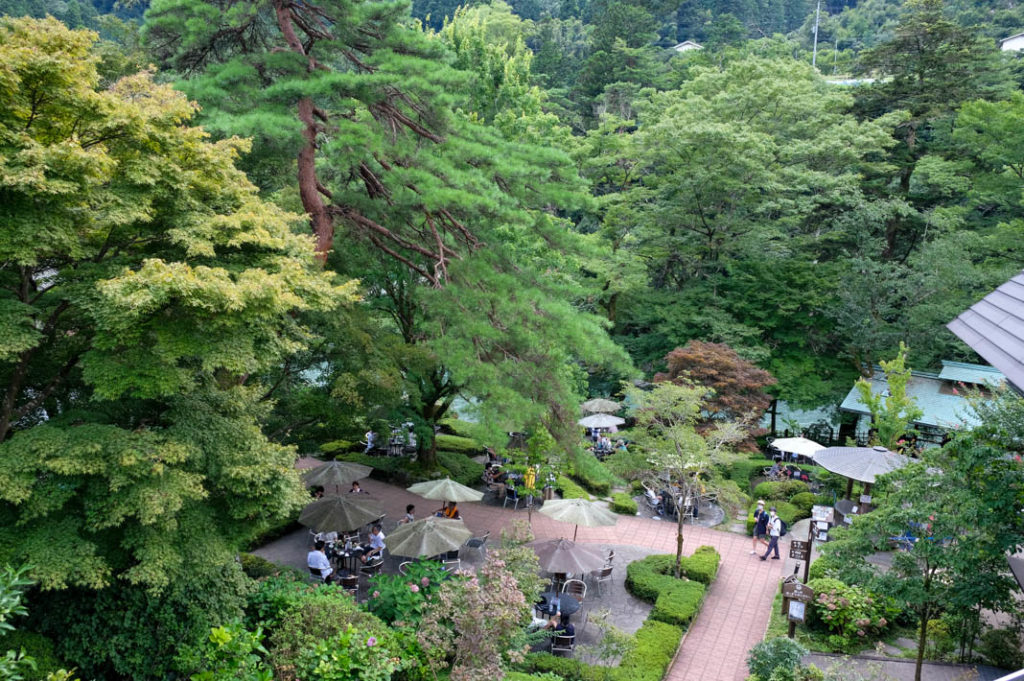
Tour the Sake Brewery
Although Sawanoi is the brand name, after the Sawai area that the brewery is located in, the actual name of the brewery is Ozawa Shozu. Founded in 1702, it is the oldest sake brewery in the Tokyo region and is a local favorite.
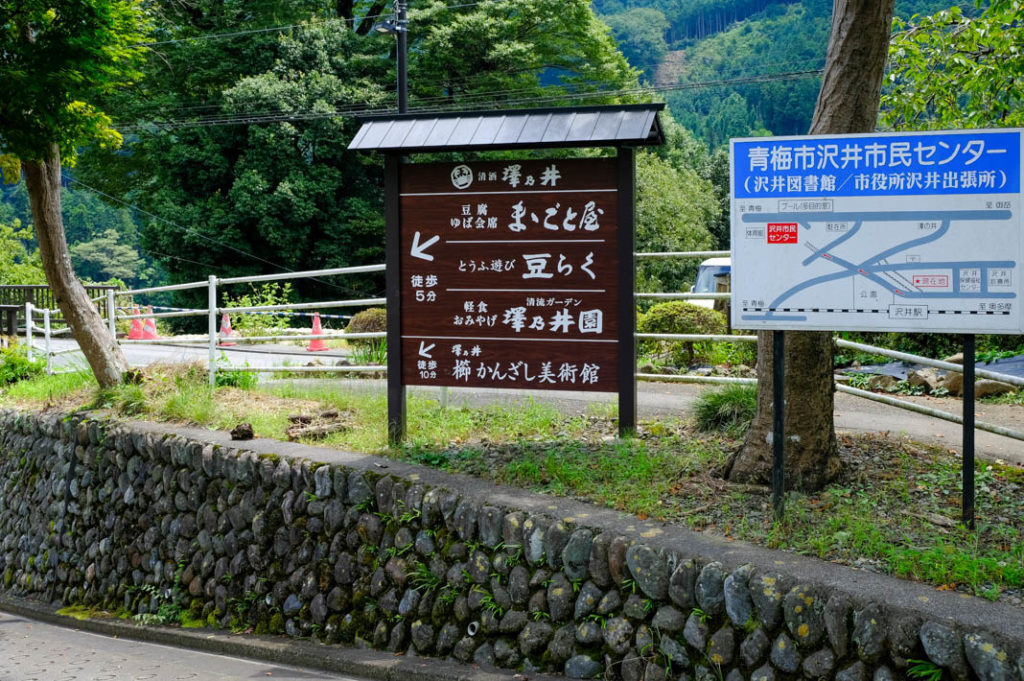
To learn all about this venerable establishment, join one of the brewery’s free tours . These tours are held four times a day and last about 45 minutes. There, you will learn more about sake production, and get to look around the distillery and storehouse. What sets Sawanoi sake apart is the pure mountain spring water used in the brewing process. The brewers are quite proud of this fact, and a highlight of the tour is the spring itself, dug 140 meters into the rock to access this special water. The tour concludes with a taste of the newest seasonal sake on hand.
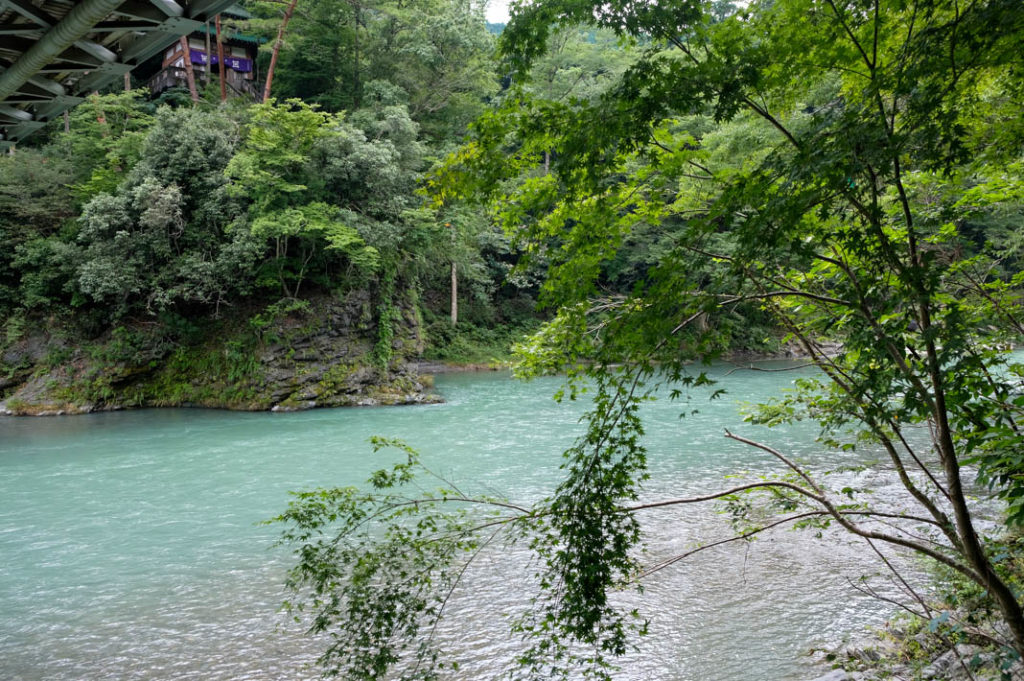
While I highly recommend this tour, do note that it is in Japanese, with printed English information available. However, a few times a month, special English tours are also offered. (These special English tours are also free.) Check the website for the schedule.
Sample more at the tasting room
One of my favorite facilities at Sawanoi Sake Brewery is their tasting room. Growing up in California, I’ve been to my share of wine tastings. This is a similar experience, but you get a lot more sake for your yen. Also, since the brewery is close to the station, you don’t need to plan for a designated driver for your day trip out of Tokyo.
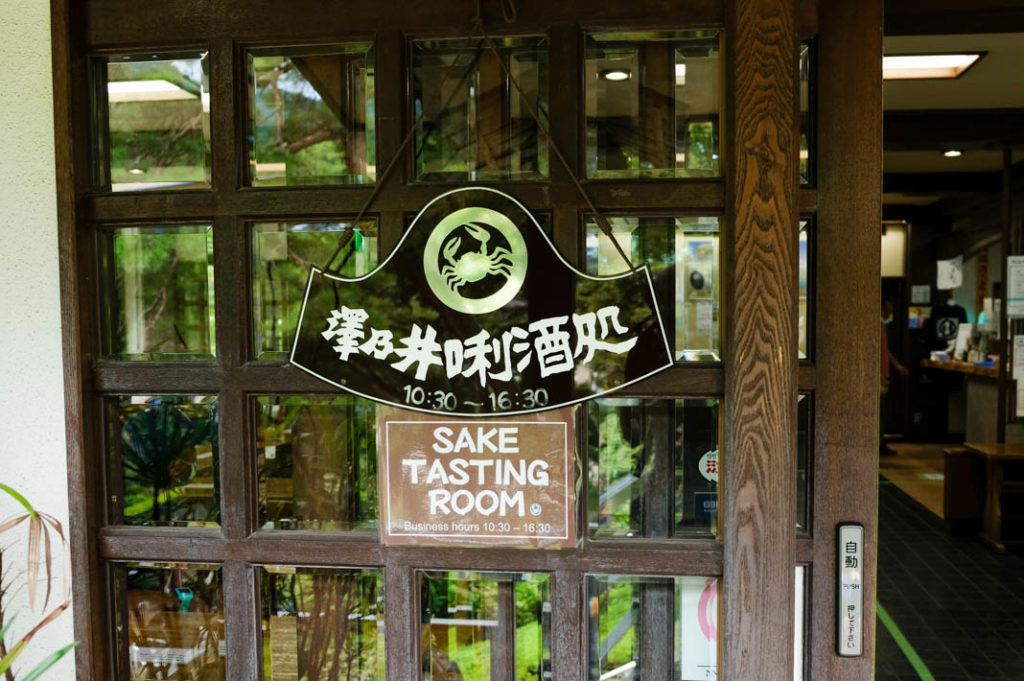
At the tasting room, you have the opportunity to try the different sakes that the brewery produces. The tasting menu has notes on the various brews both in Japanese and English. Usually, at least one of the sommeliers speaks good English, so feel free to ask any questions you may have. This is an excellent opportunity for novice sake drinkers to taste a number of sakes side by side and notice the differences in flavor. Each taste runs between ¥200-¥500 and includes a full glass in a ceramic cup with the Sawanoi Sake Brewery logo. Drink your sake in the tasting room itself or take it outdoors to one of the riverside tables. When you’re ready for another taste, bring your cup back to the tasting counter and your next pour is ¥100 off. At the end, you can take your cup home as a souvenir.
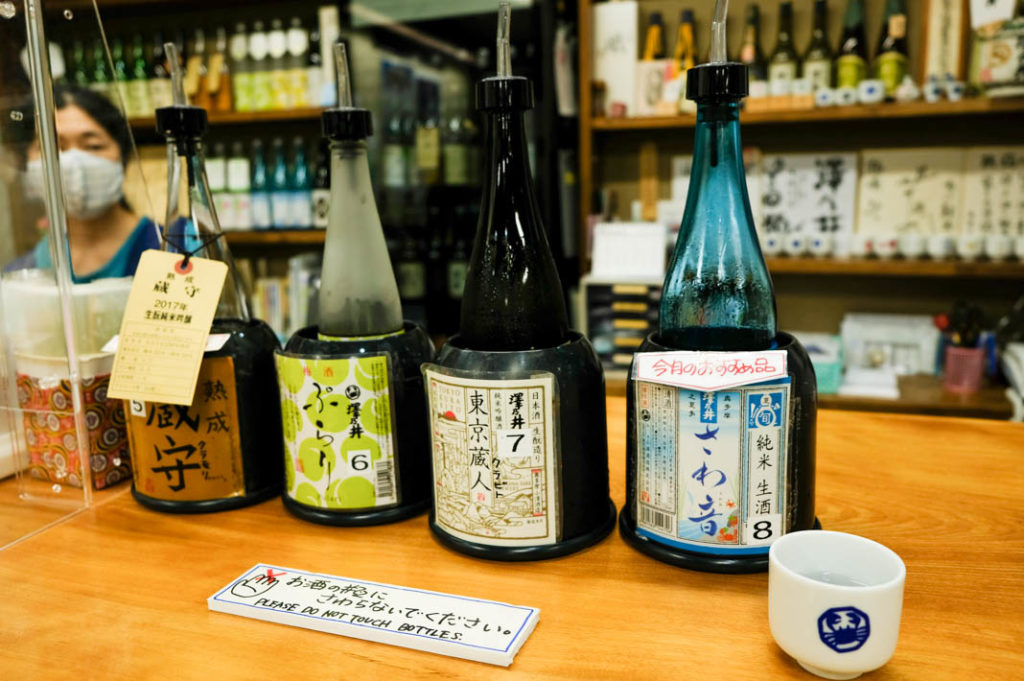
Dining and Other Facilities
By now you are surely hungry, and fortunately, Sawanoi has you covered. There are quite a few different choices for eating on the premises, from the snacks offered at the tasting room to a gourmet sit-down restaurant . My choice is Mameraku, a more casual restaurant that specializes in tofu and fermented dishes using the pure spring water of Sawanoi. The menu rotates seasonally, but for around ¥1500 one can expect an entree showcasing this special soft, flavorful tofu, surrounded by various side dishes and pickles. Even if tofu isn’t really your thing, trust us, you’ve never had tofu like this before!
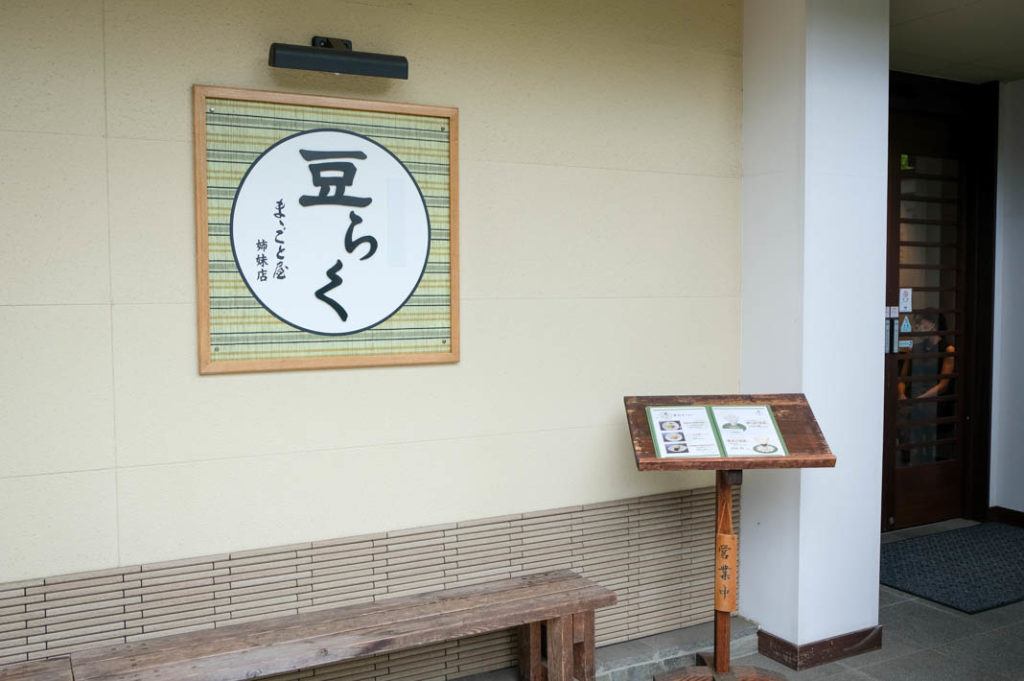
Other facilities on the premises include restrooms, a snack bar, a museum, and a gift shop where you can purchase your new favorite bottles to take home. The surrounding river area makes for a pleasant afternoon stroll, and in the summer months expect to see plenty of people rafting or wading in the shallows. Breathe in the fresh mountain air, take in the idyllic view, and enjoy your day trip from Tokyo at Sawanoi Sake Brewery.
Getting to Sawanoi Sake Brewery
To get to Sawanoi Sake Brewery, simply take the JR Chuo line to Sawai station, changing trains at Ome. The brewery is a 3-minute walk from the station.
Name: Sawanoi Ozawa Brewery Address: 2-770 Sawai, Ome, Tokyo Open: 8:00-17:00 (closed Mondays) URL: http://www.sawanoi-sake.com/en
Post by Japan Journeys .
RELATED ARTICLES MORE FROM AUTHOR
The oldest things to see in tokyo: ultimate guide, things to do (and eat) in nagano city, sampling local sake at niigata’s ponshukan sake museum, most popular, destroyed, dismantled, rebuilt: takada castle in niigata, backpacking through japan – an overview, omicho market, where kanazawa does its shopping, anonymous pleasures at no name ramen in kyoto, the hakone open-air museum: a playground for art enthusiasts, a visit to the oldest eel restaurant in tokyo: izuei honten, what’s up with these japanese fish flags koinobori and children’s day, onden’s japanese curry rice—a taste of home in the heart of..., nakameguro tour – a taste of trendiness, ariso sushi: a great pre-flight meal at haneda airport.

Top 5 Best Sake Breweries in Tokyo
Yuma Wada Lunch , Tokyo 0
Tokyo is a vibrant city with countless spots to visit. Things to do in Tokyo range from eating sushi at the world’s most famous fish market to checking out the colorful fashion trends in Harajuku. If you are a first-time visitor, a few days may not be enough to fully enjoy Tokyo! But if you have seen most of Tokyo after a few visits, and you’ve exhausted all the must-do spots – fought the crowds at Shibuya crossing, climbed Tokyo Skytree, wandered around traditional Asakusa – then you might look to venture further afield and explore where the locals go for fun and drinks. Let’s explore the best sake breweries in Tokyo!
If you are looking to taste and learn about sake, Try in-person sake tasting in Tokyo or our online tasting experience !
Looking for a less touristy spot? Visit a Sake Brewery!
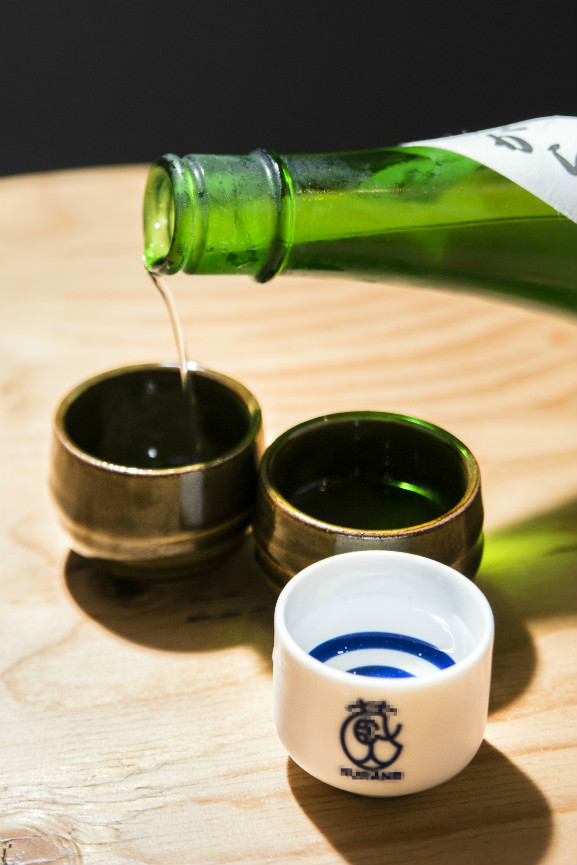
As a guide, I often hear from travelers who want to get off the beaten path in Tokyo. For an interesting and authentic outing, I would suggest one of the many great sake breweries, which you can visit with just a day trip from the city. Although it is not widely known, Tokyo boasts nine sake breweries, and there are many sake breweries in nearby prefectures as well. Most of them offer brewery tours and tastings. While none of these breweries is a secret, most travelers still miss out on them in favor of more touristy spots in Tokyo. If you love Japanese food and sake, I would encourage you to visit one of these sake breweries to learn more deeply about the brewing process and the different types of sake. Here are five of the best sake breweries to visit on a day trip from Tokyo.
Ozawa Sake Brewery (小澤酒造)
Established in 1702 with over 300 years of history, Ozawa Sake Brewery is the oldest sake brewery in Tokyo. The brewery is famous for its brand “Sawanoi”. Located way out west in the city of Ome, an hour and a half by train from central Tokyo, this brewery is a perfect getaway from the city. Surrounded by lush mountains and clean air, you can enjoy the beautiful sceneries of Japan’s gorgeous landscape without even stepping out of Tokyo. The brewery has a sake tasting bar, a sake shop, two homemade tofu restaurants, and a large garden on the property. The garden is a sake lover’s paradise overlooking the Tama River, where you can order all of Ozawa brewery’s products. You can also order a sake tasting flight and some snacks to enjoy as you bask in the tranquil nature. There are free guided tours of the brewery followed by a free tasting of seasonal sake at 11am, 1pm, 2pm and 3pm every day of the week except Monday. The tours are available in Japanese, with English information provided. They also recently started a guided brewery tour in English taking place twice a week, usually at 11:30am on Tuesdays and Thursdays. The brewery tours, whether in Japanese or English, must be booked in advance through a form on their website: http://www.sawanoi-sake.com/en
The regular tour (in Japanese) runs four times a day, but as there are limited spaces it is really best to book in advance.
If a three-hour round trip from central Tokyo sounds like a lot of time to spend for a trip to just a sake brewery, there are many other things in the area to keep you entertained. One of the prominent mountains for hiking in Tokyo, Mount Mitake, is walking distance from the brewery so it makes a good start or end to a hiking trip. There are also two museums nearby, one dedicated to Gyokudo Kawai, a master of Japanese-style painting, and one features Kanzashi, traditional Japanese hair accessories.
Ozawa Sake Brewery Sake Brand: Sawanoi Address: 2-770 Sawai, Ome-shi, Tokyo Phone: 0428-78-8215 Hours: 8:00 – 17:00 Closed: Monday (If a Monday is a national holiday, closed the following Tuesday)
Website: http://www.sawanoi-sake.com/en
Tour Schedule: Duration 45 Minutes (Includes sake tasting) Tours in Japanese – Starting from 11:00, 13:00, 14:00, 15:00 (Closed Mondays) Tours in English – Starting from 11:30 (Only Tuesday and Thursday)
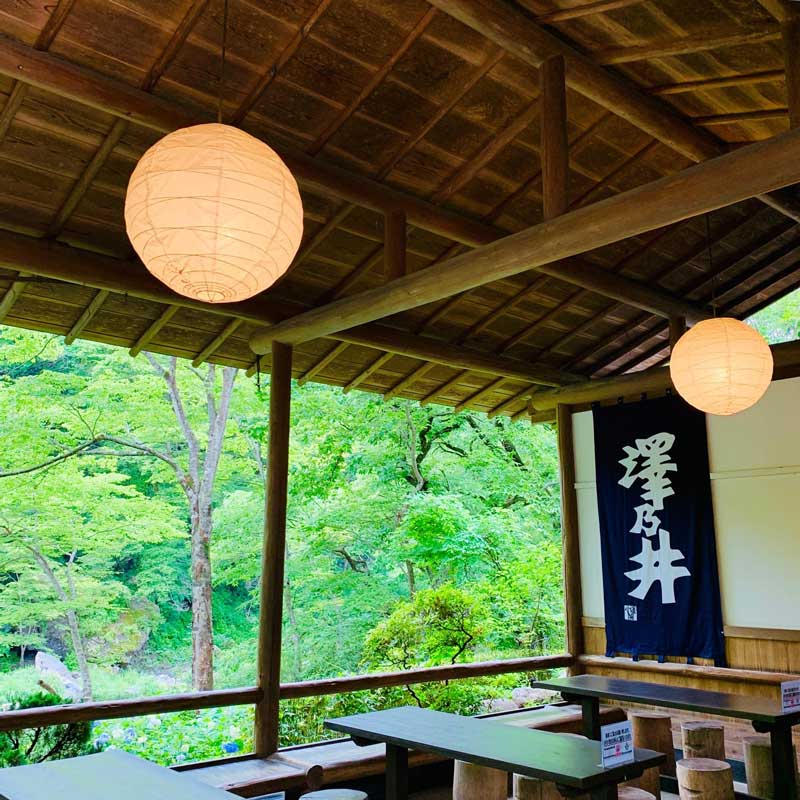
Ishikawa Brewery (石川酒造)
First established in 1863 and moved to its current location in Fussa city in 1881, Ishikawa brewery is a 120-year-old sake and beer brewery producing Sake “Tamajiman” and craft beers Tama no Megumi and Tokyo Blues. The brewery is located on the west side of Tokyo, around fifty minutes away from JR Shinjuku station by train. The brewery complex consists of a historical beer museum, a sake shop, an Italian restaurant, and an onigiri (rice ball) restaurant. The area retains a sophisticated and traditional atmosphere, as the old Japanese warehouses, called “ kura ,” and classic sake cellar are still in use. The brewery also offers free tours in English and French on weekdays, where you can learn about Ishikawa brewery’s products, sake brewing process, and the history of its surrounding region. Ishikawa BrewerySake Brand: Tamajiman Address: 1 Kumagawa, Fussa-shi, Tokyo Phone: 042-553-0100 Hours: 9:00 – 16:00 Closed: Tuesday
Website: http://www.tamajiman.com/english/
Tour Schedule: Duration 60 Minutes (Includes Sake Tasting) Tours in English – They accommodate tours from 10:00 – 16:00 Advanced reservations are required at least one day prior to the day of the tour. To register for the tour, apply using the reservation form below: https://www.tamajiman.co.jp/en/contact/
Toshimaya Shuzo(豊島屋酒造)
When people think of a sake brewery, they often envision a place out in a rural area, surrounded by lush, beautiful nature. However, this sake brewery will make you throw your assumptions out the window. Toshimaya is located in a residential area in Higashimurayama city, which is less than an hour away by train from Shinjuku station. With its roots going all the way back to 1596, Toshimaya is one of Tokyo’s oldest sake makers, that have passed down their traditional sake brewing process from generation to generation. The brewery originated when its founder opened the original sake store and sake bar in central Tokyo in 1596. In 1930, the brewery moved to its current location and started producing sake. Like any brewery, the water source for sake production is critical, and here it’s obtained from underground water that flows all the way from Mt. Fuji. Although there are no regular brewery tours, they offer a private sake tour in Japanese that includes a tasting of 4-6 kinds of sake. They also often hold events and workshops. Please check their website for upcoming events. Toshimaya Shuzo Sake Brand: Okunokami, Kinkon Address: 3-14-10 Kumegawa-cho Higashimurayama-shi, Tokyo Phone: 042-391-0601 Hours: 9:00 – 17:00 Closed: Saturday and Sunday
Website: toshimayasyuzou.co.jp Tour: Private tours are available only in Japanese by reservation Tour Fee: ¥550 includes 4-6 types of sake tasting
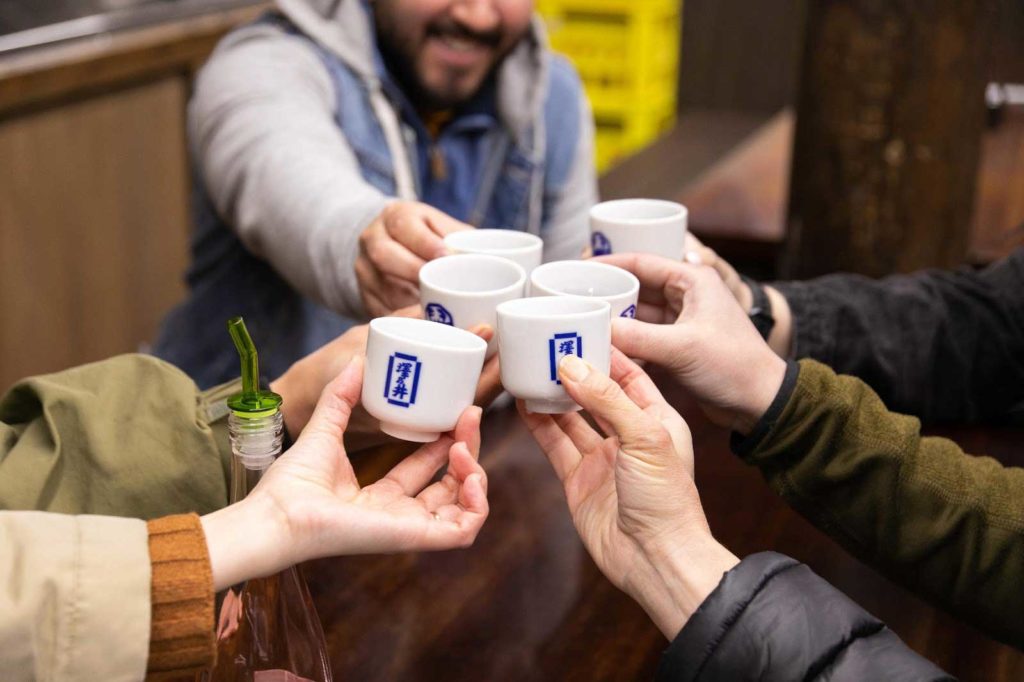
>> Tips for a great Sake Brewery Visit
An excellent way to discover the wonderful world of sake is to visit a sake brewery. But considering how traditional and private many Japanese sake breweries seem, you might feel a bit daunted. Now that you’ve seen some of the best sake breweries in Tokyo, here are some tips you need to know before visiting. Rule #1: DO NOT eat fermented food on the day of visit This might sound odd, but many sake breweries ask that you refrain from eating Natto (fermented soy beans) on the day of visiting. The brewing process of sake is very delicate and complex, and the fermented Natto bacteria is very strong and could suppress the bacteria that is essential to the fermentation process. For many of you, forgoing the sticky fermented Natto soybeans shouldn’t be a challenge anyway, but it’s good to know as it could be devastating for sake breweries. Aside from that, refrain from eating any other fermented food such as yogurt, cheese, and pickles, and refrain from wearing strong perfume on the day of visit for the same reason. Rule #2: Wear comfortable shoes and clothes There are many slippery places inside breweries, such as wet floors, loose hoses, and steel scaffolding next to the brewing tanks, so please wear comfortable shoes. If you are allowed inside the brewing area proper, you might be expected to wear a hairnet, lab coat, and/or boots. Rule #3: Ask questions and have fun! Don’t be afraid to ask questions and talk to the brewery employees as well as the others on your tour. Even if you can’t understand Japanese, it’s a fun experience for everyone involved–including those running the tour. So don’t be shy, and take advantage of anything and everything offered to you!
Conclusion of best sake breweries in Tokyo
Hope you enjoyed this aritcle! As you can see, there breweries are not easy-to-access from downtown Tokyo. Plan a half-day or full day trip to visit one. If you don’t enought time for that, try a sake tasting experience like this at a bar. Otherwise, there are other breweries in Kyoto/Osaka/Kobe area.
If you have any questions, feel free to drop us a note or leave a comment!
Related Posts
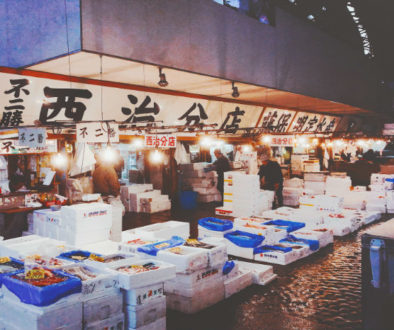
Dinner , Lunch , Tokyo
Tokyo Food Guide 2023: Top 5 Foods You Need to Try
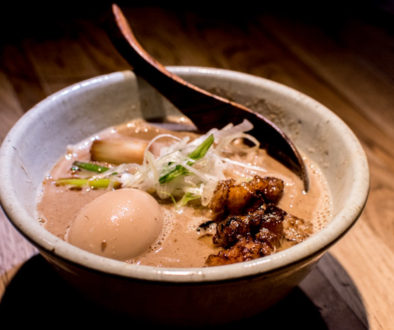
Dinner , Kyoto , Lunch
Kyoto Food Guide: Best local food to eat in Kyoto
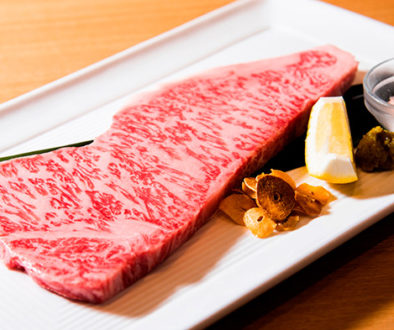
Best Wagyu Beef in Tokyo in 2021
Leave a reply cancel reply.
Your email address will not be published. Required fields are marked *
Nada Sake District
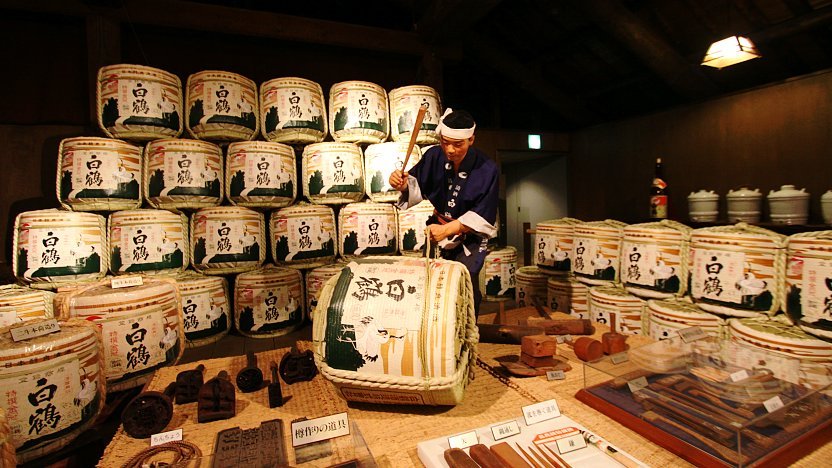
Kobe 's Nada (��) district is Japan's top sake producing region. It has long been famous for its sake due to the availability of high quality rice , suitable water, favorable weather conditions and its proximity to Kobe Port and Osaka .
Many sake breweries operate in the Nada district, which stretches approximately three kilometers east to west. Some open stores and/or exhibition rooms to the public and allow guests to taste their sake. Some of them also maintain a museum about sake brewing.
The district makes for a good half-day walk exploring its nice mix of older buildings and modern breweries. If time is limited, we recommend visiting the Hakutsuru Sake Brewery Museum: its well-presented exhibits have comprehensive English coverage, and sake tasting is available.

Sawanotsuru Sake Museum

Kobe Konan Muko no Sato

Kobe Shushinkan Brewery
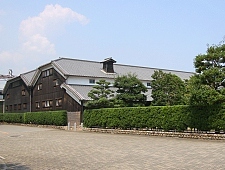
Hakutsuru Sake Brewery Museum
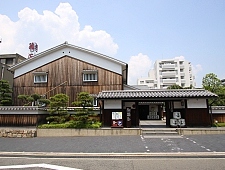
Kikumasamune Sake Museum

Sakuramasamune Sake
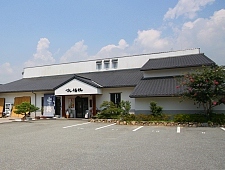
Hamafukutsuru Ginjo Brewery
Getting there and around.
Hanshin Railways, Hankyu Railways, and the JR Tokaido Line run parallel north of the Nada district, offering connections to both Kobe and Osaka . The stations on the Hanshin Line are the closest to the district and its attractions.
You may choose to start exploration of the district from any of the stations along it. The Hakutsuru Sake Brewery Museum can be reached in five minutes on foot from Sumiyoshi Station on the Hanshin Railway Line (10 minutes, 200 yen from Sannomiya Station). Japan Rail Pass holders may want to alight at JR Sumiyoshi Station (8 minutes from JR Sannomiya Station), from where it is a 15-20 minute walk to Hakutsuru.
How to get to and around Kobe
Questions? Ask in our forum .
Links and Resources
Sawanotsuru, hotels around kobe.
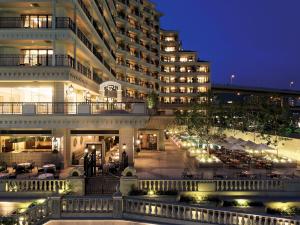
Experiences around Kobe
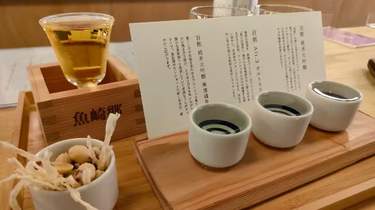
Accessibility Links

Japan’s secret sushi and sake hot spot
How the passion of a local sake master has transformed a little-known town into a gourmet destination.

This article contains affiliate links that can earn us revenue
Around the turn of this century, Ryuichiro Masuda, the fifth-generation head of Japan’s Masuda Sake Brewery , returned home from a few months of R&R (the research and relaxation variation) in Burgundy and Bordeaux, having experienced something of an awakening. How could he expect sake to compete with wine on a global scale when its historic home, Toyama, was best known — if at all — for having the world’s most beautiful Starbucks?

There was no comparison between Épernay’s prestigious Avenue de Champagne, for example, and the ghostly quiet street in Iwase, a suburb of Toyama, where Masuda’s family has brewed its sake since 1905. “When I returned from Europe I suddenly saw Iwase like a foreigner,” Masuda recalls. “The buildings were all shuttered and everyone had left for Tokyo or Osaka. There was no culture, no history, no luxury, no reason for anyone to come here.”
Inspired, Masuda began buying Iwase’s abandoned shops and warehouses and convincing local chefs and craftspeople to move in. It was, at times, a tortuous process. He was so committed to refurbishing these buildings using traditional techniques that he spent almost £2 million on just one workshop. But it was worth it.

The space was taken by a graduate of Toyama’s new Institute of Glass Art, Taizo Yasuda, an expert Murano glass craftsman. The wood sculptor Tsutomu Iwasaki soon moved in across the street, shortly followed by the lacquer artist Senki Hashimoto and the ceramicist Gaku Shakunaga . And where the artists led the chefs followed.
Advertisement

Today that same unassuming street is home to six Michelin-listed restaurants, including the two-Michelin-star Oryouri Fujii and the Michelin-starred, French-fusion Cave Yunoki . The chefs of both restaurants, Hironori Fujii and Eiju Yunoki respectively, honed their craft in Tokyo before coming to Iwase, where their cooking could benefit from the variety and freshness of fish caught in Toyama Bay. Indeed, connoisseurs will tell you that Toyama Bay sushi is unrivalled. At Gejo , Iwase’s first dedicated sushi restaurant, Takahiro Gejo has quietly garnered a reputation as one the country’s most exciting young chefs.
“Nowhere in Japan can compete with the quality of fish we have here,” says Fujii, who as part of his 14-course tasting menu proudly serves the bioluminescent firefly squid, only found in Toyama Bay, two ways. “This restaurant simply has to be here.”

That each of course is paired with a different sake — or indeed that sake heads up the (not just) wine lists at most of the street’s restaurants — is certainly no coincidence. Many of Masuda Sake Brewery’s 100-plus assemblages play starring roles, as does IWA 5 , the new sake made by Richard Geoffroy, Dom Pérignon’s former chef de cave, with a little help from Masuda himself. Meanwhile, Masuda’s relationship with Geoffroy has also offered a peek into the inner workings of many of the LVMH brands, not to mention counsel from key players at the likes of Chanel and Loro Piana.
“I would say that 95 per cent of sake brands don’t have an international understanding. They simply assume people will like their product,” says Masuda, who jokes that years of quaffing wine has westernised his own way of thinking. “They lack any sense of storytelling,” he adds.

While Masuda claims the Iwase project is only 5 per cent complete, he isn’t exactly desperate to bring coachloads of tourists to the region. “He’s more interested in making the local people proud of where they come from,” says Shakunaga, whose crockery is used in most of Iwase’s restaurants and the Araki in London. “And, of course, for his sake to be respected around the world.”
So far he has managed that relatively well. Very few international tourists make it to Toyama prefecture — let alone Iwase — but the secret is well and truly out among Japan’s most discerning diners, and there are signs that his stance is softening. The Japanese luxury travel agency Wondertrunk & Co now offers guided tours around Iwase, and Masuda is in talks with both Aman and Zenagi about augmenting the limited luxury accommodation in the area (currently the apartment above a local deli, Tsuriya , is your best bet short of journeying back into Toyama city centre). Later this year the street will welcome a new furniture shop, Yunoki’s brother will open a pizza restaurant, and Masuda has grand plans for a new sake hall.
“Look at how San Sebastian has transformed over the past 30 years,” Masuda says. “And that is largely thanks to wine. In 30 years’ time Iwase will be unrecognisable too.”
Details Wondertrunk offers a three-day trip exploring Toyama prefecture from £2,000pp (excluding flights) with a mix of private and public transportation and accommodation. The trip includes meals at Michelin-listed restaurants and visits to appointment-only artisan ateliers and a sake brewery, wondertrunk.co . Finnair flies from London to Tokyo, via Helsinki, from £846 return
Related articles


Food & Drink
Sake brewery, brooklyn kura, brings international consciousness and cultural agenda to industry city.
Brooklyn Kura, a sake brewery in Sunset Park, is working to bring together those interested in Japanese rice wine. The team behind Industry City’s sake spot keeps their agenda busy with charity events, classes and unique pop-up cookouts.
Brooklyn Kura is made up of different concepts. It is a factory, a tap room, a restaurant, a center for sake studies and a cultural hub. Renowned Japanese chefs, artists and different organizations have put together experiences that connect people who have a common interest — sake.

Veselka’s 70th Anniversary with Ukranian Pride
Schneps connects.
- Google Play
“I mean, it’s delicious,” said Kura’s co-founder Brian Polen. “We are not trying to sell something that isn’t wonderful and culturally connected.”
In January, the brewers hosted a fundraiser to aid the victims of Japan’s latest 7.5 magnitude earthquake that left 240 dead. More than 100 people attended.
To celebrate Women’s History Month, Brooklyn Kura teamed up with chefs Maiko Kyogoku and Elena Yamamoto, the female forces behind the critically acclaimed Bessou in Chelsea. They paid homage to Japan’s obanzaiya chefs — those who specialize in traditional Japanese cuisine, native to Kyoto, who are mostly females.
This month, Kura’s Study Center offered an introductory class to sake and a sake and dessert pairing lesson. Later this week, the brewery will host a culturally-connected cocktail pop-up alongside Brooklyn’s Faccia Brutto, a company dedicated to classic Italian spirits.
Brooklyn Kura comes to life
Polen says the journey to Brooklyn Kura began after he met his business partner, biochemist Brandon Arbuer, at a mutual friend’s wedding in Japan.
“I was looking for a hobby,” he said, and Arbuer had brewed sake in his basement in Portland. Polen started making it in his dining room.
And so, the two started producing at a small scale in a quaint facility in Bushwick, within an old Pfizer building. In 2017, Polen and Arbuer moved to Industry City, having scored an investment from one of Japan’s most respected sake breweries, Hakkaisan. By January 2018, they sold their first bottle.
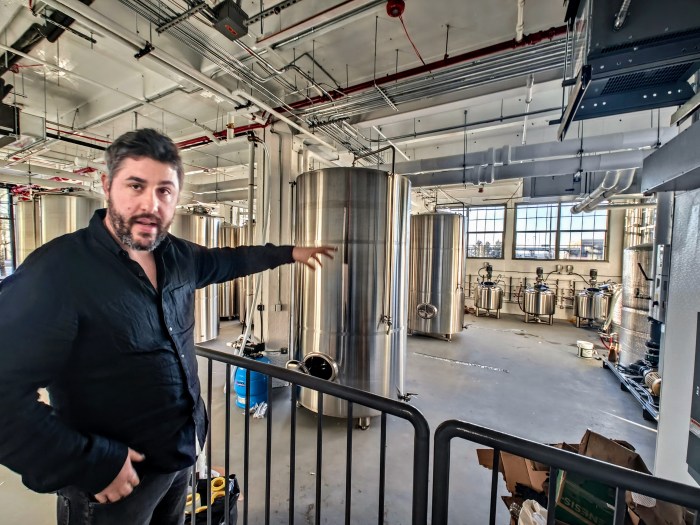
“We won competitions in the blind,” said Polen. “Like California wine transformed the industry, it’s all about the producer. Once people try our sake, they let go of strict perceptions of origin and realize there is a huge range of good sake. There are small local producers, national producers, levels of care and different branches. It doesn’t have to be fancy or esoteric, it can be enjoyable and affordable.”
Sake is made through a 45-day process out of four ingredients: water, rice, yeast, and koji. Some of its flavor categories are sweet like caramel or brown sugar, grassy or woody, lacti, light and dry, floral, fruity, such as melon, apple, and pear, savory, earthy and umami.
“Japan’s water is beautiful and relatively soft,” Polen said. “That is arguably the reason behind the quality of their sake. Luckily, NYC, unlike many dense urban American cities, has access to high-quality water. Tap water here is delicious and people attribute the quality of bagels and pizza and ramen to that water. It’s relatively soft in the spectrum of Japanese brewing water and we knew that.”
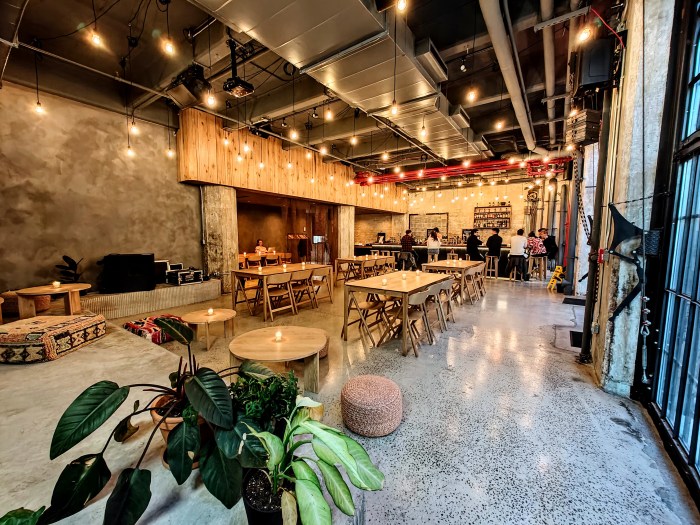
The sake enthusiast started by leaving bottles at bars and restaurants where he knew the principles of Kura would be appreciated, like Blue Hill and Ivan Ramen, which use locally sourced seasonal ingredients and put in a creative twist to their dishes. Now they are looking at making 180,000 litters a year.
Brewers also plan to launch a new Japanese spirit this summer: a shochu, which is traditionally stronger than sake, but softer than vodka, made out of their sake’s byproduct.
A step beyond sake
Other byproducts from the brewery end up in the restaurant’s kitchen. The rice’s kasu, the solid part left behind in the sake process, is used for Kura’s freshly baked two-tone focaccia with furikake and garlic butter and for their ginger and vanilla doughnut holes.
Kasu is also used in their cocktails and for pickling their unusual veg and fruit selection including tart and sweet strawberries, blackberries, cauliflower and peaches.
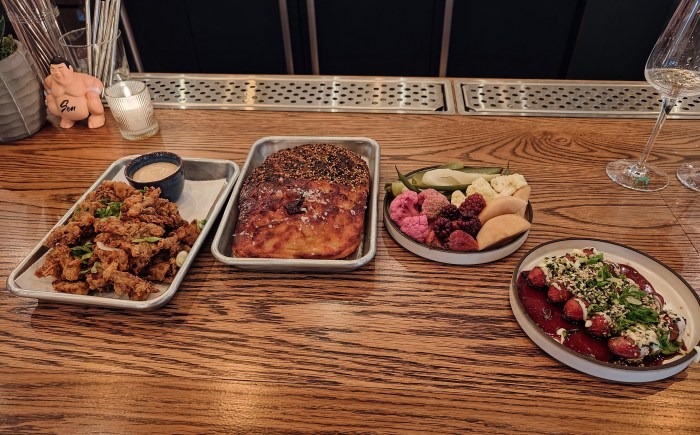
In the same flavor pallet, mixing sweet and savory tones, the smoked and caramelized cocktail Berkshire sausages are one of Kura’s staff most recommended dishes. For vegetarians, the chicken fried oyster mushroom brings a satisfactory crips.
The taproom and restaurant share a calming, minimalistic space, which contrasts with the brewery’s industrial guts that can be seen from Industry City’s patio. Brooklyn Kura also offers tours of the factory.
About the Author
Jobs in new york, add your job.
- The 13th Child Behavior Analyst, P.C. ABA Therapist
- A&J Fire Extinguisher Fire Safety Technician
- NY ELITE CANNABIS- NYS LEGAL ADULT USE DISPENSARY Sales Personnel/ BAYSIDE
View all jobs…
Things to do in brooklyn.
Post an Event

Earth Rocks! Brooklyn Children’s Museum

$1 Book Sale and Gift Shop – Every Purchase Supports our Library Brooklyn Public Library Sheepshead Bay

Arbor Day at the Audubon Center Prospect Park Audubon Center

Sandwich Comedy Union Hall

Sesame Street Live! Say Hello Kings Theatre

Bluey’s Big Play Kings Theatre
View All Events…
Police Blotter
- Boerum Hill: 84th Precinct: Bicyclist robbed on Manhattan Bridge
- Boerum Hill: 84th Precinct: Old Navy employee assaulted
- Clinton Hill: 88th Precinct: Clocked for a radio
- Clinton Hill: 88th Precinct: Foul play
- Clinton Hill: 88th Precinct: Delivery riders targeted in Fort Greene
- Bath Beach: 62nd Precinct: Target employee gets into tussle with customer

Get Brooklyn in your inbox
Latest news.

Related Articles
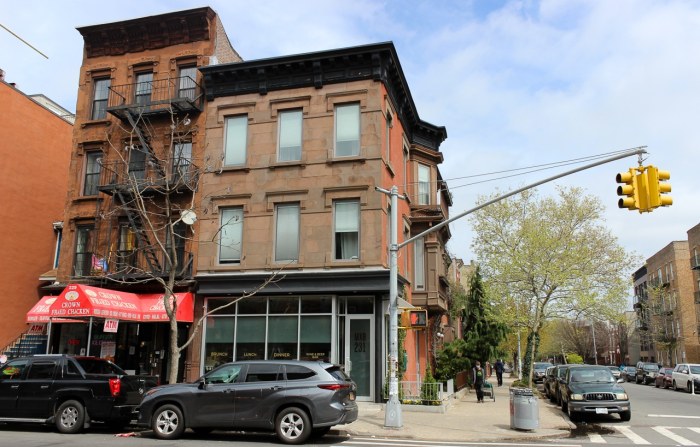
More from Around New York

Hundreds of athletes, academics, and groups tell NCAA to support trans athletes

EmPowerHer to honor prominent Haitian-American entertainment publicist

Teaching Children About Financial Literacy: An Expert Weighs In

Lindor slugs 2 home runs, Mets end 3-game skid with 8-2 win over Giants
- Media & Industry
- Meetings & Events
- Select Language 简体中文 繁體中文(香港) 繁體中文(臺灣) India (English) Bahasa Indonesia 한국어 ภาษาไทย Tiếng Việt Singapore (English) Philippines (English) Malaysia (English) Australia/New Zealand (English) Français Deutsch Italiano Español United Kingdom (English) Nordic countries(English) Canada (English) Canada (Français) United States (English) Mexico (español) Português العربية Japan(日本語) Global (English)
- India (English)
- Bahasa Indonesia
- Singapore (English)
- Philippines (English)
- Malaysia (English)
- Australia/New Zealand (English)
- United Kingdom (English)
- Nordic countries(English)
- Canada (English)
- Canada (Français)
- United States (English)
- Mexico (español)
- Global (English)
- Fujiyoshida
- Shimonoseki
- Ishigaki Island
- Miyako Island
- Kerama Island
- Tokyo Island
- Koka & Shigaraki
- Hida Takayama
- Ginza, Nihonbashi
- Beppu & Yufuin (Onsen)
- Ginzan Onsen
- Nagasaki Islands

- Kumano Kodo
- Shikoku Karst
- Amami Oshima
- Hachimantai
- Omihachiman
- Aizuwakamatsu

- Diving in Japan
- Skiing in Japan
- Seasonal Flowers in Japan
- Sustainable Outdoors
- Off the Beaten Track in Japan
- Scenic Spots
- World Heritage
- Home Stays & Farm Stays

- Japanese Gardens
- Japanese Crafts
- Temple Stays
- Heritage Stays
- Festivals and Events
- Theater in Japan
- Japanese Tea Ceremony
- Cultural Experiences in Japan
- Culture in Japan

- Local Cuisine Eastern Japan
- Local Cuisine Western Japan
- Local Street Food
- Japan's Local Ekiben
- Japanese Whisky
- Vegetarian and Vegan Guide
- Sushi in Japan Guide
- Japanese Sake Breweries

- Art Museums
- Architecture
- Performing Arts
- Art Festivals
- Japanese Anime and Comics
- Japanese Ceramics
- Local Crafts

- Scenic Night Views
- Natural Wonders
- Theme Parks
- Samurai & Ninja
- Iconic Architecture

- Wellness Travel in Japan
- Japanese Ryokan Guide
- A Guide to Stargazing in Japan
- Relaxation in Japan
- Forest Bathing (Shinrin-yoku)

- Experiences in Japan
- Enjoy my Japan
- National Parks
- Japan's Local Treasures
- Japan Heritage
- Snow Like No Other
- Wonder Around Japan

- Visa Information
- Getting to Japan
- Airport Access
- COVID-19: Practical Information for Traveling to Japan
- Anime Tourism
- Countryside Stays
- Accessible Tourism
- Hokkaido Great Outdoors
- Scenic World Heritage in Tohoku
- Shikoku’s Nature and Traditions
- Southern Kyushu by Rail

- Traveling by Rail
- How to Travel by Train and Bus
- JR Rail Passes
- Scenic Railways
- Renting a Car
- Sustainable Travel in Japan
- Travel Brochures
- Useful Apps
- Online Reservation Sites
- Eco-friendly Accommodation
- Luxury Accommodations
- Traveling With a Disability
- Hands-free Travel
- How to Book a Certified Tour Guide
- Volunteer Guides
- Tourist Information Center

- Japanese Manners
- Spring in Japan
- Summer in Japan
- Autumn in Japan
- Winter in Japan
- Cherry Blossom Forecast
- Autumn Leaves Forecast

- Japan Visitor Hotline
- Travel Insurance in Japan
- Japan Safe Travel Information
- Accessibility in Japan
- Vegetarian Guide
- Muslim Travelers
- Safety Tips

- JAPAN Monthly Web Magazine
- Arts & Cultures
- Nature & Outdoor
- Festivals & Events
- Insider Blog
- Things to do
- Local Guides
- Food & drink
- Traditional
- Hokuriku Shinetsu

My Favorites
${v.desc | trunc(25)}
Planning a Trip to Japan?
Share your travel photos with us by hashtagging your images with #visitjapanjp
©Fukumitsuya Sake Brewery
- Visit a Sake Brewery in the Heart of Kanazawa
See how sake is made, then savor the product at historic Fukumitsuya Sake Brewery
Anyone looking to wet their whistle with a sip of Japan's signature beverage should plan a stop at the Fukumitsuya Sake Brewery. Conveniently located in Kanazawa's traditional city center, this historic brewery has been producing sake since 1625. The sake they brew with time-honored techniques passed down through the generations has long been treasured by residents of Kanazawa, as well as by sake fans far and wide. Check it out for yourself during a tasting at the brewery.
Kanazawa is blessed with pristine and abundant water, flowing from Mt. Hakusan, then and being filtered underground for over 100 years. With this water, together with premium sake rice, yeast, and koji (a mold used in the fermentation process), Fukumitsuya brews only junmai (pure rice) sake, the absence of additives ensuring a clear, rich taste.
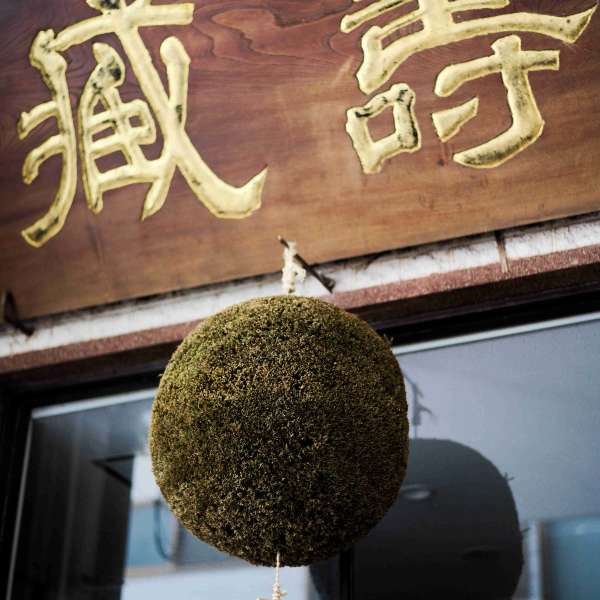
Visit during the brewing season from November to March and you can take a guided tour of the brewery, giving you an inside look at the fascinating process by which sake is brewed. Tastings are available year-round; if you're not the drinking type, the brewery store also offers a range of healthful food and non-alcoholic beverage items, along with skin care products making full use of the power of fermentation.
Fukumitsuya has another gift shop in the city that sells not only sake, but foods created by fermentation and cosmetics made from sake.
Access: From Tokyo Station, take the Hokuriku Shinkansen bullet train to Kanazawa Station (about two hours 30 minutes), then take Hokutetsu Bus No. 12 to the Kodatsuno stop (about 13 minutes). The brewery is a one-minute walk from there.

Fukumitsuya Sake Brewery
Our recommendations, explore by interest.

Search by Area
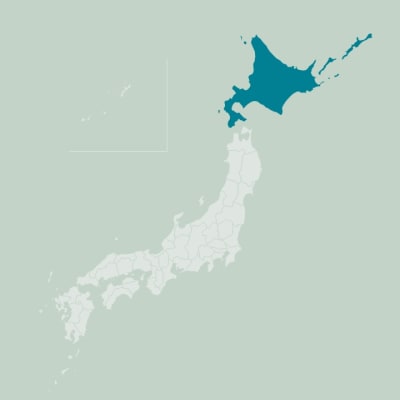
Please Choose Your Language
Browse the JNTO site in one of multiple languages
Skip to content
Your browser does not support JavaScript, or it is disabled.Please check the site policy for more information.
- National Report
- Korean Peninsula
- Around Asia
- Manga & Anime
The Asahi Shimbun
Struggling sake breweries try to jump on whisky bandwagon
THE ASAHI SHIMBUN
April 15, 2024 at 07:00 JST

Sake breweries across Japan are venturing into whisky production, a move one industry expert described as their “last trump card” for survival.
Consumption of rice wine continues to decline, while Japanese whisky has grown in popularity, especially among foreigners.
Hopes are also high that the shift to whisky will help revitalize regional communities.
Funasaka Sake Brewery, based in Takayama, Gifu Prefecture, in spring last year opened its whisky-producing Hida Takayama Distillery on the former site of Takane Elementary School, which closed in 2007.
Two pot stills for batch distillation of spirits are installed on the stage in the former gymnasium. Some of the whisky barrels are stored in what used to be the principal’s office.
The brewery’s production goal is around 40,000 liters of whisky in its initial fiscal year. The spirit is expected to hit the market in 2026 at the earliest because the maturation process takes at least three years.
The undertaking has enlivened the community.
The beloved elementary school is now a local heirloom under the new role of a whisky distillery.
Nissin Furniture Crafters Co. in Takayama has produced the Hida Barrel, an oak cask for whisky maturation now used by Hida Takayama Distillery.
It is made with a wood-bending technique used in famed furniture manufactured in Hida, northern Gifu Prefecture, and draws on the skills and expertise of Hida craftspeople.
The distillery is located in what used to be called Takane village, which disappeared when it merged into Takayama in 2005. The district’s population was 660 that year, but it plunged to only 275 in 2023.
There are hopes the distillery can revitalize the aging and remote community while promoting exchanges with people and businesses outside the district.
Kanda Machi Okoshi Co., a Gifu-based community development company under the umbrella of the Juroku Financial Group, has teamed up with Nagoya-based JR Tokai Bus Co. to operate the first one-day bus tours from Nagoya to Takane.
The tours, which include visits to the distillery, the oak cask making site and Takayama’s old townscape, are aimed at whisky lovers.
Participants can also deepen their knowledge during a whisky seminar given by instructor Nana Inoue in the bus.
“We have planned these attractive, fan-oriented tours for whisky enthusiasts,” said an official of the bus operator. “We hope to continue backing whisky production that has begun in this depopulated community.”
TWO-WAY PRODUCERS
Funasaka is another sake brewer that is turning into a “two-way” producer of Japanese rice wine and whisky for survival.
Sake consumption has dwindled, while shochu-based highballs have grown in popularity among young people and demand from foreigners has risen for Japanese whisky, officials said.
Kiyosuzakura Brewery Corp., based in Kiyosu, Aichi Prefecture, is known for its Kiyosu-jo Nobunaga Onikoroshi sake. It began producing Aichi Craft Whisky Kiyosu in 2014.

The whisky, made with sake yeast and stored in a cellar for five years, was put on sale exclusively in the Tokai region in 2019.
A faint and sweet aroma, reminiscent of vanilla, wafts from a glass of Aichi Craft Whisky Kiyosu. It tastes powerful and heavy when held in the mouth.
The brewery, founded in 1853, started whisky production some 15 years ago.
One advantage it had was the availability of a shochu distillation facility, which meant the brewery did not have to invest heavily in new equipment.
Sake breweries face a big gap between the high season of winter and the slack season of summer.
Many breweries continue to brew sake in winter and produce whisky in summer.
Other factors behind their entry into whisky production include having the discretion to choose the ingredients, alcoholic strengths and other particulars. Some are attracted to the ways to adjust taste and scent through the aging process, officials said.
Iseman Co., a producer of sake and shochu based in Ise, Mie Prefecture, is now experimenting in whisky.
A number of things are required to earn the label “Japanese whisky,” including the use of malted grains and aging in Japan for at least three years.
Iseman gave up on an earlier attempt after failing to obtain a whisky brewing license when it renamed itself 40 years ago.
The brewery finally obtained the license three years ago and released a craft whisky product that blended a grain spirit of overseas origin with a malt whisky that Iseman distilled on its own.

Iseman has since kept its malt whisky in wooden casks for maturation, and it will hopefully be commercialized in summer this year.
“That has been one of our founding goals,” said an Iseman executive in charge of the project. “We hope to be able to put the product confidently on the market.”
Other sake breweries that have turned to whisky production in recent years include: Hakkaisan Brewery Co. of Niigata Prefecture; Miyakehonten Co. of Hiroshima Prefecture; Sudohonke Co. of Chiba Prefecture; Tatenokawa Inc. of Yamagata Prefecture; Ide Jozoten of Yamanashi Prefecture; and Nishibori Shuzo Co. of Tochigi Prefecture.
Hakkaisan Brewery is known for its Hakkaisan sake product, whereas Miyakehonten is famed for its Sempuku brand.
LAST ‘TRUMP CARD’
National Tax Agency figures show that sake consumption in Japan dropped 30 percent from 589,008 kiloliters in fiscal 2011 to 416,949 kiloliters in fiscal 2020.
Whisky consumption has been brisk, at 170,092 kiloliters in fiscal 2020, 1.8 times the figure for fiscal 2011.
Mamoru Tsuchiya, head of the Tokyo-based Japan Whisky Research Center, said there are 114 whisky distilleries across Japan, including those in the planning stage, and the number is growing.
“Sake breweries, which are struggling, are seeing whisky making as the last trump card for their survival,” he said. “That presents high hurdles, including a need to acquire distillation technologies, but it also comes with advantages, such as the way it allows sake breweries to be making whisky during their slack season.”
Tsuchiya continued: “I think more sake and shochu makers will continue to join the market in the years to come.”
(This article was written by Yoshinobu Matsunaga and Akihito Usui.)
Related News

Niigata sake brewers turn to whisky to help bolster business

After 100 years, Japan whiskies reach the top but face new hurdles

With craft beer and whisky, sake brewer eyes overseas markets

Suntory marks 100 years of distilling whisky with upgrades

Sake brewed in U.S., elsewhere creating buzz among drinkers

Young brewers buck tradition to revive Niigata sake kingdom
Trending Now

Eight injured after earthquake rocks Shikoku and Kyushu
April 18, 2024

Slush avalanche cascades down Mt. Fuji during heavy rainstorm
April 12, 2024

Collapsed houses left uncleared 100 days after Noto earthquake
Recommended

Stories about memories of cherry blossoms solicited from readers

Cooking experts, chefs and others involved in the field of food introduce their special recipes intertwined with their paths in life.

A series based on diplomatic documents declassified by Japan’s Foreign Ministry

A series on the death of a Japanese woman that sparked a debate about criminal justice policy in the United States

A series about Japanese-Americans and their memories of World War II

Here is a collection of first-hand accounts by “hibakusha” atomic bomb survivors.
Learning English
- Asahi Weekly
In-house News and Messages
- The New York Times
BACK TO TOP
- Site Policy
- Transmission of user information to external service providers(利用者情報の外部送信)
Copyright © The Asahi Shimbun Company. All rights reserved. No reproduction or republication without written permission.

IMAGES
VIDEO
COMMENTS
byFood experience. 1) Sake brewery tour in Fushimi sake district. Fujioka Brewing Company is just one of several brands that you can find while visiting the ever-illustrious sake district of Fushimi in Kyoto. How Fushimi came to be as a top sake-producing hub is a remarkable story.
Izumibashi Brewing Company (Kanagawa) Kumazawa Brewing Company (Kanagawa) Choryo Brewing Company (Nara) Suehiro Brewing Company (Fukushima) Suigei Brewing Company (Kochi) Kobe Shushinkan (Hyogo) 6. Deepen your understanding of sake. We can all raise a glass and kampai to the good news that travel restrictions have started to ease in Japan.
Expect impeccably sourced restaurant dinners, hard-to-find sake, and authentic, under-the-radar cultural experiences that make Sake Tours the most non-touristic "tours" you'll ever experience. Come find out why so many Sake Tours customers return to explore different parts of Japan with us! Unforgettable. Immersive. Delicious.
The sake experience is more than tasting and brewery tours. Through sake, you'll go deeper into Japanese history and culture. In the Shinto religion, drinking sake brings people closer to the Gods. Japan's capital is often visitors' first stop in the country. A sake-tasting or brewery tour is a great way to discover Japanese culture.
Japanese sake, or nihonshu as it is known in Japan, is the country's representative drink.With approximately 1,500 kura (breweries) spanning the archipelago, there's a ji-zake (local sake) around almost every corner.. Containing only four ingredients - rice, kōji (rice mold), water and yeast - even the smallest variations in raw materials, climate and technique make for an extremely ...
To learn more about nihonshu, or to find the top sake in Japan, check out these places! Otokoyama Sake Brewery. ... All Japan Tours Ltd: 337 N. Vineyard Ave, Suite 215, Ontario, CA 91764, USA Tel: 1-909-988-8885 Email: [email protected] ...
Japanese Sake Tasting Tour! Japanese (English Speaking Guide) Higashinada Ward, Kobe City, Hyogo Prefecture. 13,000 yen. Go to plan details. 2. Brew up a trip to Japan: Kamiyama town and beer. In this brewery tour in Kamiyama Town, you'll savor local beer paired with a special traditional lunch in nature.
The best Sake Brewery Tour in Japan according to Viator travelers are: Himeji Half-Day Private Tour with Government-Licensed Guide; Sake Tasting at Local Breweries in Kobe; Private Tour: Chartered Car to Mt. Fuji Lake Kawaguchiko or Hakone and Lake Ashi; Private Kobe Tour with a Local, Highlights & Hidden Gems 100% Personalised
Also, Sommelier was experienced and explained with friendly atmosphere. This event was one of the best things I did in Japan. Chun Yung reviewed tour to Premium Sake Tour. "I am a sommelier in Singapore and recently participated in a premium sake tour to learn about Japanese sake. I had the opportunity to work with the Toji and observe their ...
Must-visit Sake Brewery in Japan. Of course, ... About sake brewery tour (reservation required) Location: 3-14-10 Kumegawacho, Higashimurayama, Toky Opening hours: Tours on 10:00, 13:00 and 15:00 Fee: ¥550 per person | Up to 8 visitors | Reservation required toshimayasyuzou.co.jp.
Discover the essence of Niigata— one of Japan's premier sake-producing regions. With more than 90 breweries, this prefecture is a sanctuary for sake lovers. ... Niigata Sake Tour - February 2025 Dates- Monday Feb 17th- Friday Feb 21st 2025 ... Four sake brewery visits and tastings. Accommodation for 4 nights based on double occupancy.
Tour an important sake-producing district and taste local brews. Learn about sake in Kyoto's Fushimi district, home to over 30 breweries. An experienced, English-speaking guide will take you on a three-hour tour of the neighborhood and teach you about the art of sake production. At the Gekkeikan Okura Museum, Fushimi's largest sake brewery, you ...
1-Day Snow Monkeys, Zenko-ji Temple & Sake in Nagano. See two of the top attractions near Nagano on this full-day excursion. Explore the tranquil grounds of the 1400-year-old Zenko-ji Temple, one of Japan's most important temples. Enjoy a guided sake tasting at a nearby brewery and a hearty lunch at a local restaurant.
3-hour tour of Kyoto's Fushimi district. Visit a small and large sake brewery to get a sense of the differences in scale and try their sake and other products. Guided tour at the Gekkeikan Okura Sake Museum. See how a brewery works and get a sense of what goes into the production of the world's best sake. Browse the shops at a local ...
from $99.00
Enjoy this immersive tour into the heart of sake at this 6th generation run sake brewery. What you'll do. Go on a tour of the sake brewery and get a close-up look at the process of making Japan's 'drink of the gods'. Then, to the fun part of tasting and comparing several of the brewery's finest offerings, and learning the nuances of ...
Japan has great sake brewery tours - and we've outlined the sake trips and tours here. This Sake tasting tour in Saijo visits all 7 of the breweries here in town. You'll be able to taste the recommende sake from each of the breweries and taste the different types of sake available too. You can book up to 2 hours prior to the departure of ...
Breathe in the fresh mountain air, take in the idyllic view, and enjoy your day trip from Tokyo at Sawanoi Sake Brewery. Getting to Sawanoi Sake Brewery. To get to Sawanoi Sake Brewery, simply take the JR Chuo line to Sawai station, changing trains at Ome. The brewery is a 3-minute walk from the station. Name: Sawanoi Ozawa Brewery Address: 2 ...
Witness traditional sake-making methods. Founded in 1897, Kameizumi Sake Brewing is a major Japanese rice wine brewery in Shikoku. Here, you can join a tour to see around the factory and learn about traditional brewing methods, as you feel the quaint atmosphere that comes with the brewery's long history. The tour will show you how they make ...
The brewery also offers free tours in English and French on weekdays, where you can learn about Ishikawa brewery's products, sake brewing process, and the history of its surrounding region. Ishikawa BrewerySake Brand: Tamajiman. Address: 1 Kumagawa, Fussa-shi, Tokyo. Phone: 042-553-0100. Hours: 9:00 - 16:00.
If time is limited, we recommend visiting the Hakutsuru Sake Brewery Museum: its well-presented exhibits have comprehensive English coverage, and sake tasting is available. Sawanotsuru Sake Museum. Hours: 10:00 to 16:00 ... A walking tour of Japan's No. 1 sake brewery, Nada Sake Brewery.
Standing on Ebizaka, a slope that leads from the intersection of Kami-Ichinomachi to higher ground, is a magnificent, quaint building. This is Hirase Sake Brewery, the oldest sake brewery in Takayama. It is said to be approximately 400 years old.When people hear Hirase Sake Brewery, they think of its sake brand Kusudama, which is well known in ...
Many of Masuda Sake Brewery's 100-plus assemblages play starring roles, as does IWA 5, the new sake made by Richard Geoffroy, Dom Pérignon's former chef de cave, with a little help from ...
This month, Kura's Study Center offered an introductory class to sake and a sake and dessert pairing lesson. Later this week, the brewery will host a culturally-connected cocktail pop-up alongside Brooklyn's Faccia Brutto, a company dedicated to classic Italian spirits.. Brooklyn Kura comes to life
See how sake is made, then savor the product at historic Fukumitsuya Sake Brewery Anyone looking to wet their whistle with a sip of Japan's signature beverage should plan a stop at the Fukumitsuya Sake Brewery. Conveniently located in Kanazawa's traditional city center, this historic brewery has been producing sake since 1625.
Kiyosuzakura Brewery Corp., based in Kiyosu, Aichi Prefecture, is known for its Kiyosu-jo Nobunaga Onikoroshi sake. It began producing Aichi Craft Whisky Kiyosu in 2014.